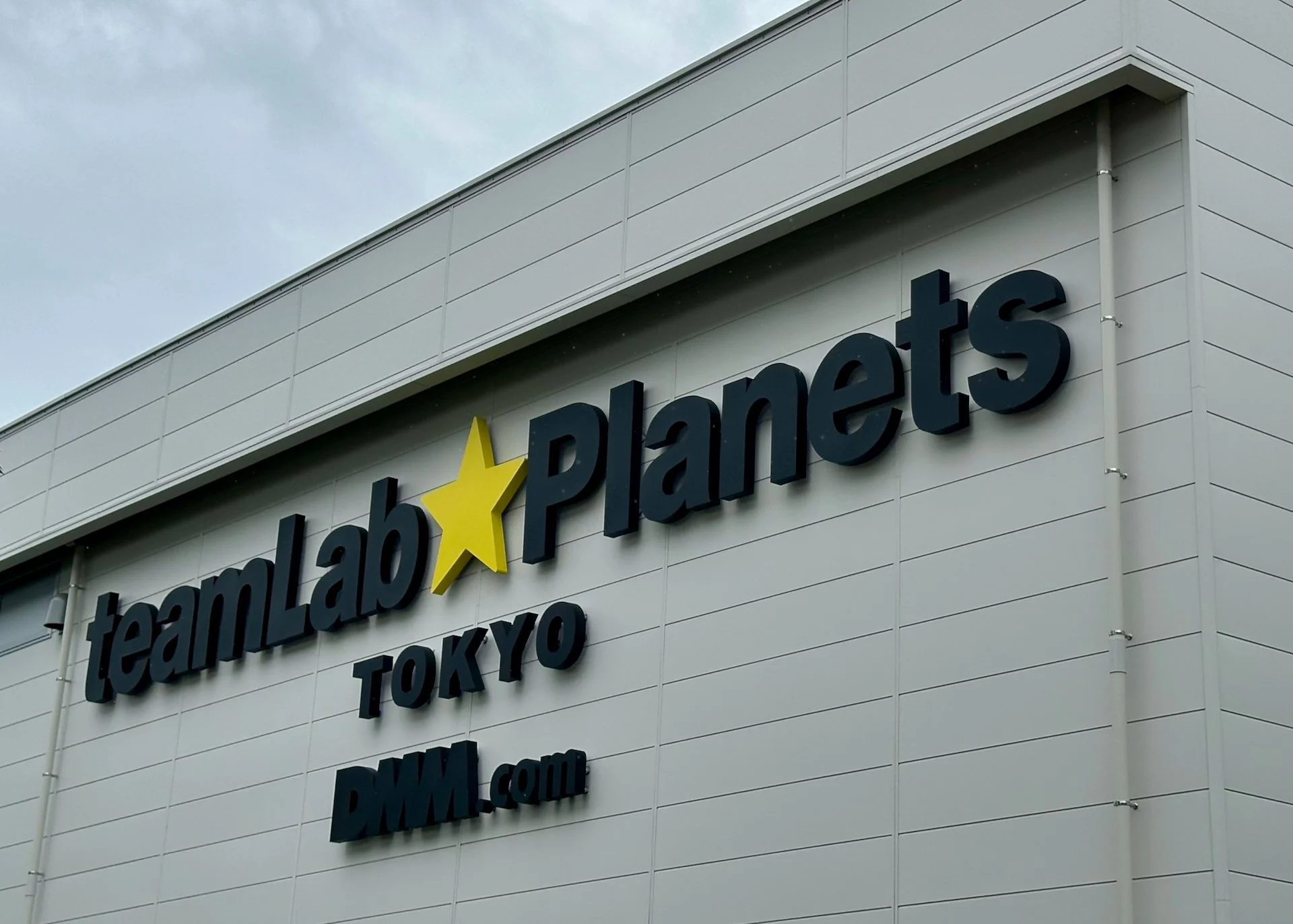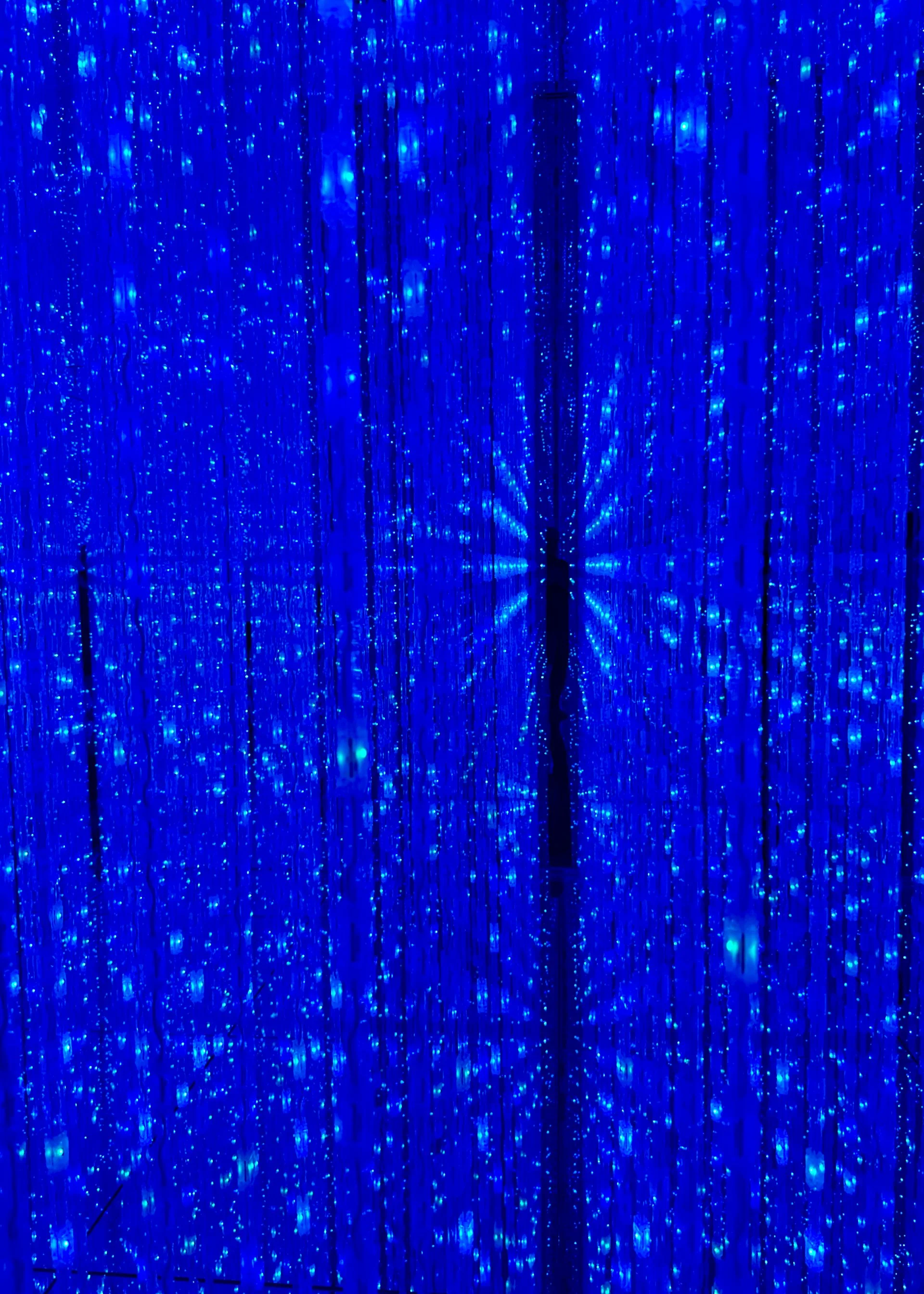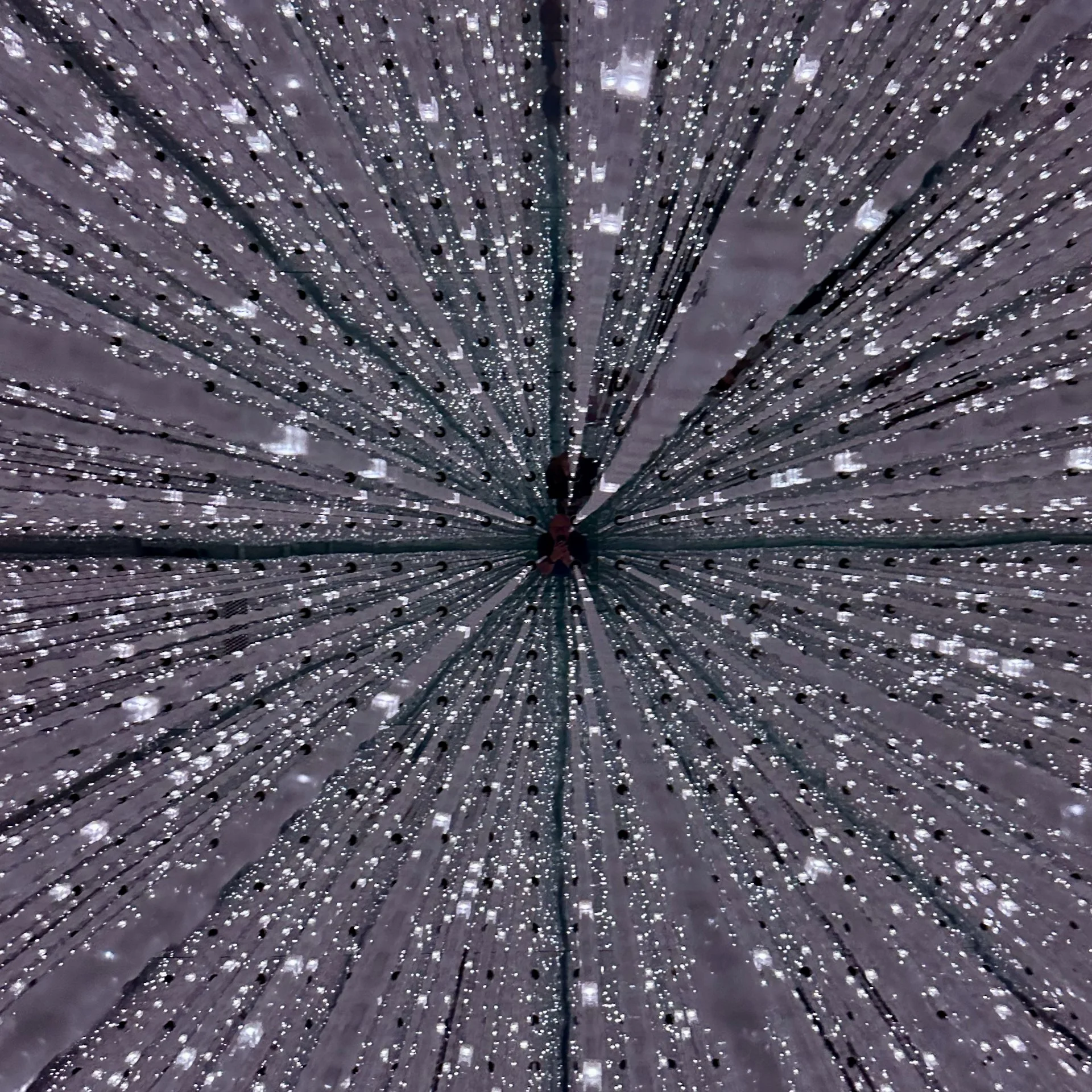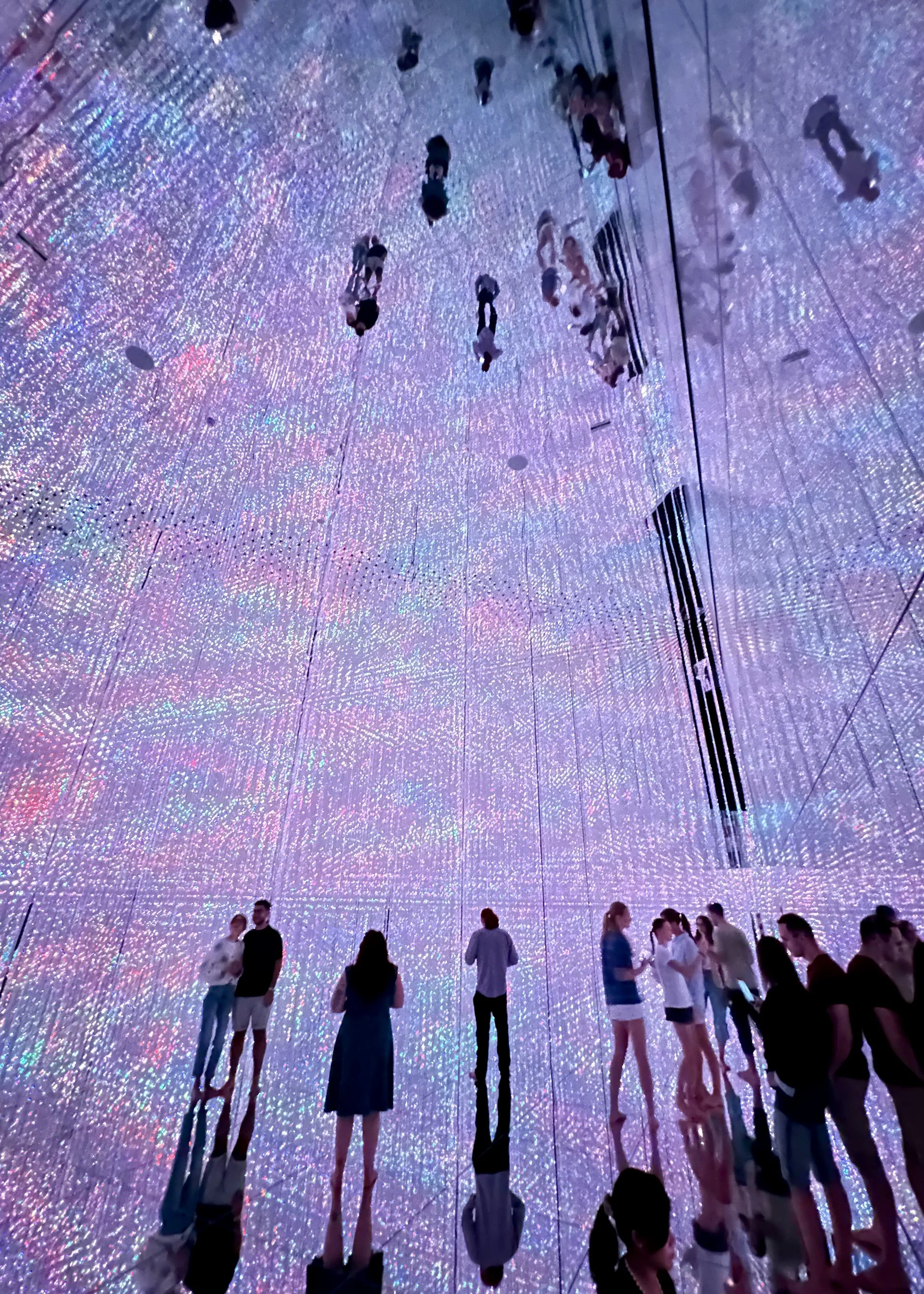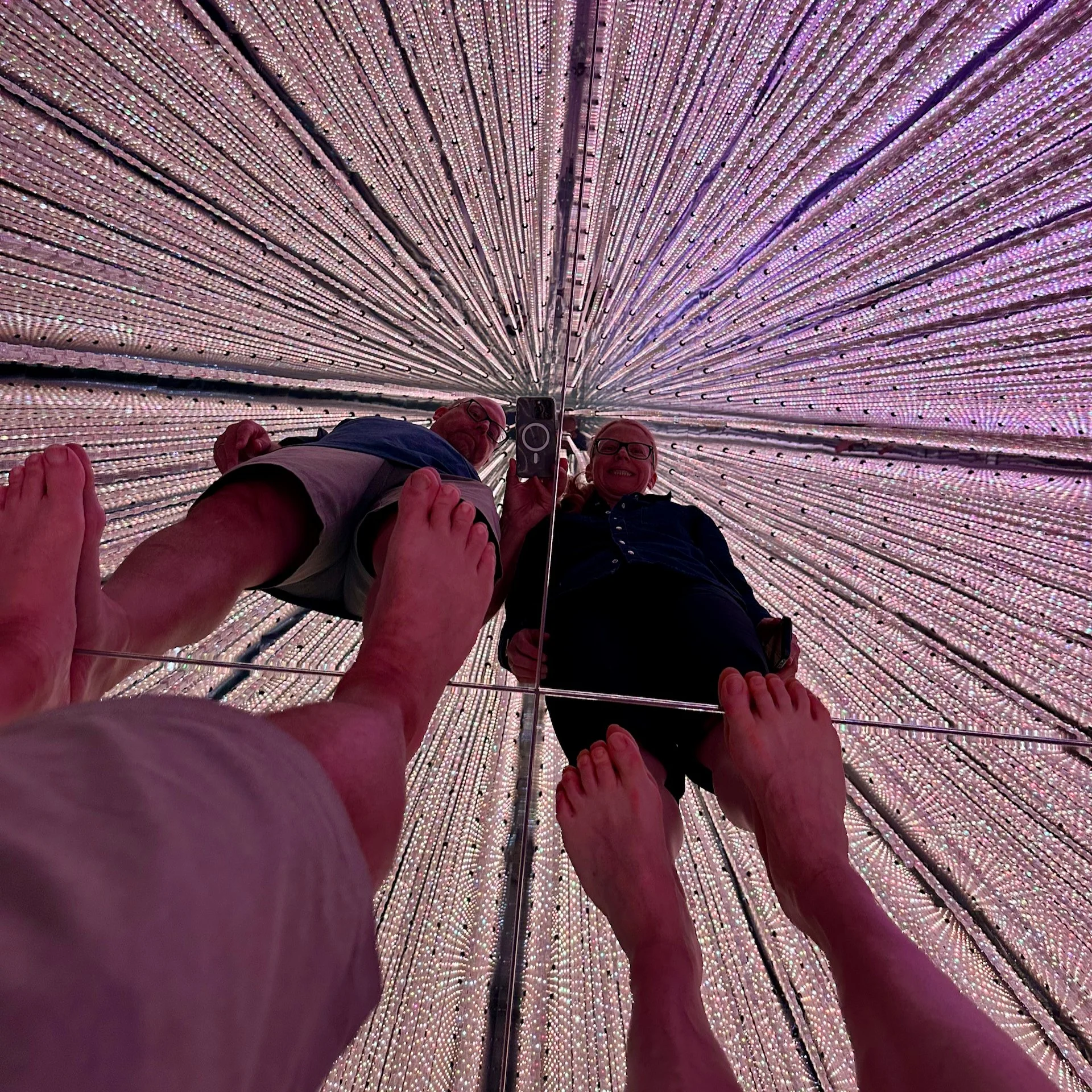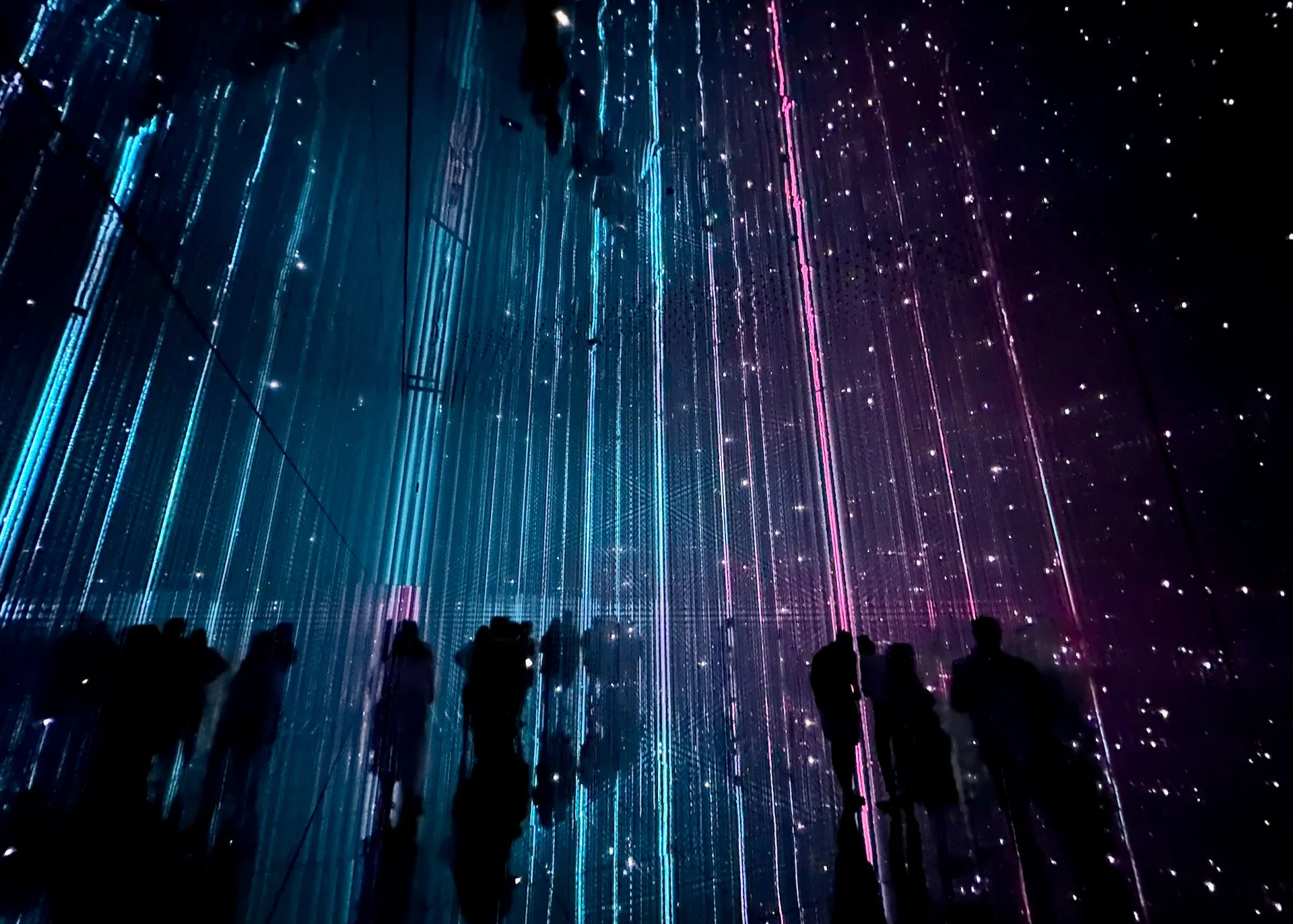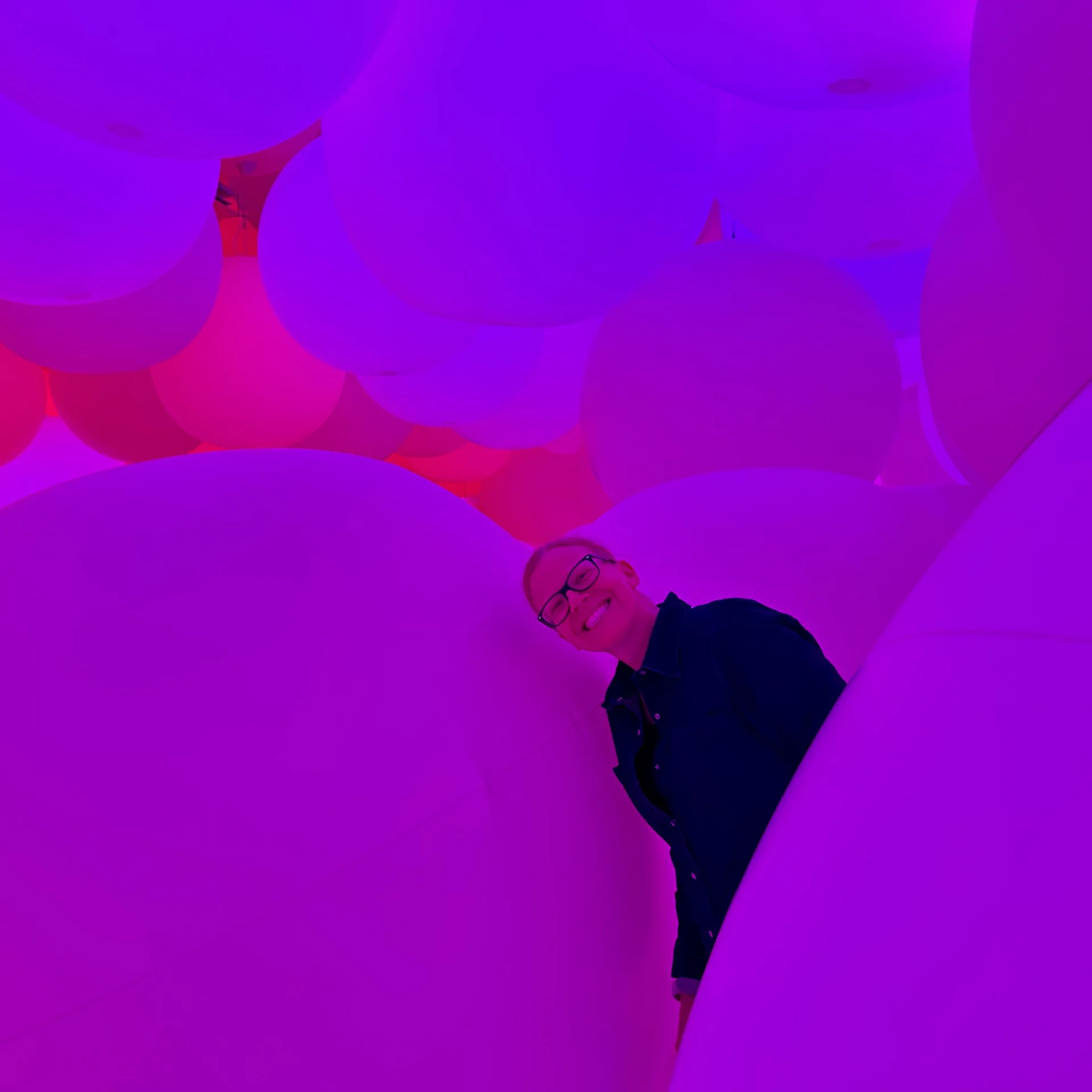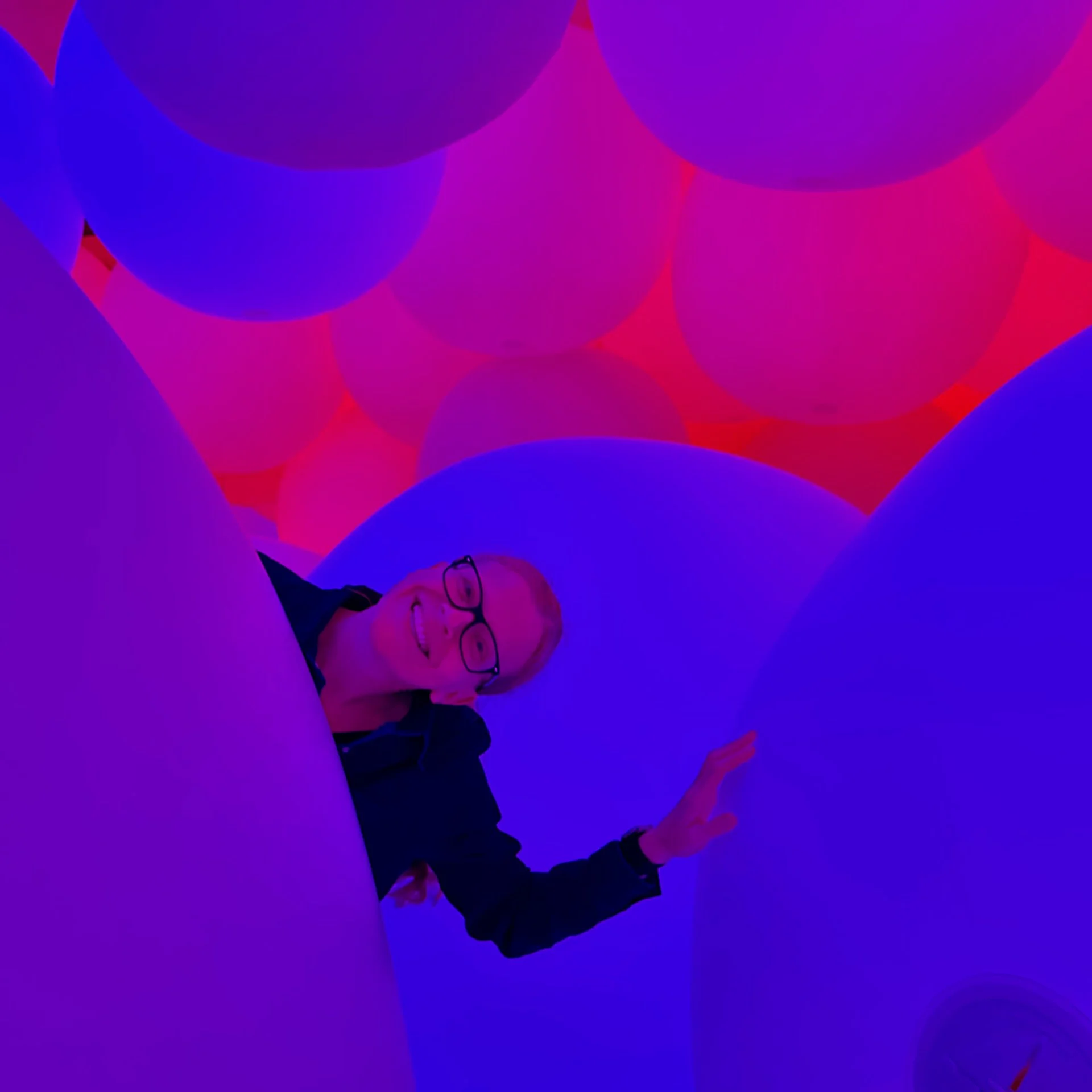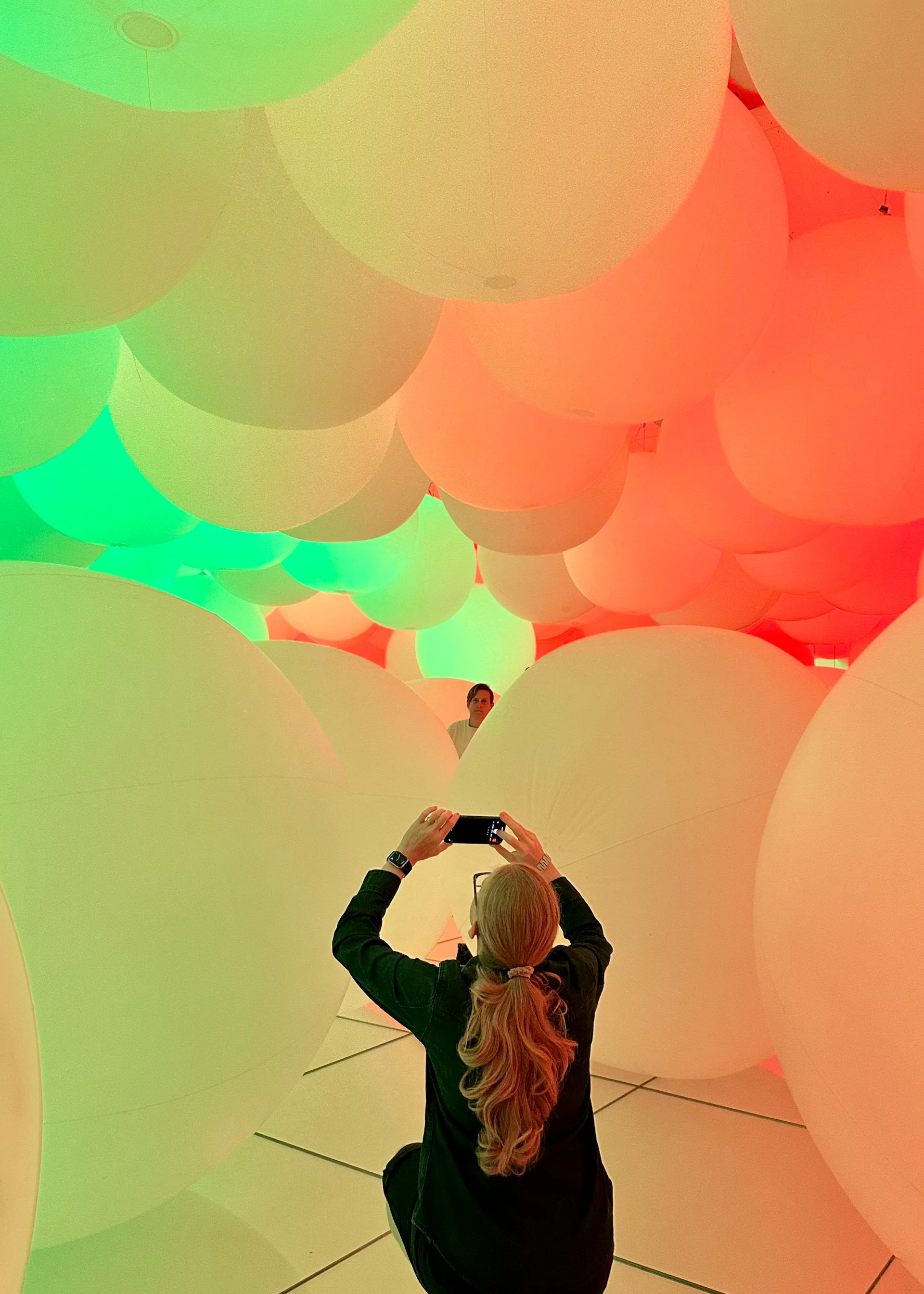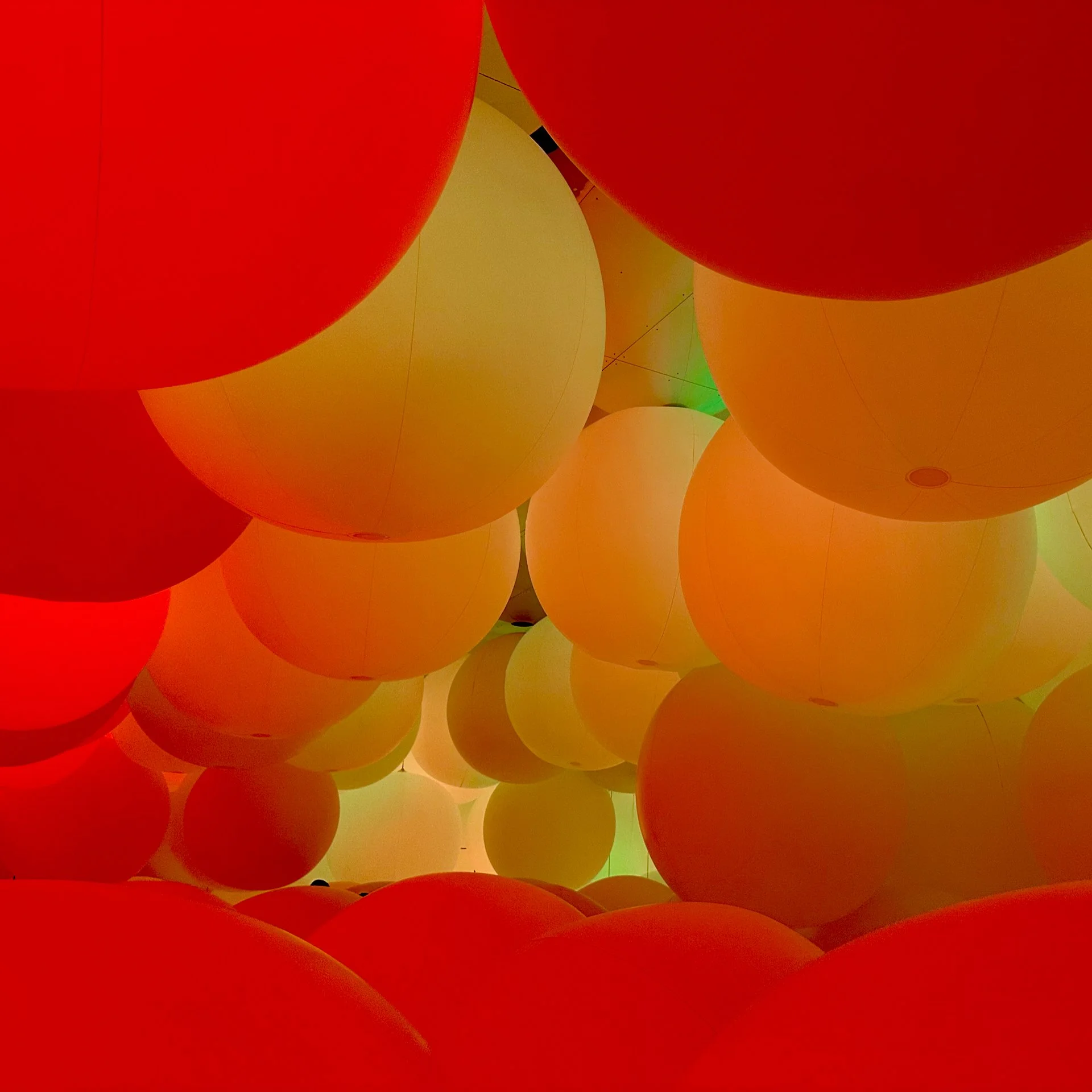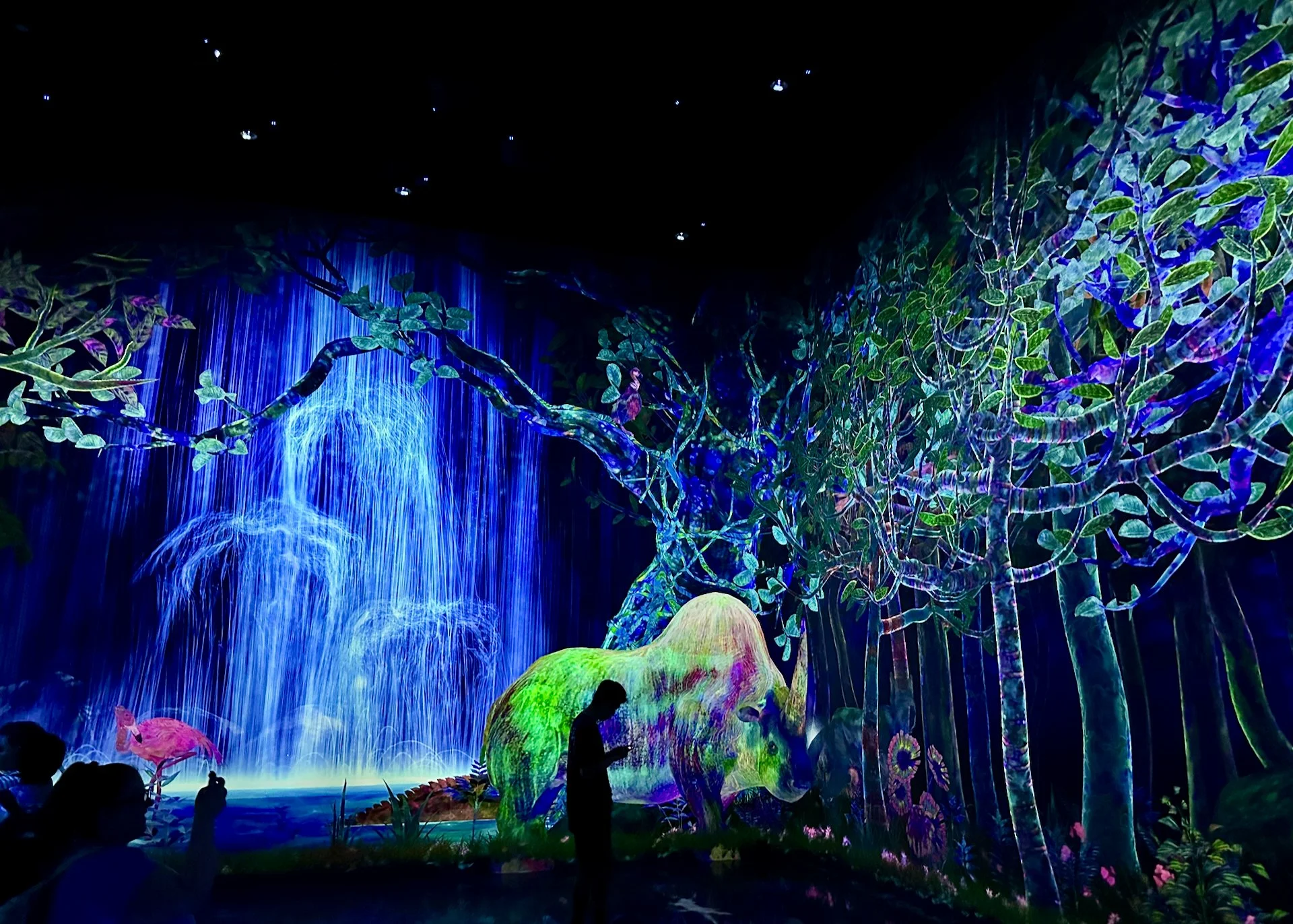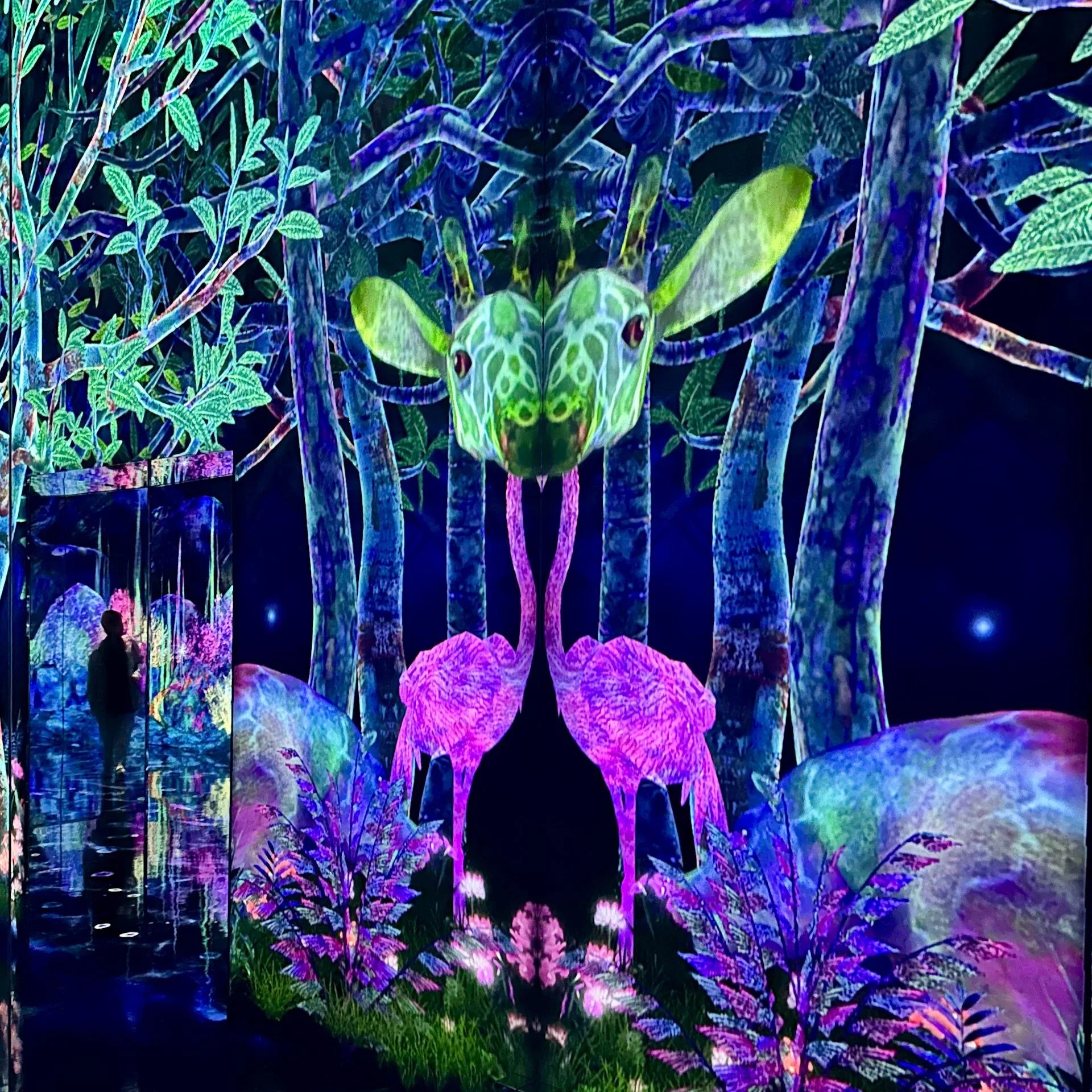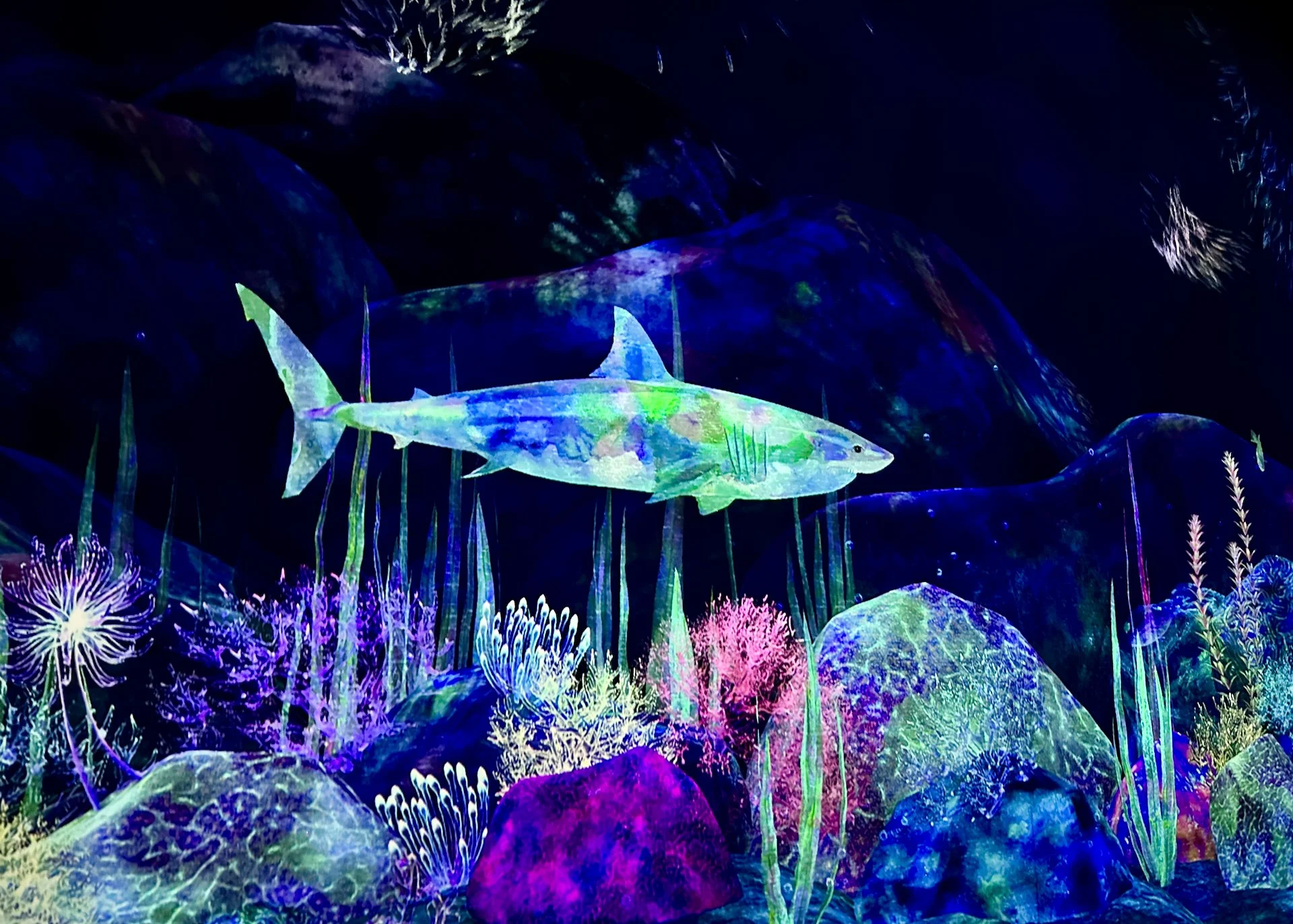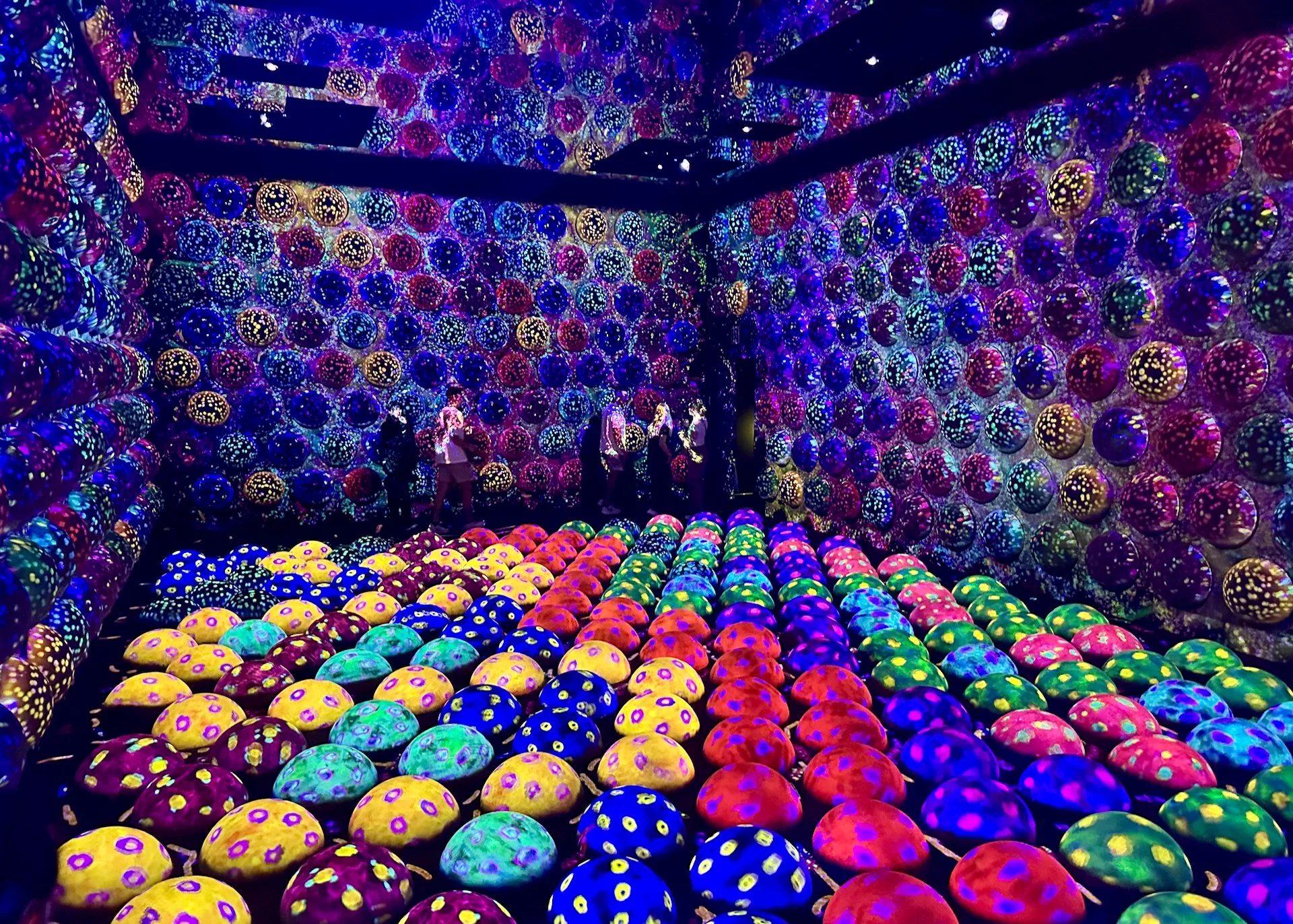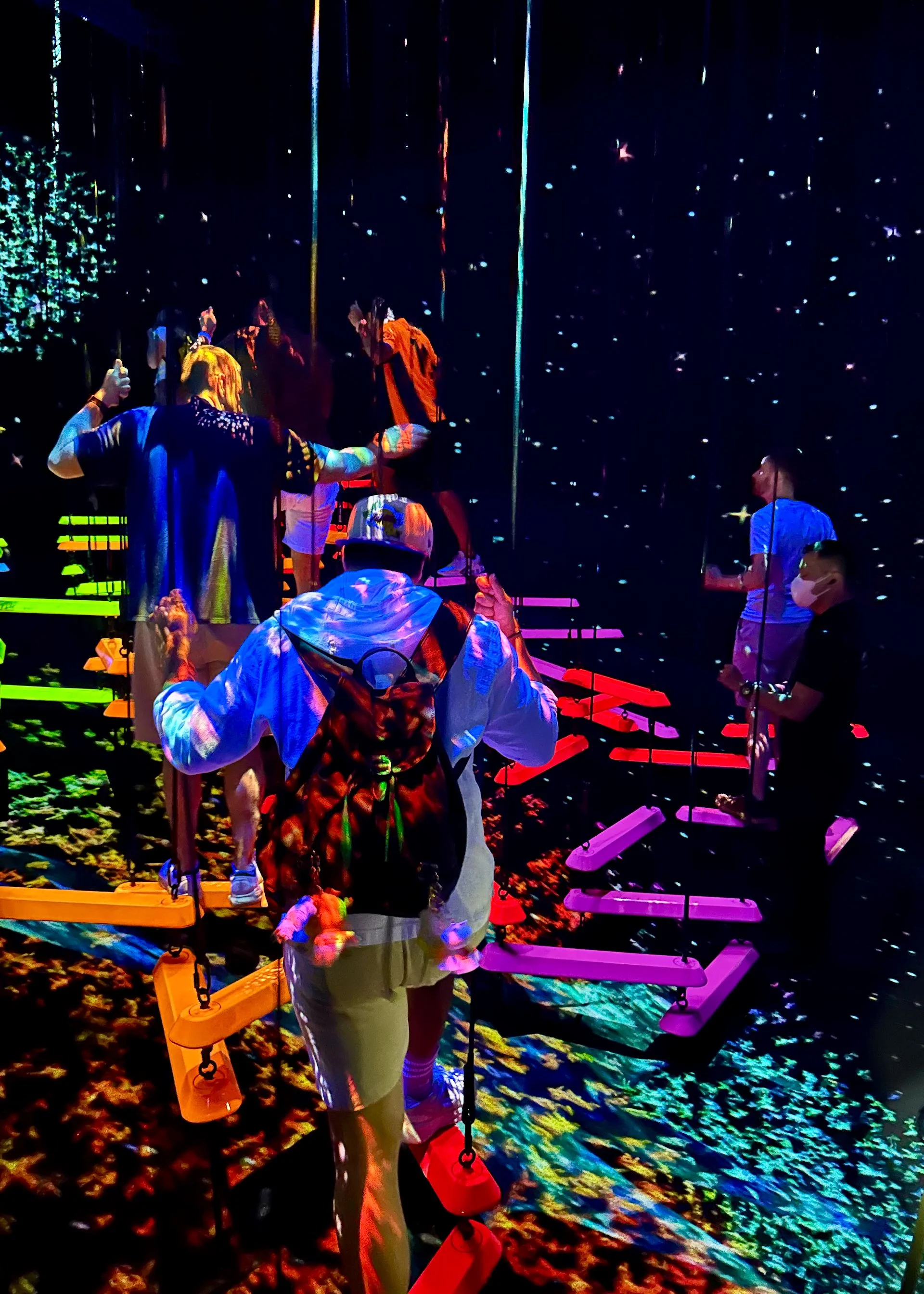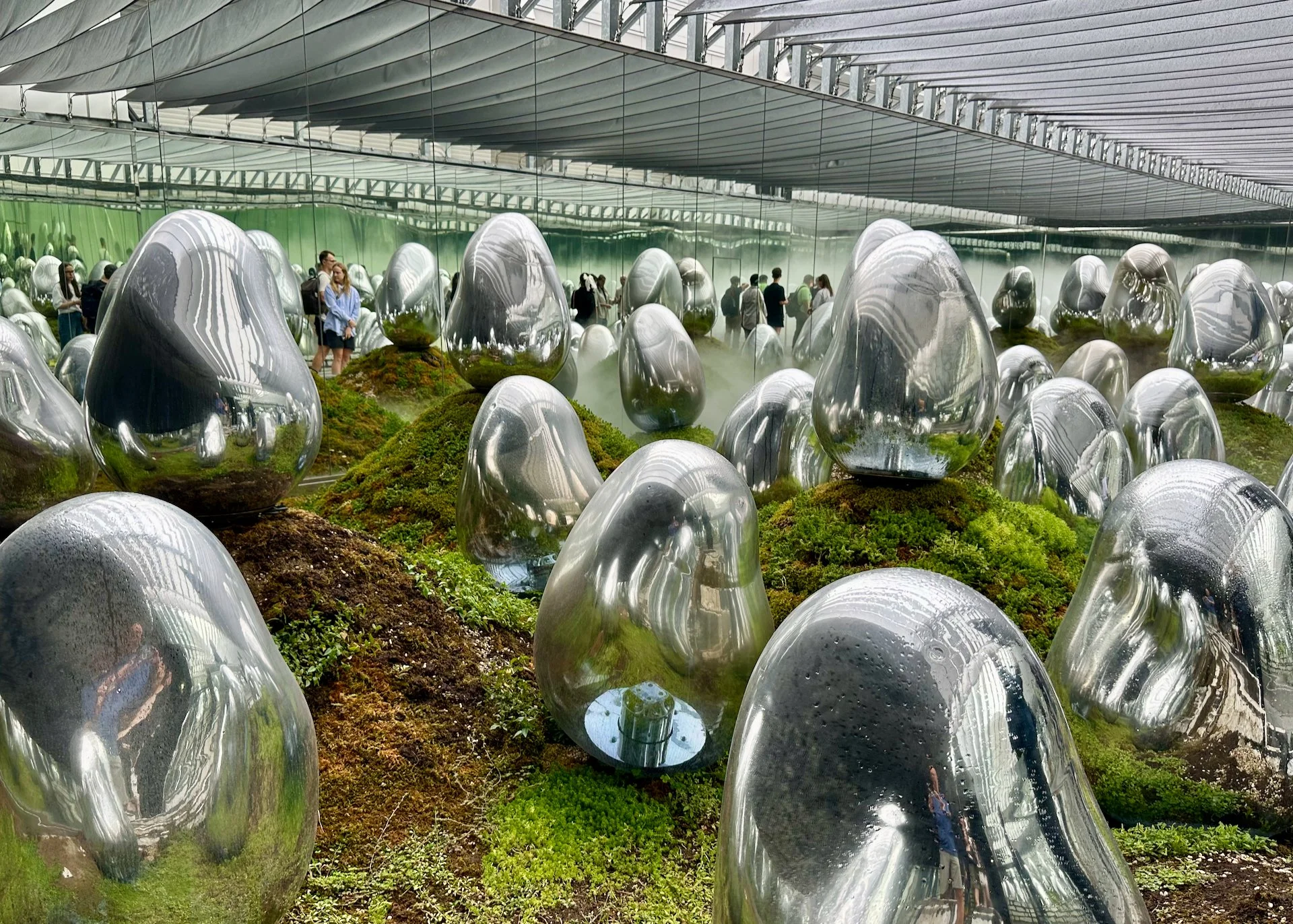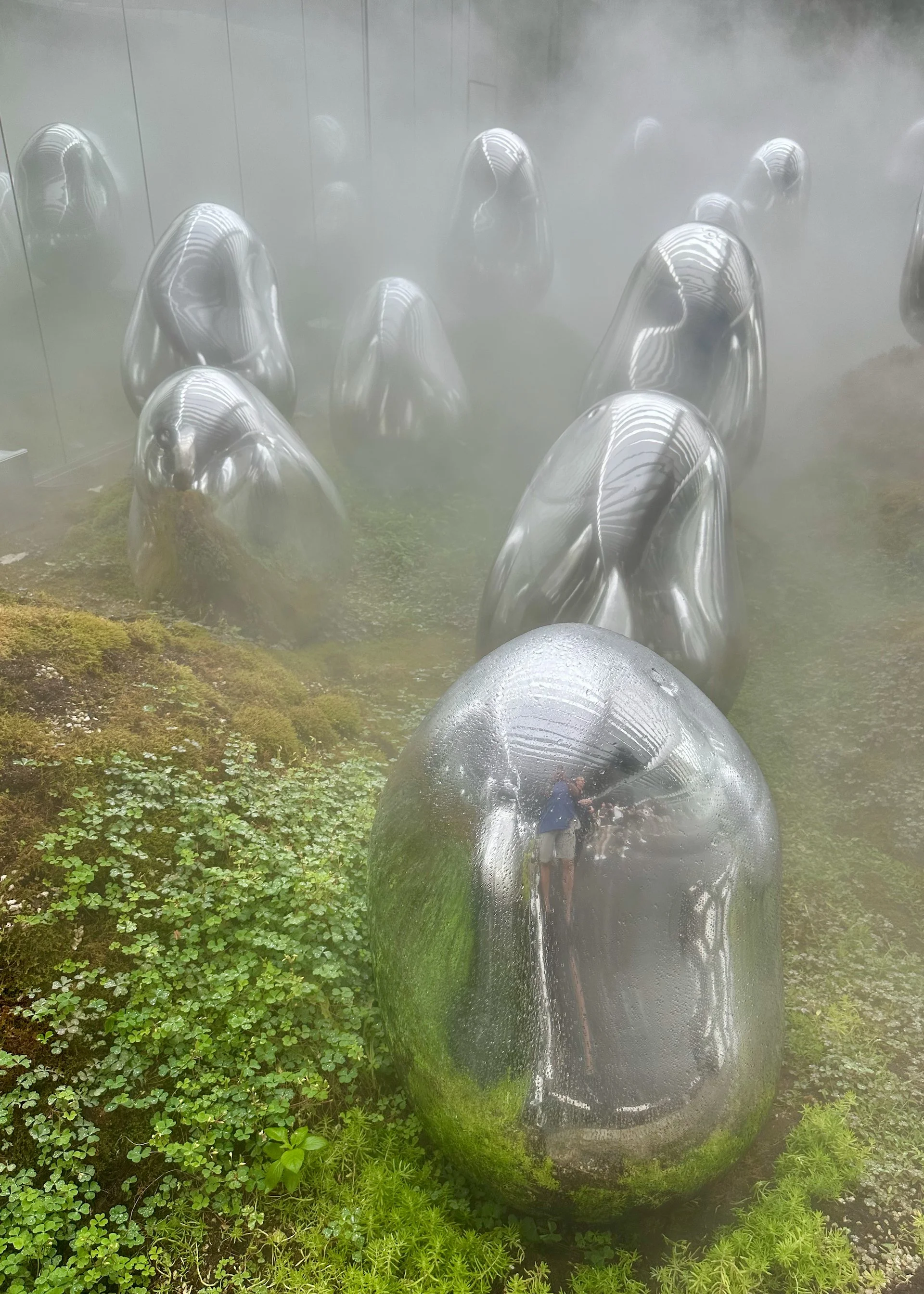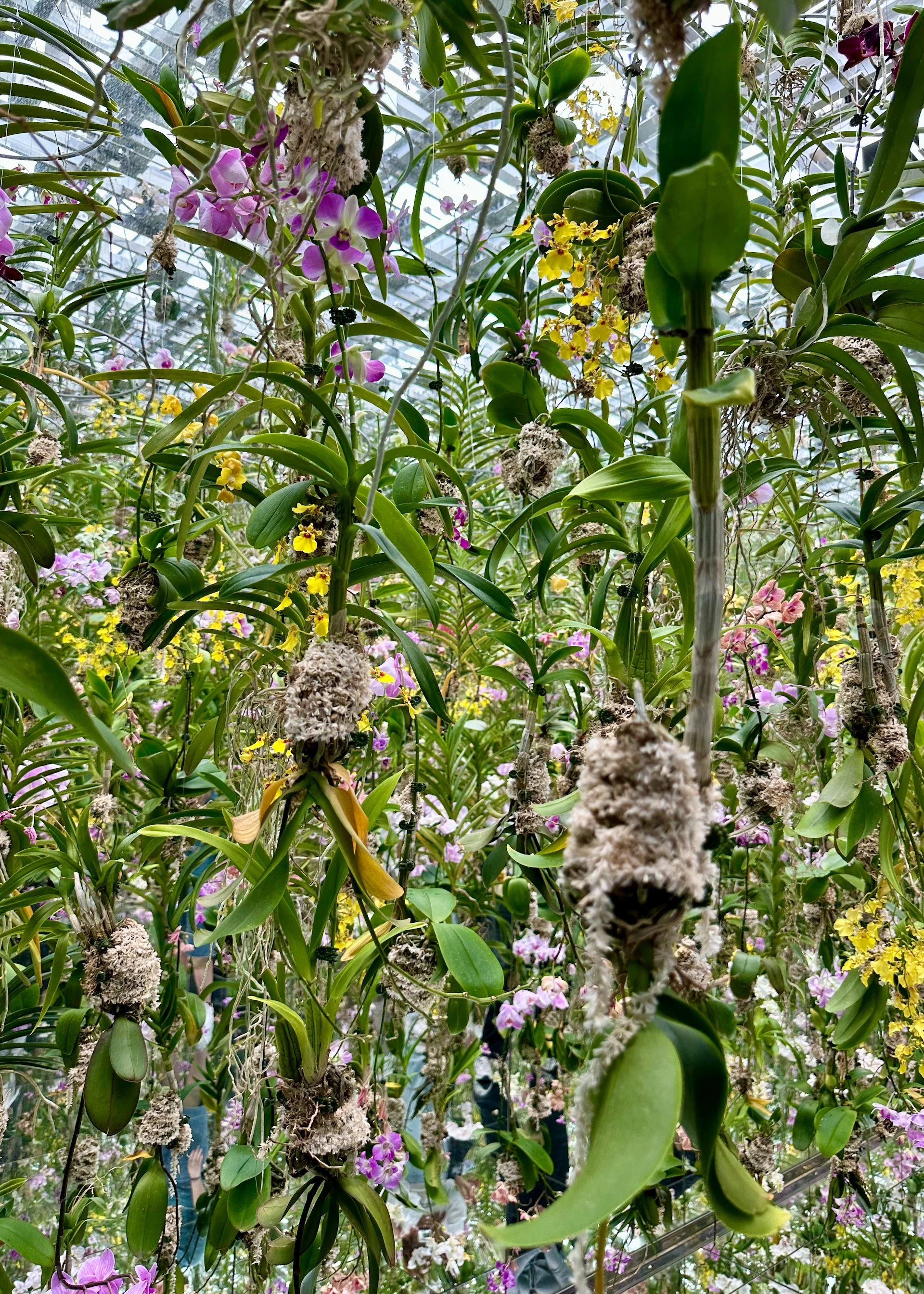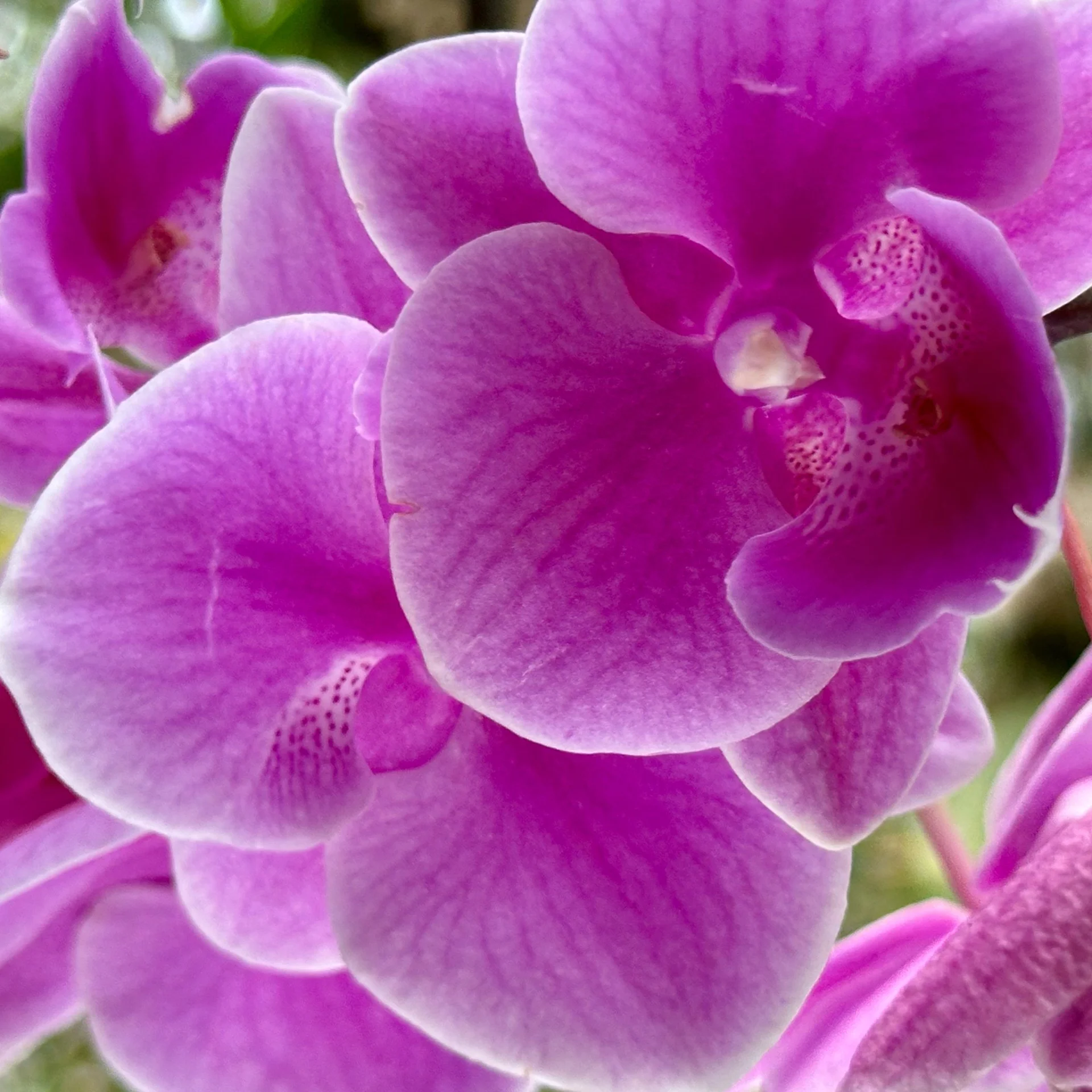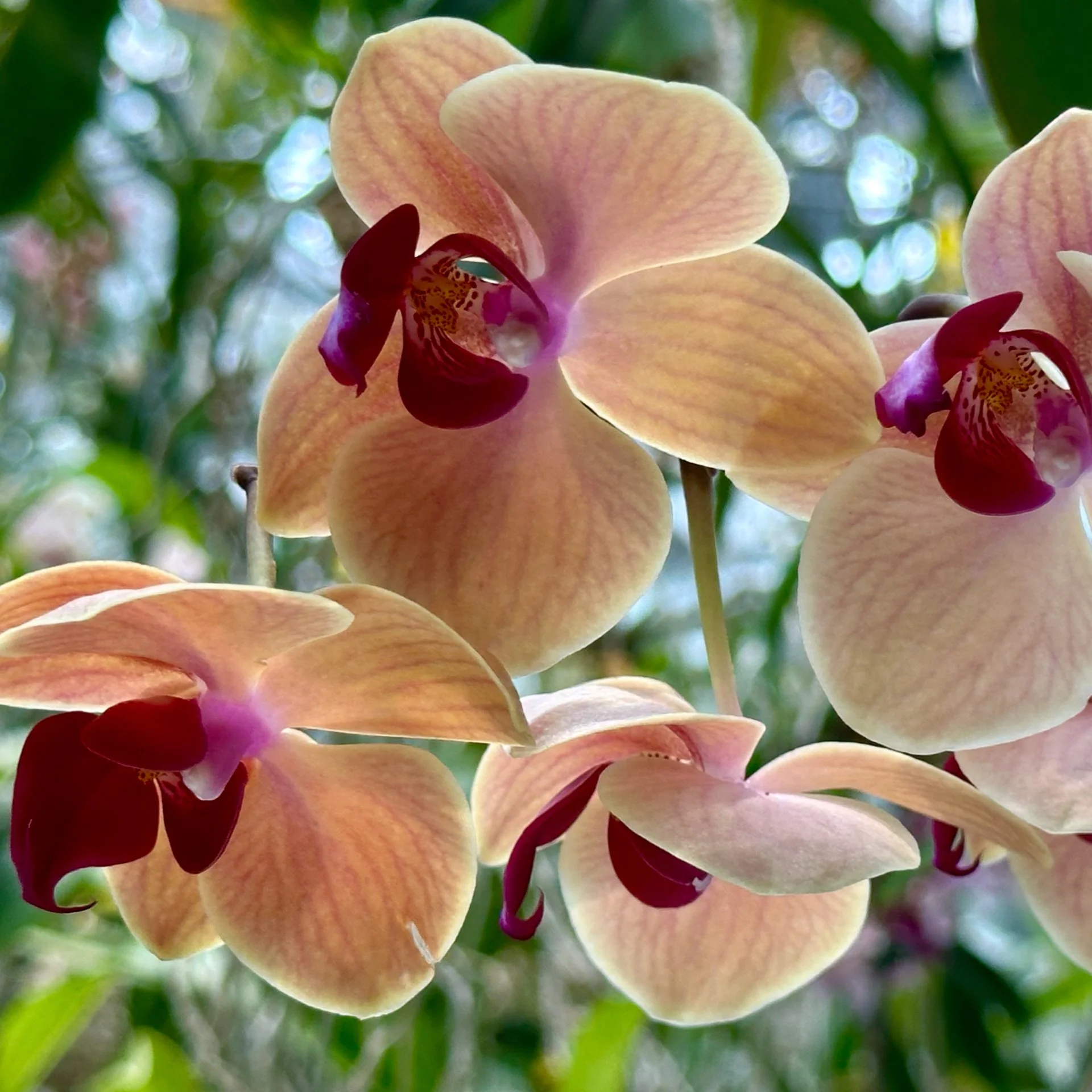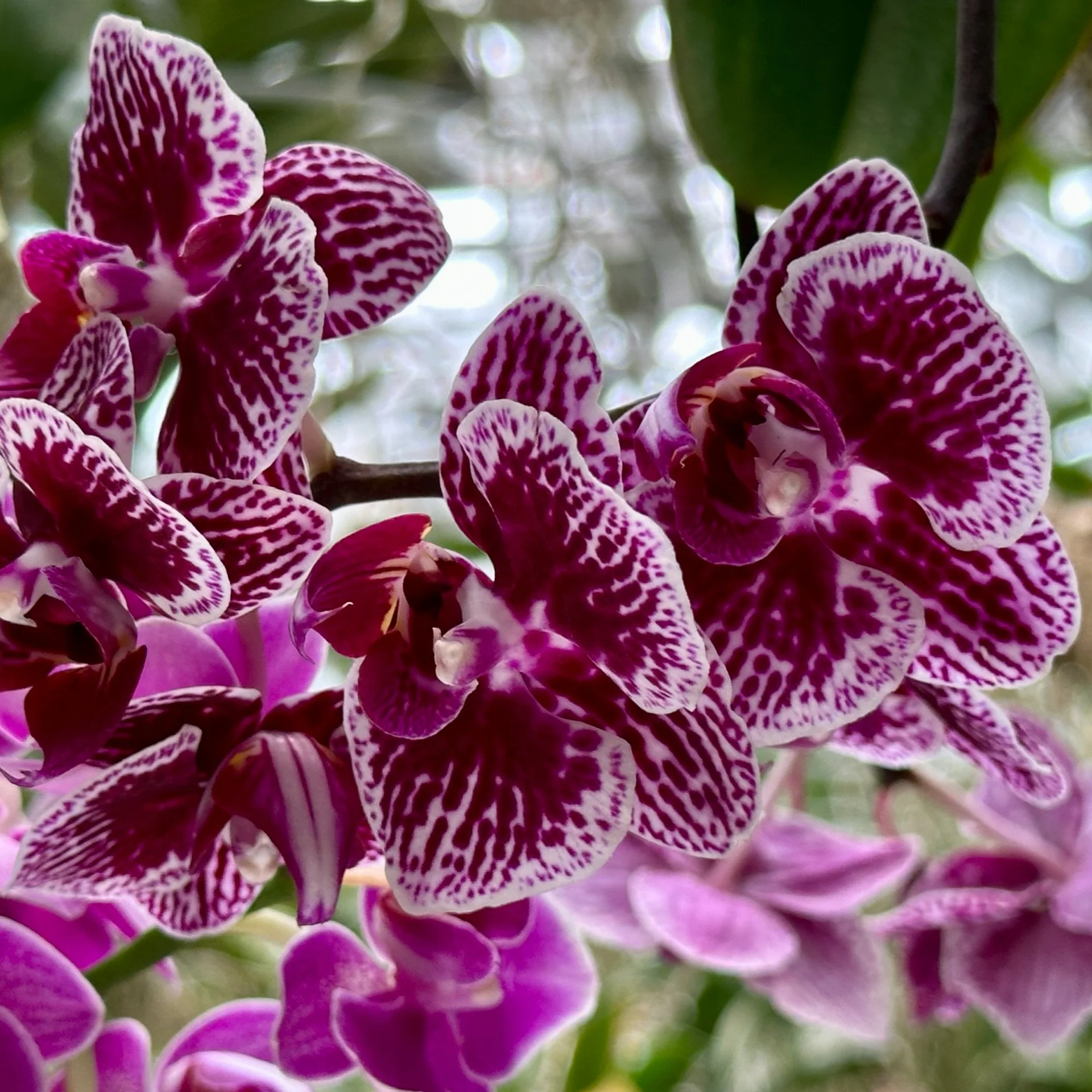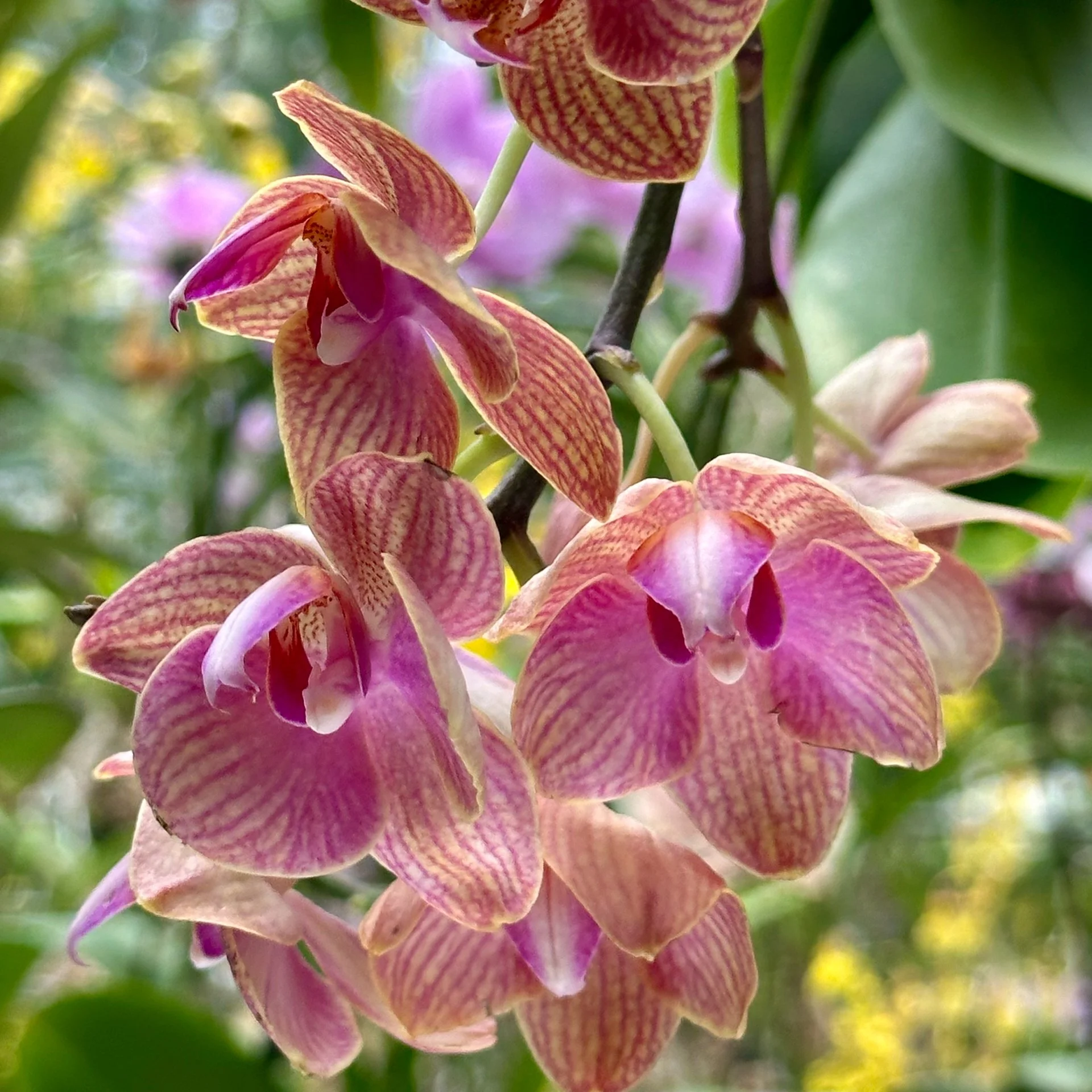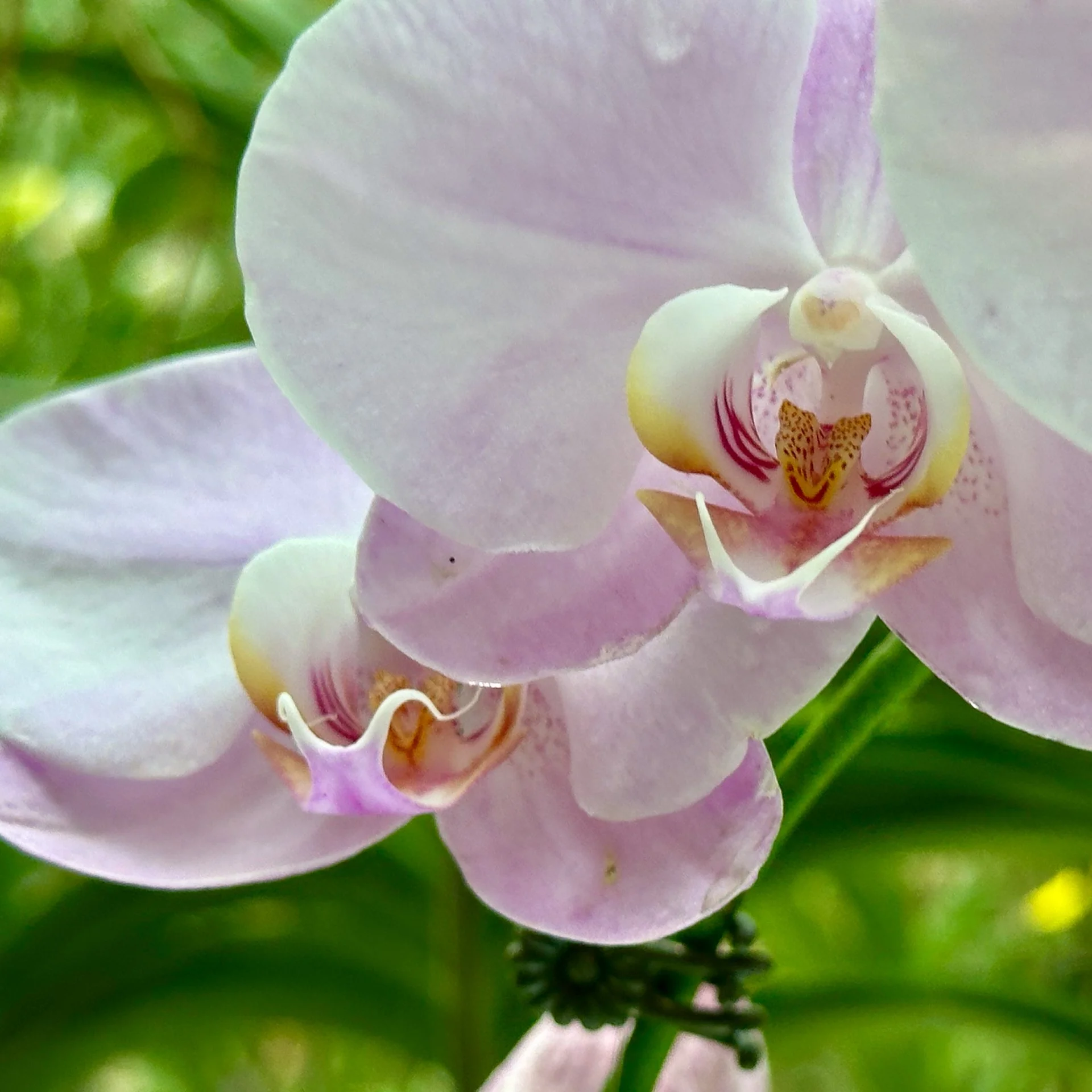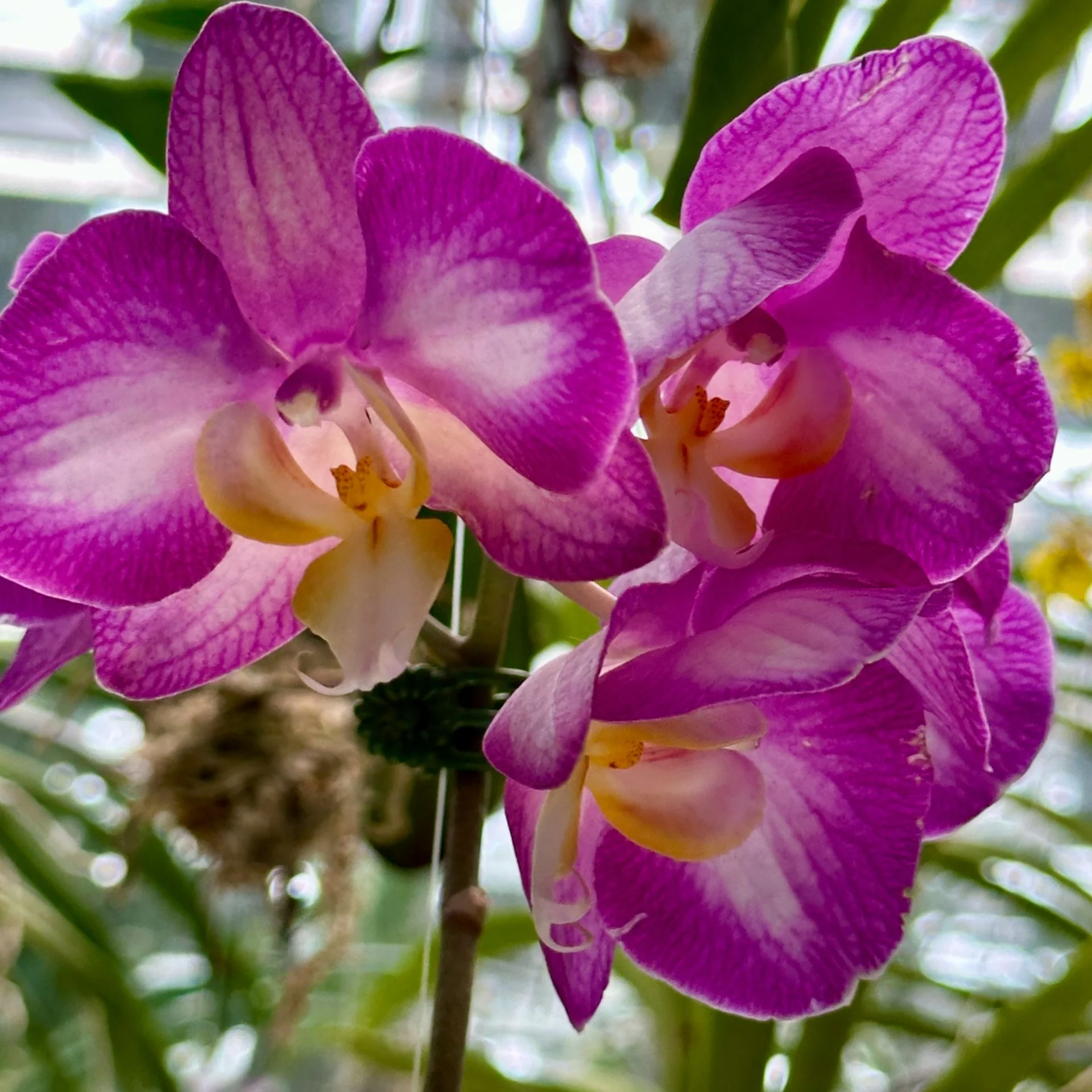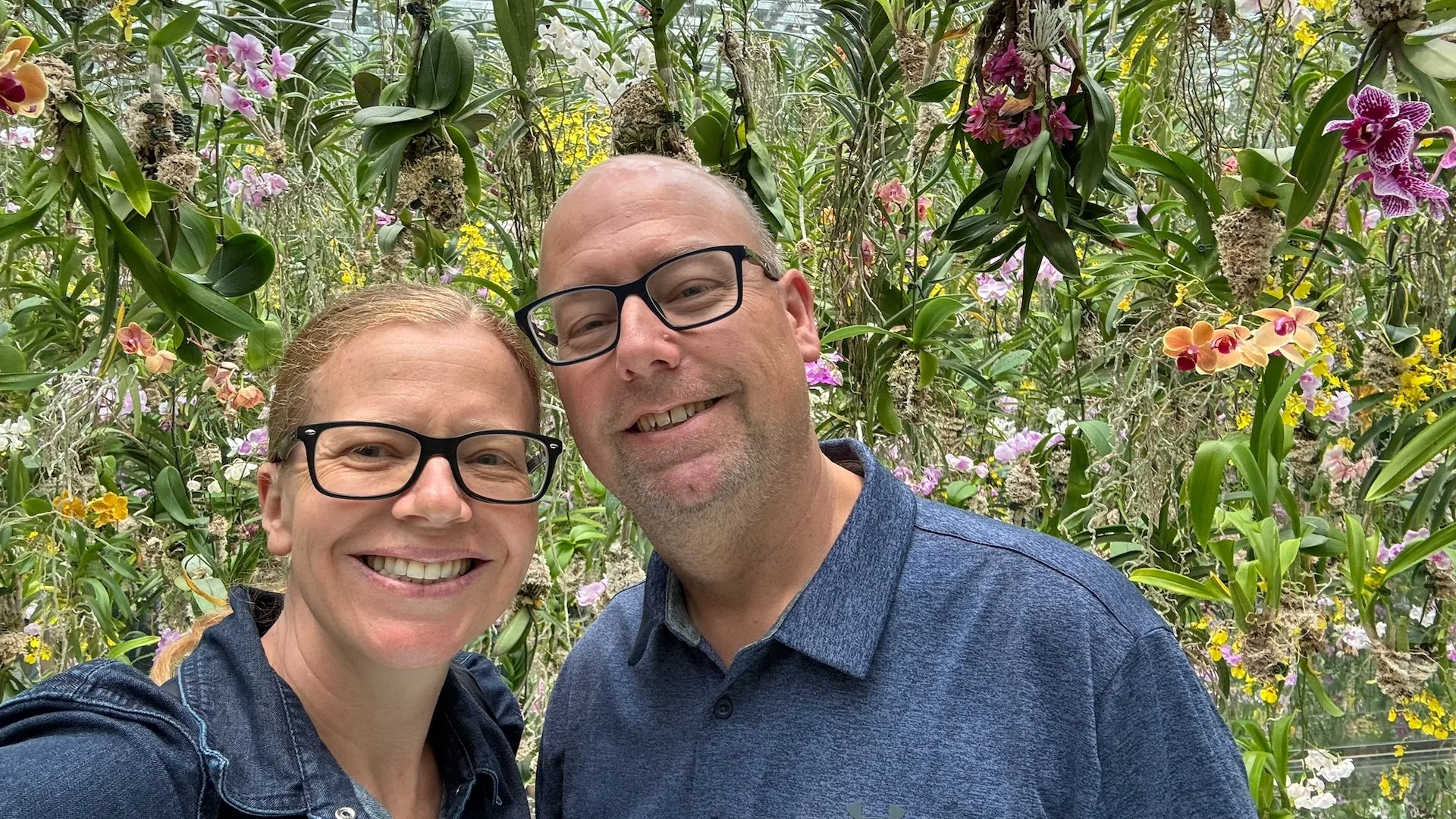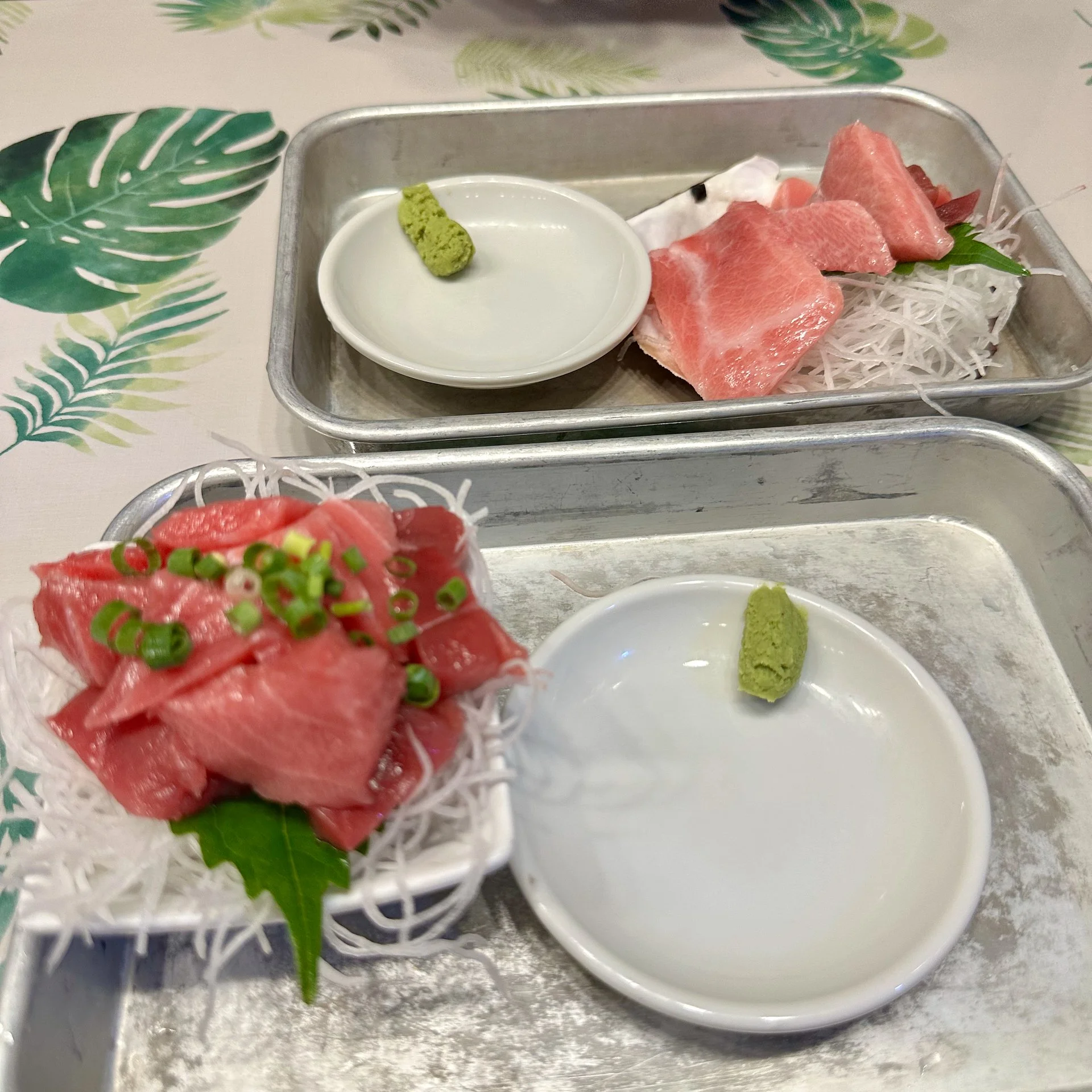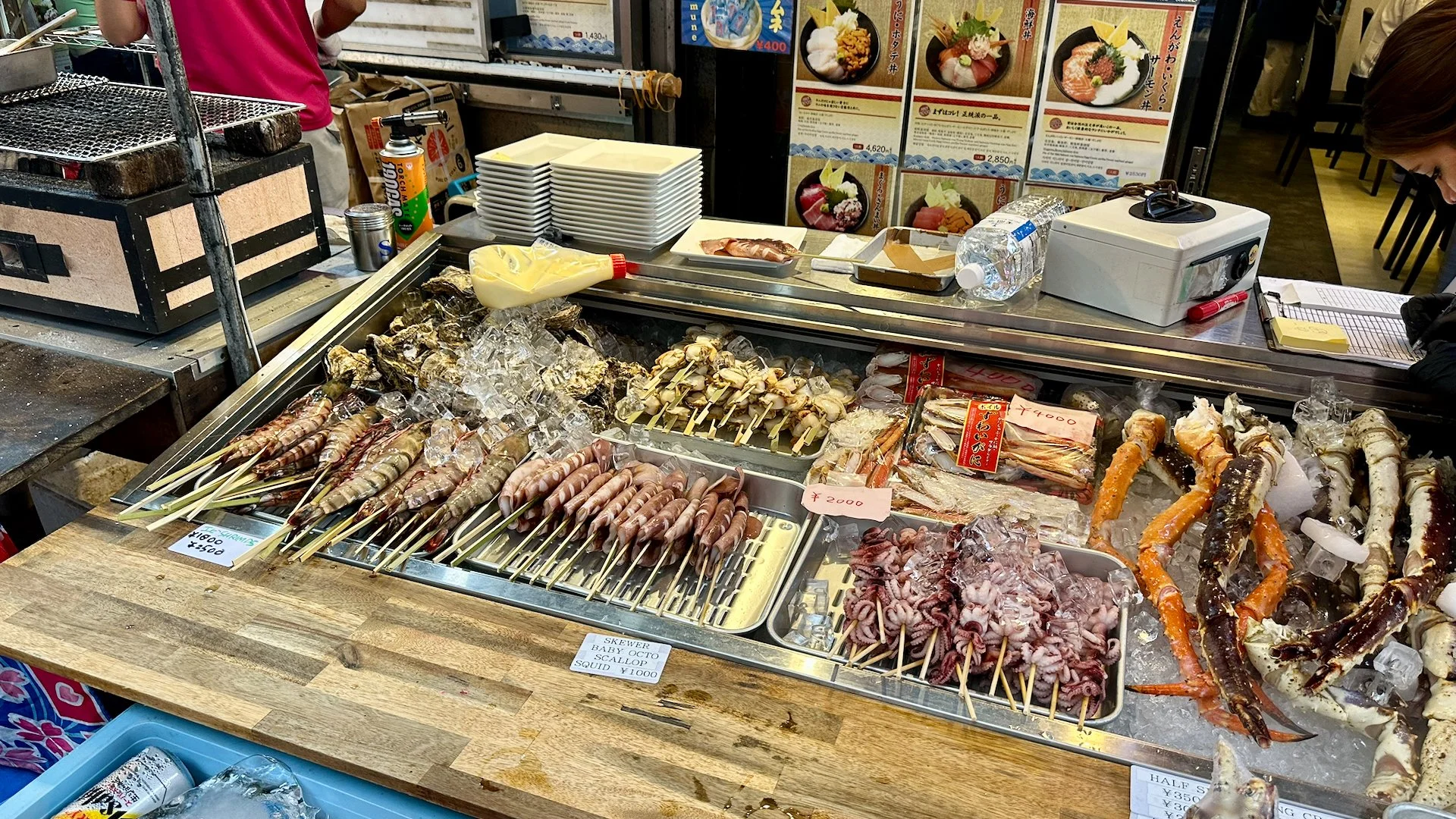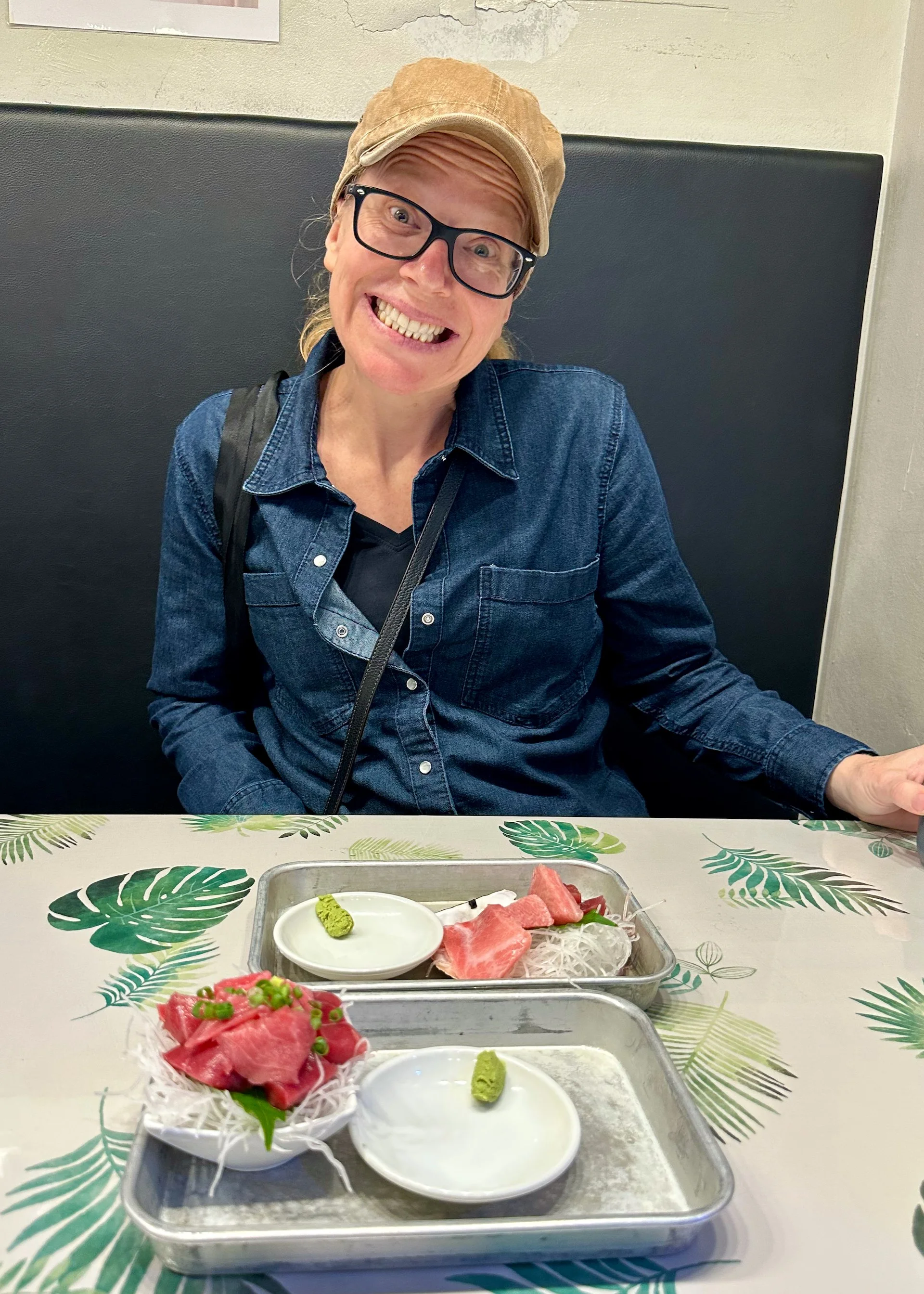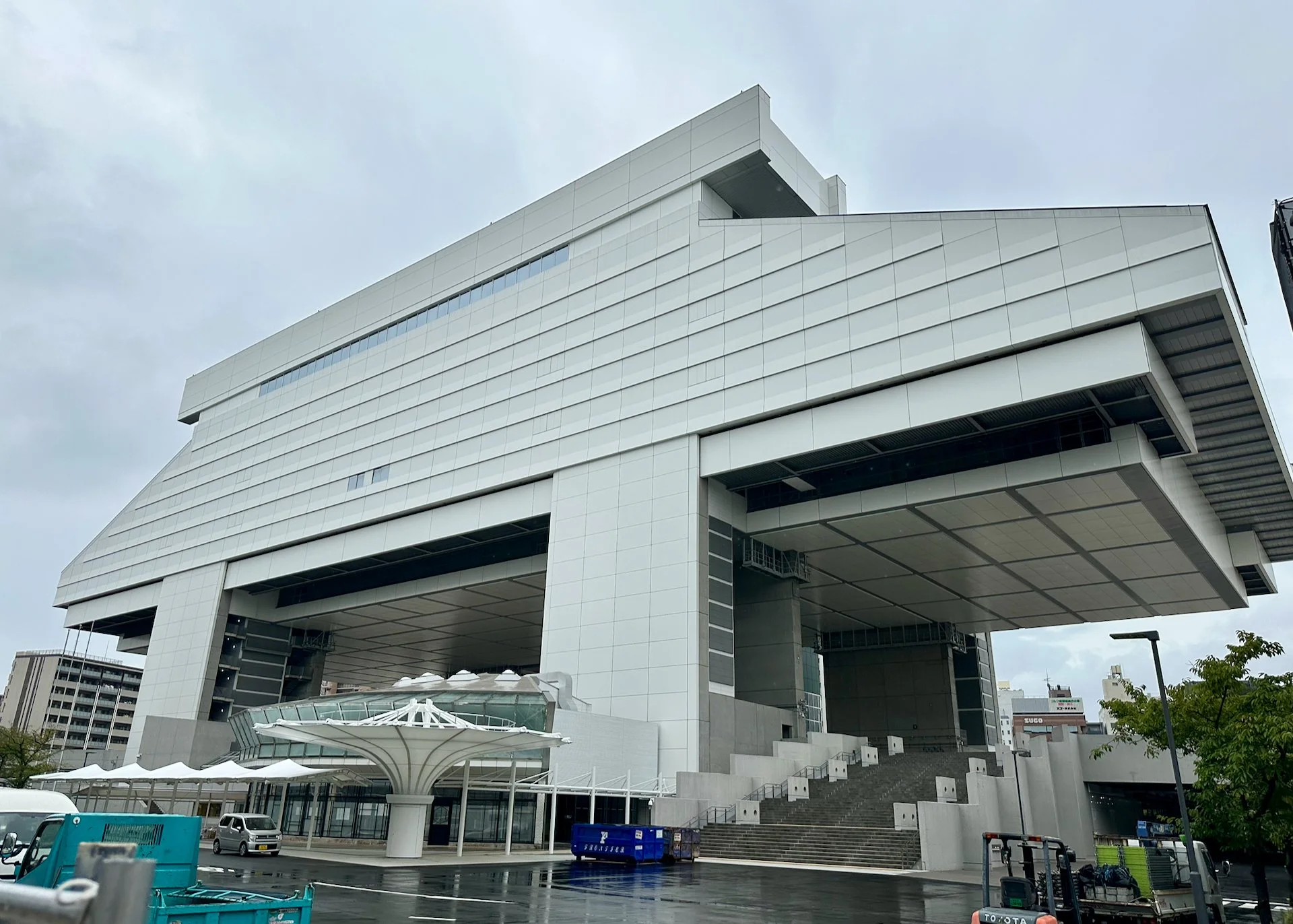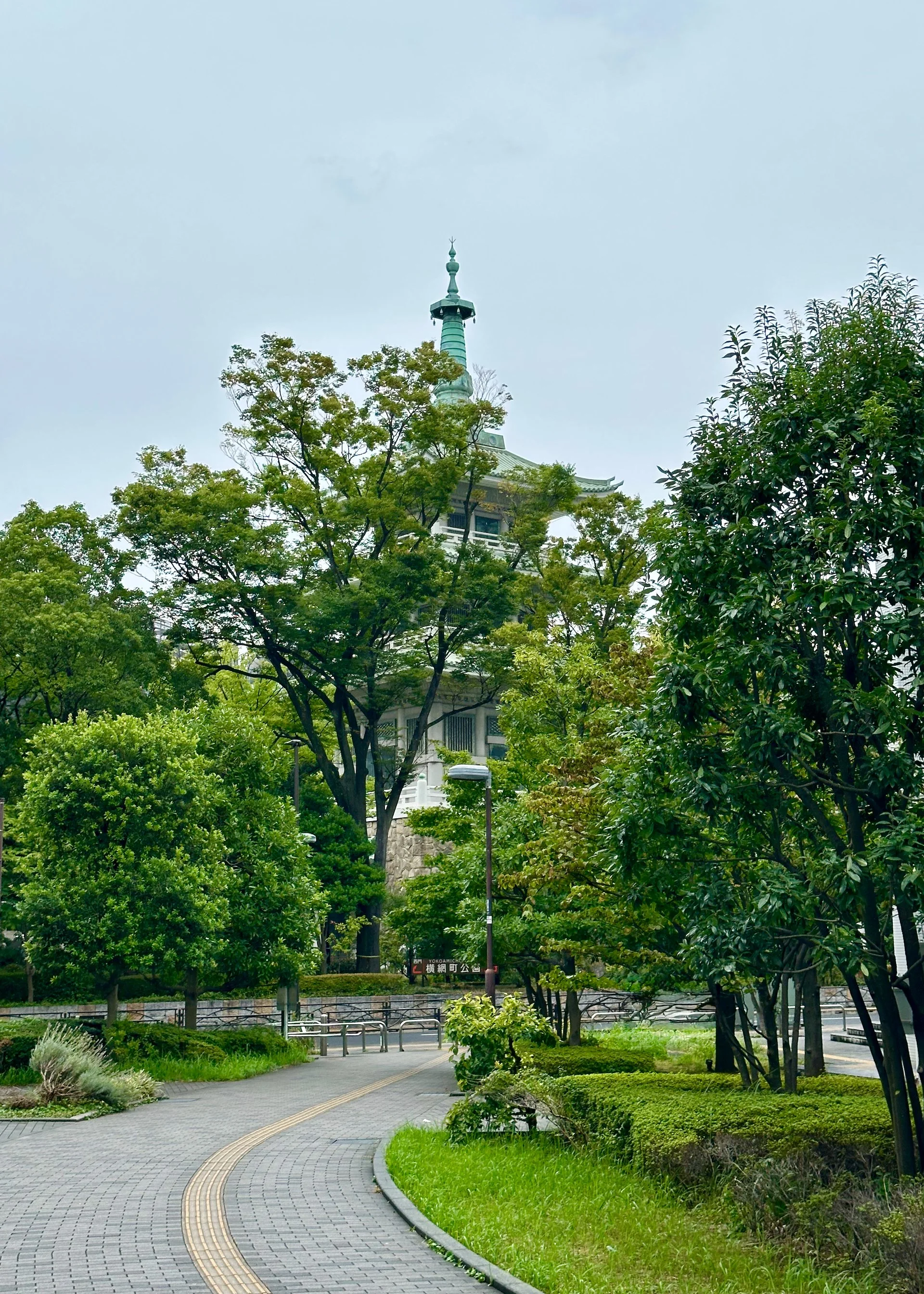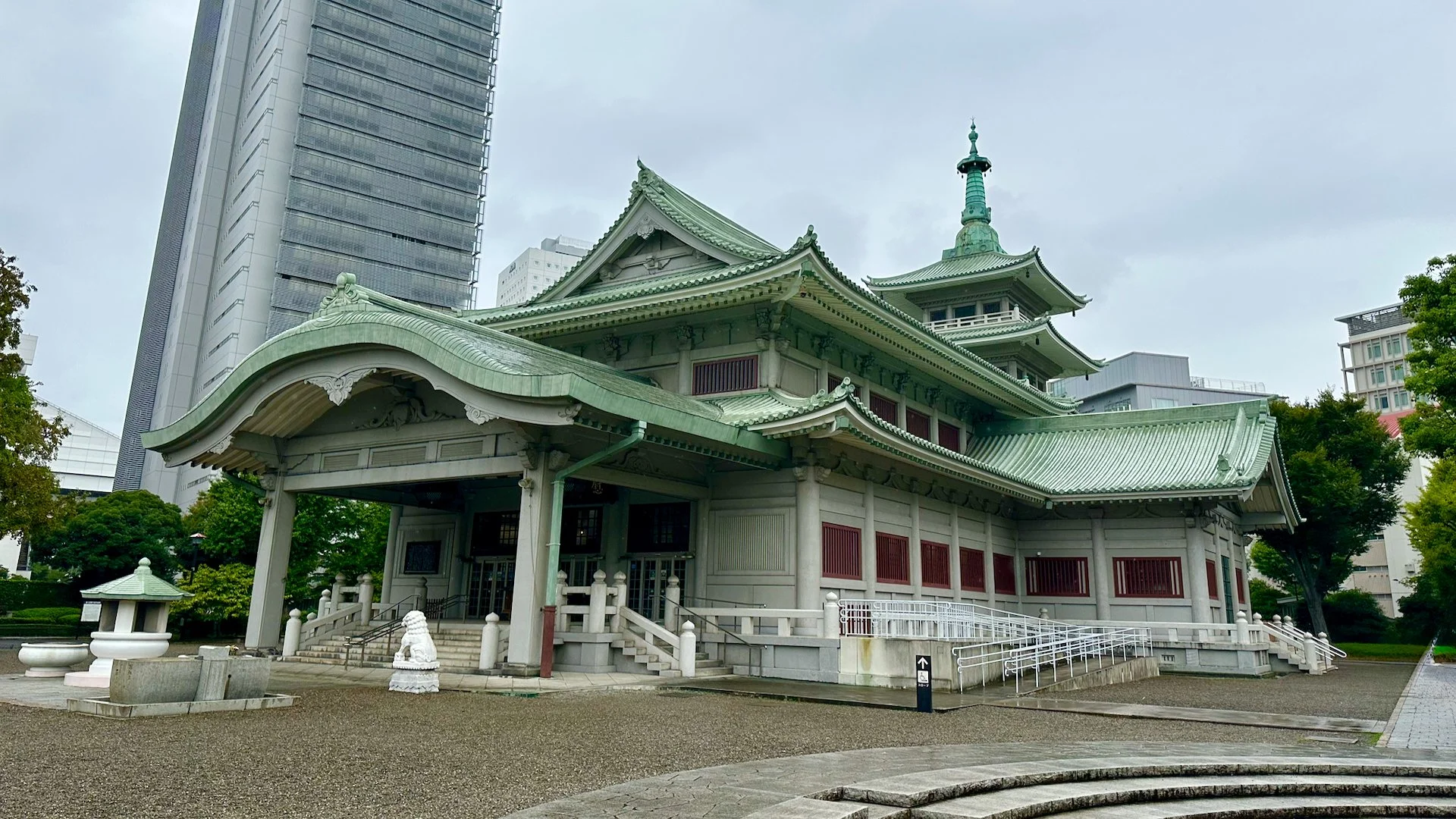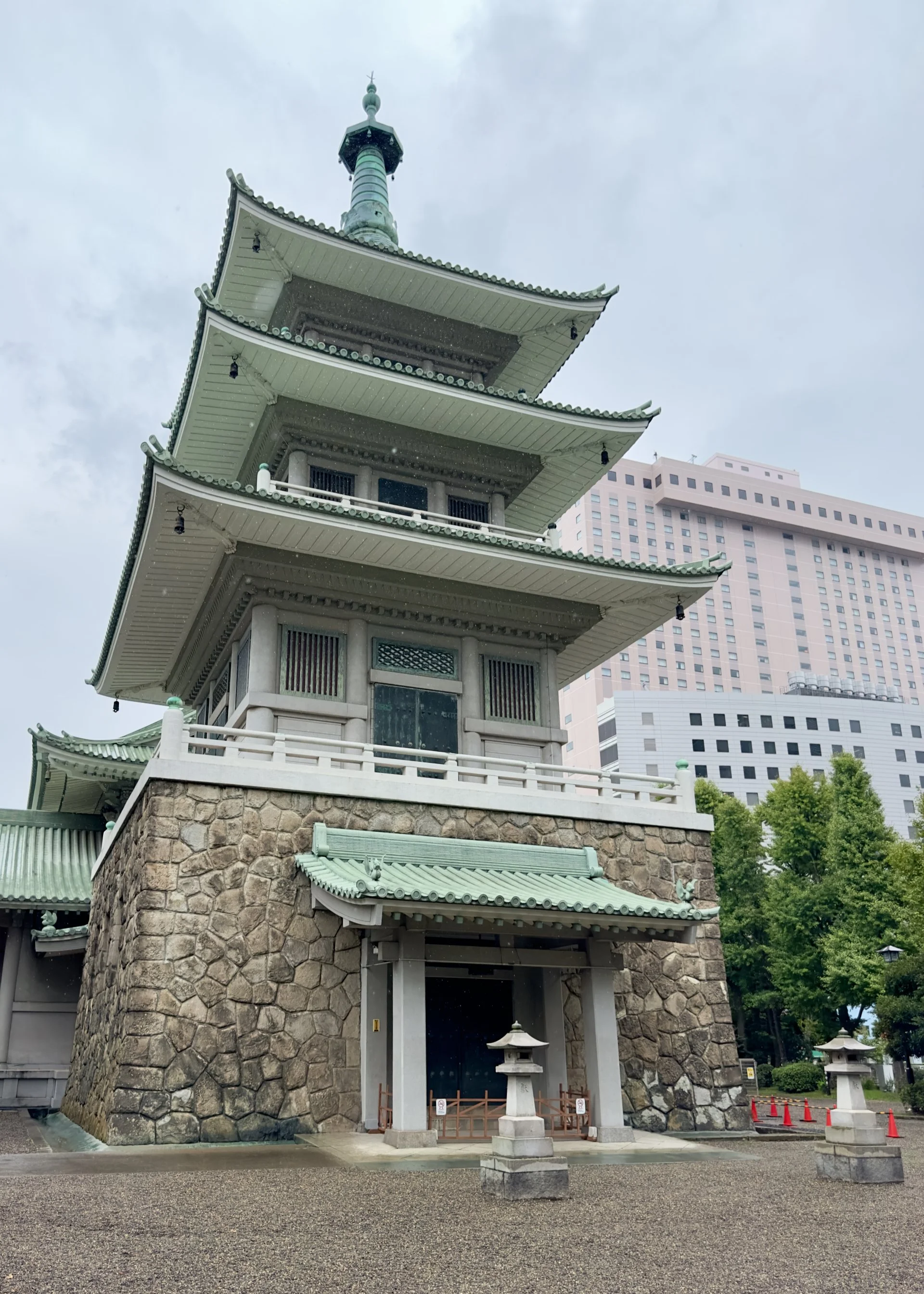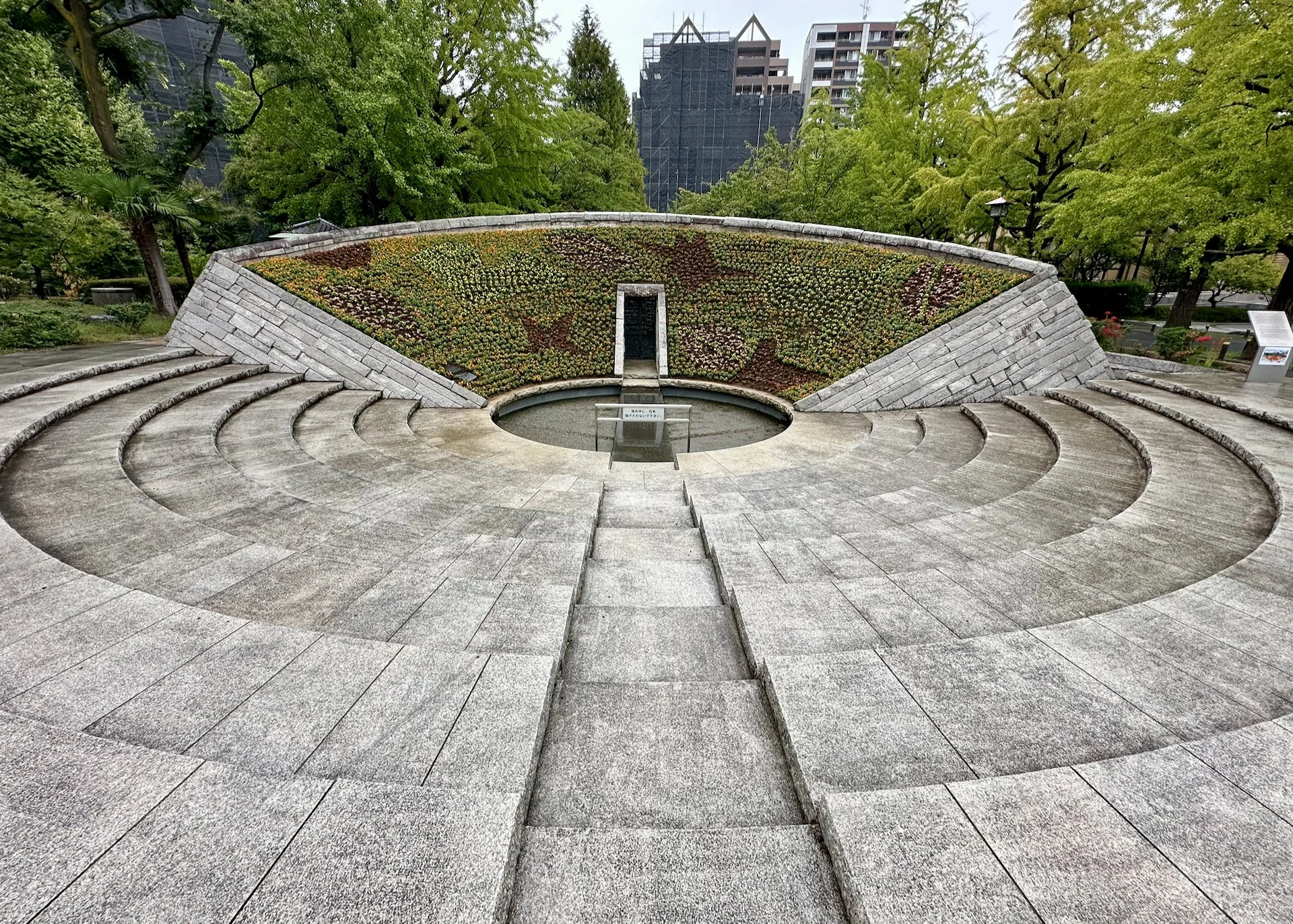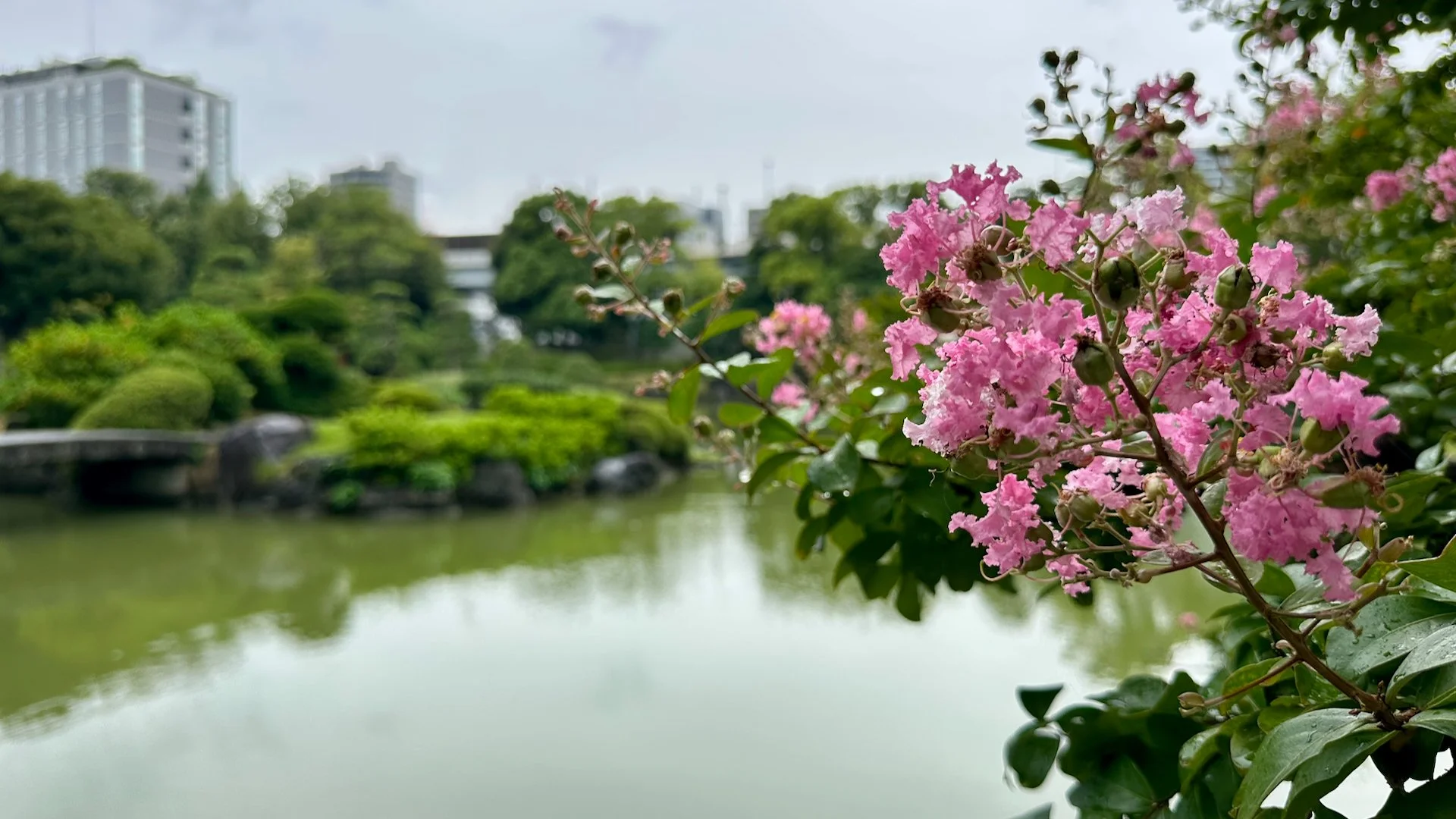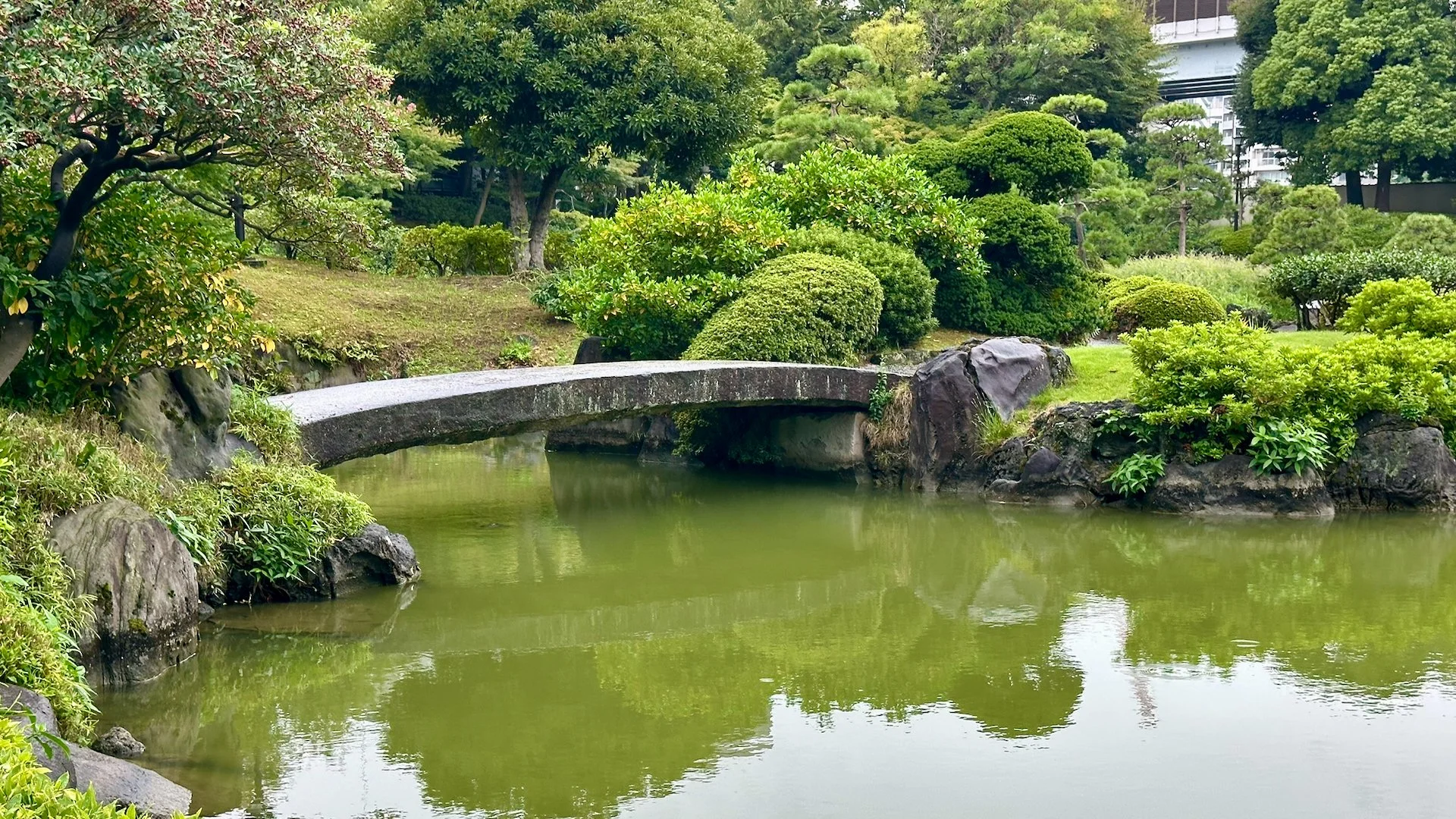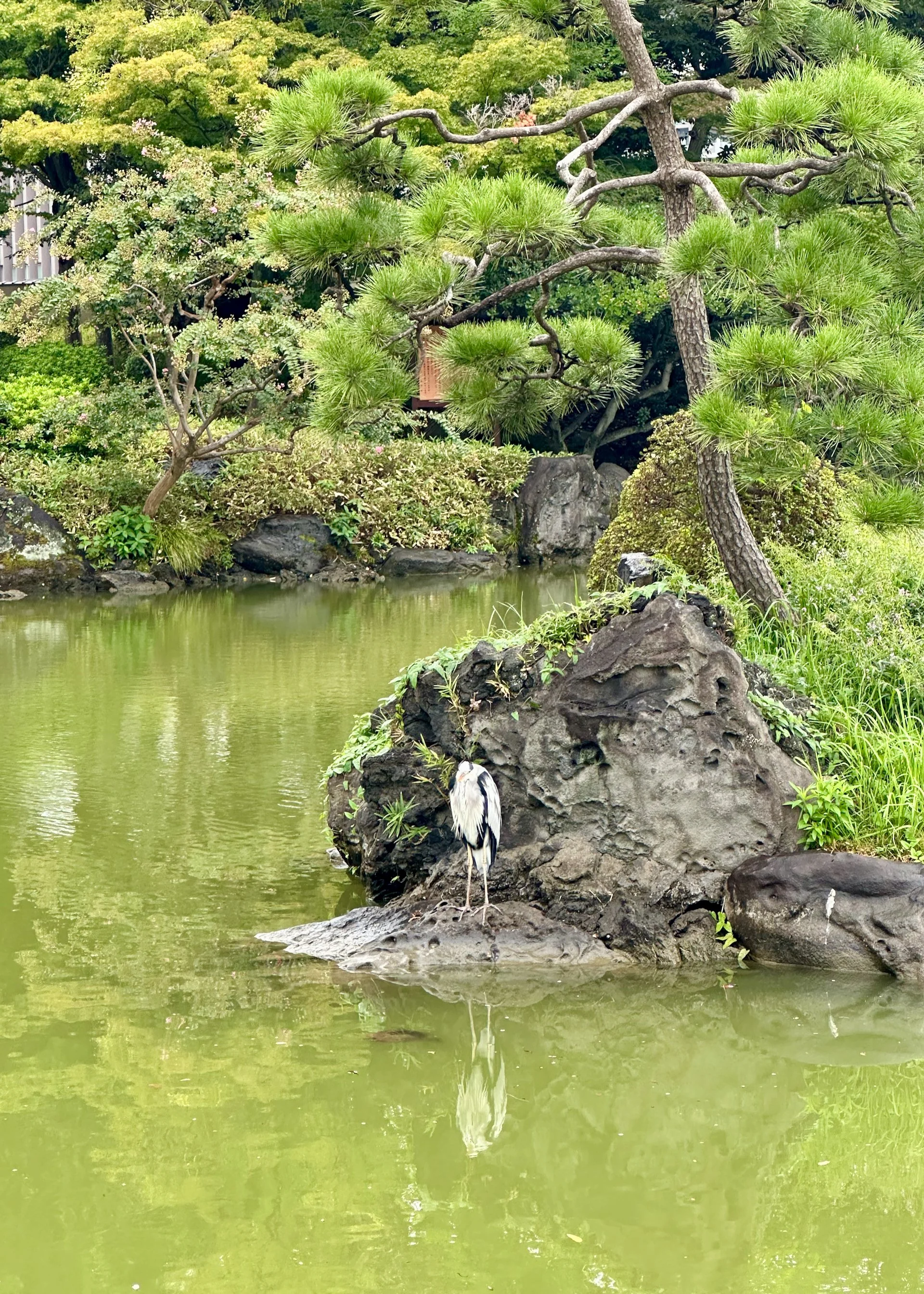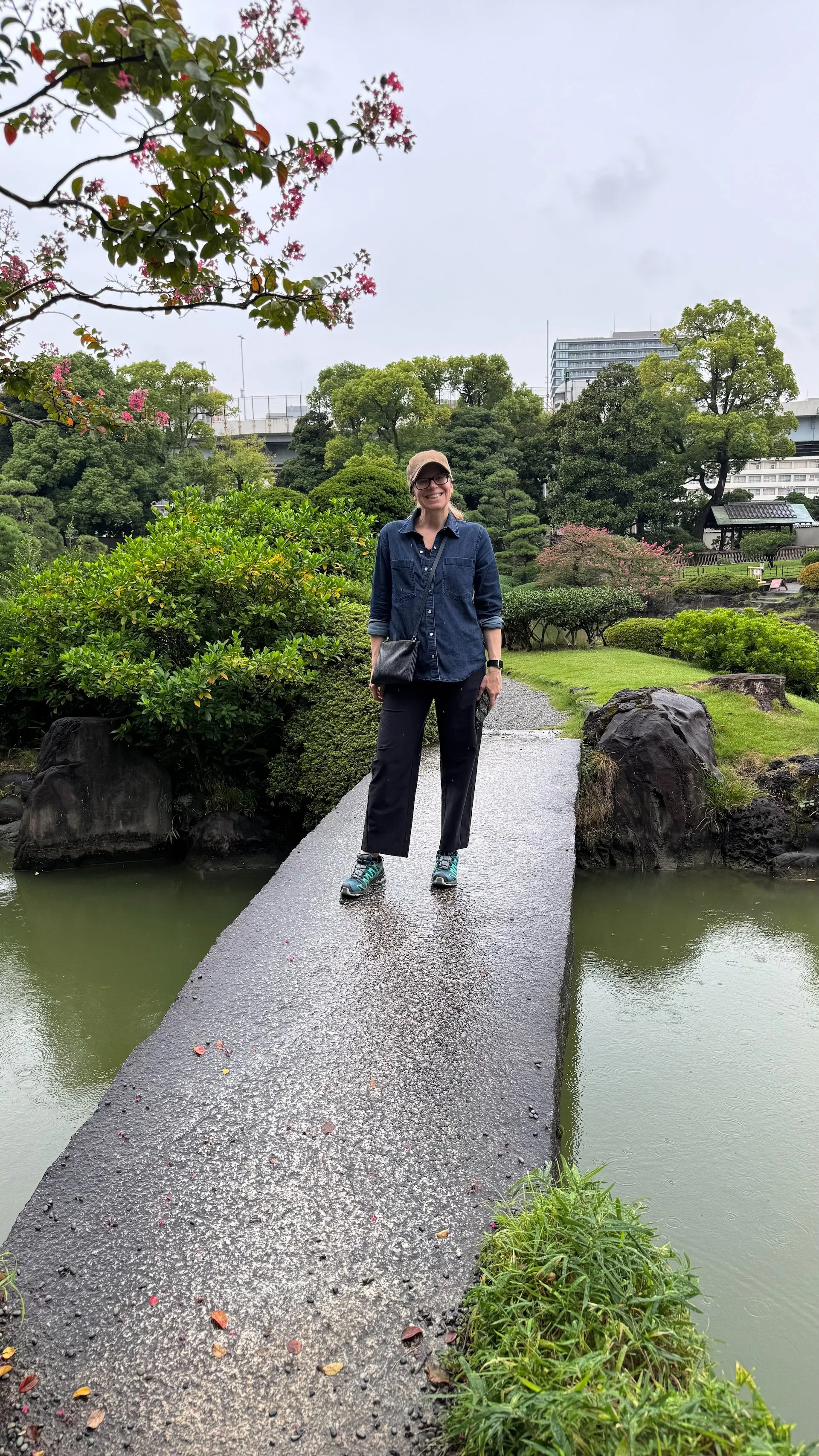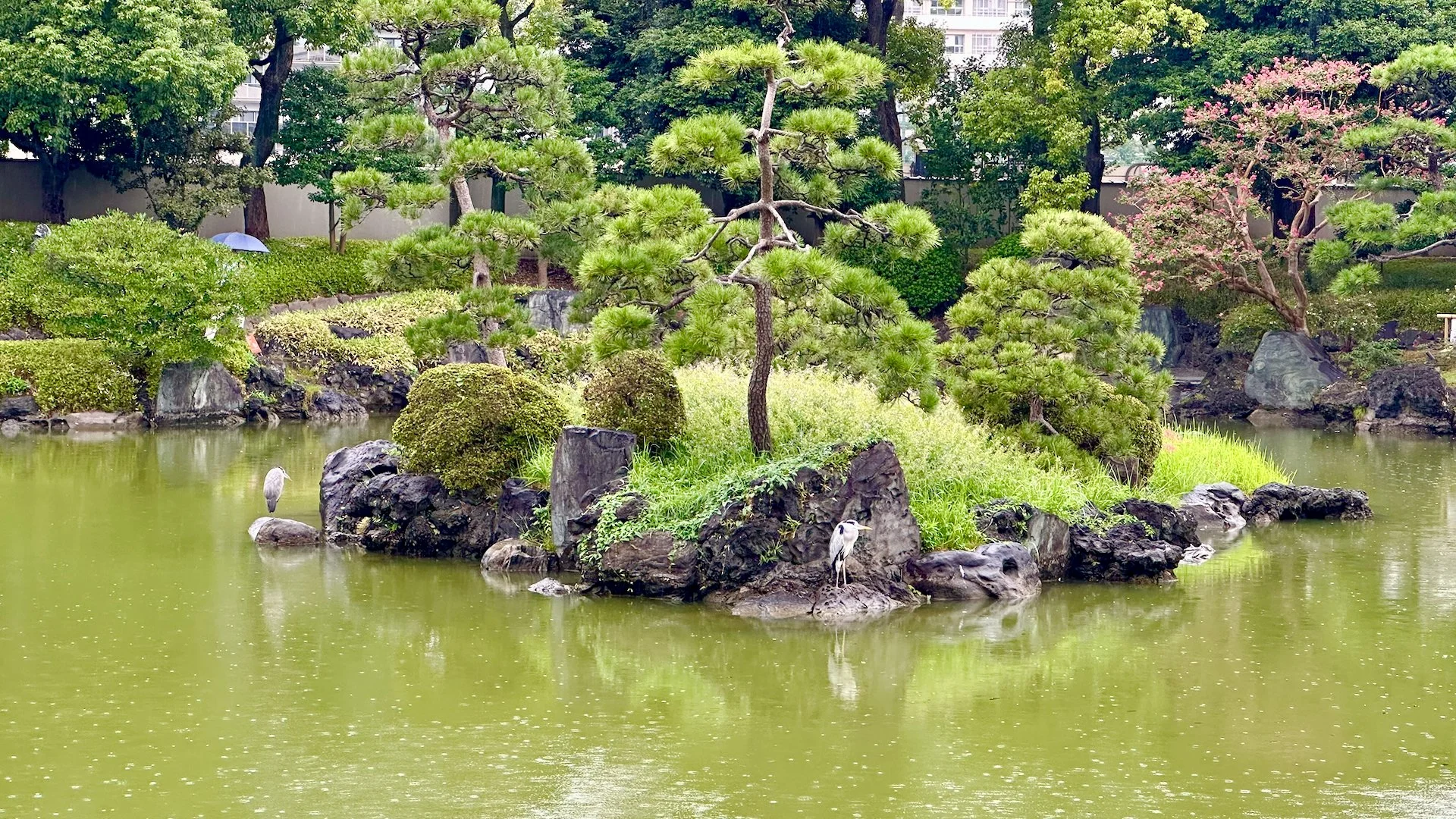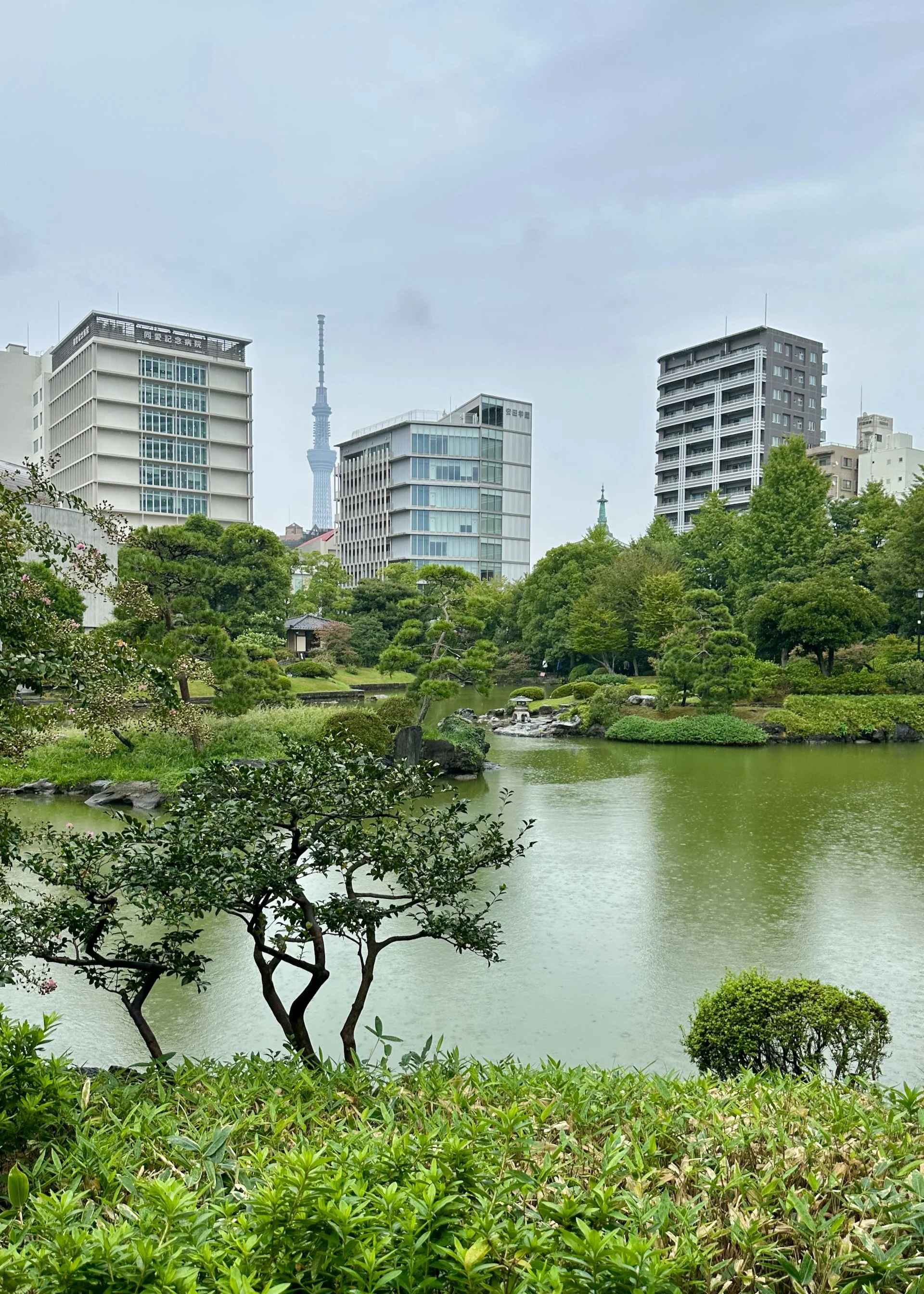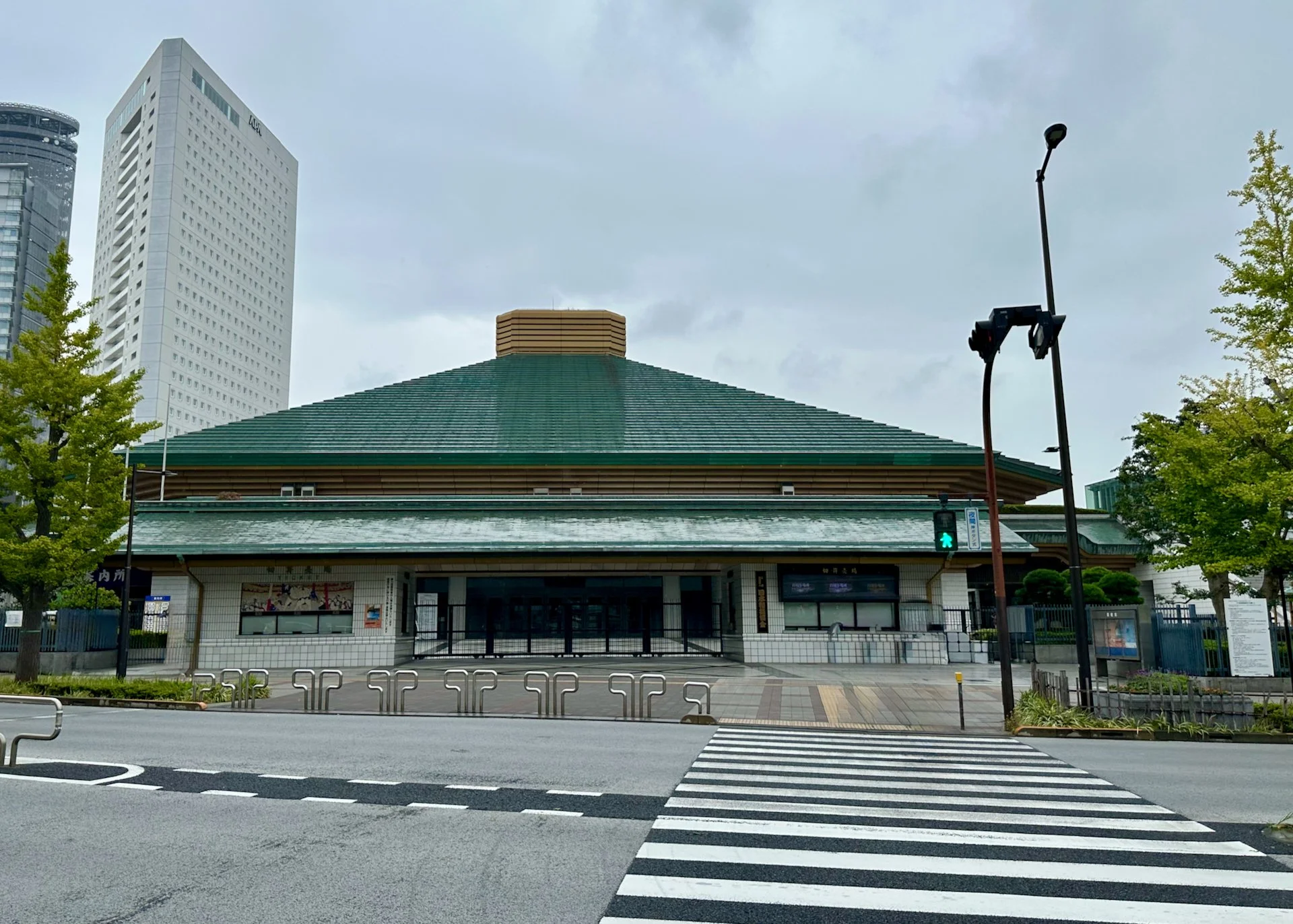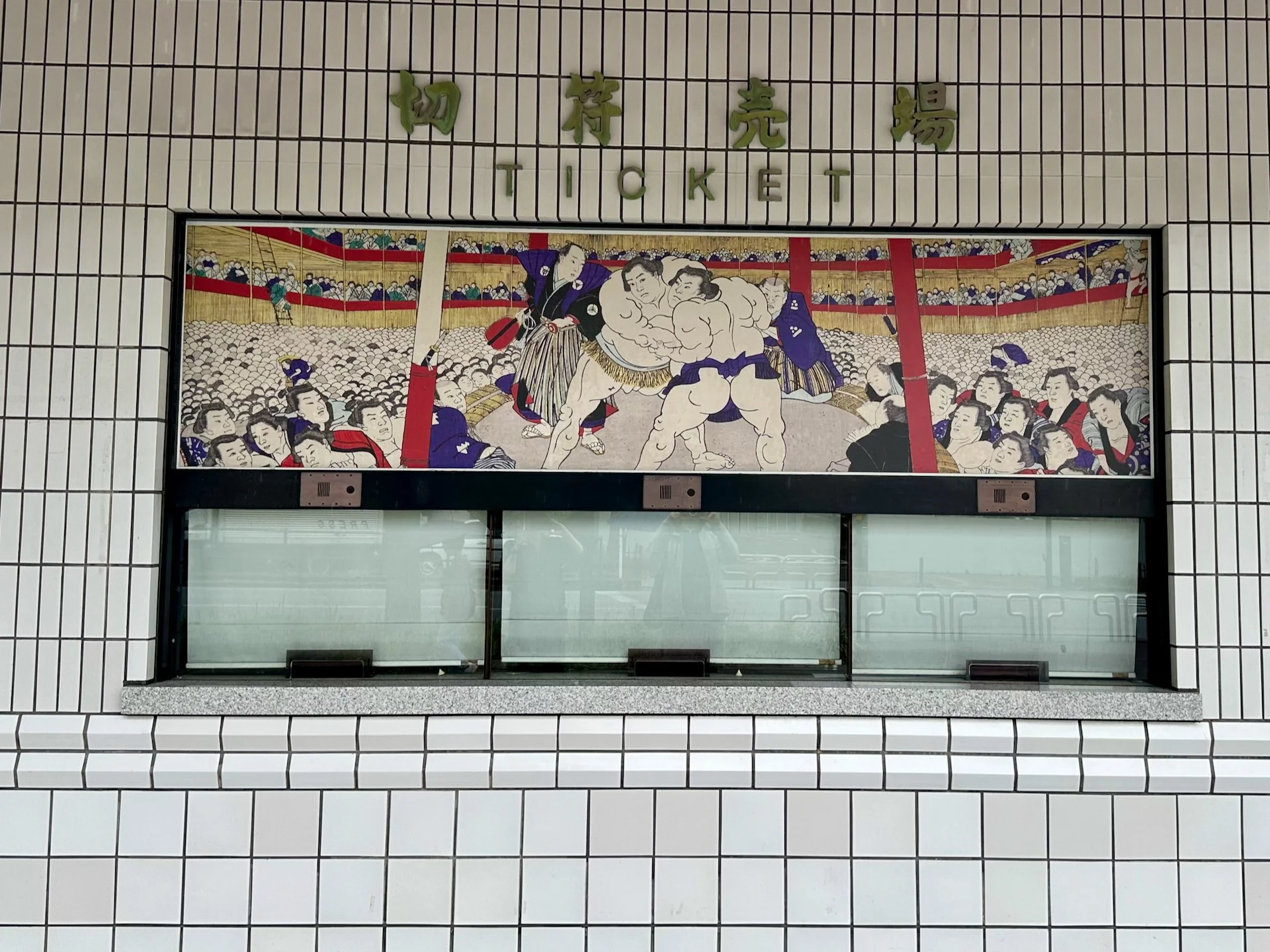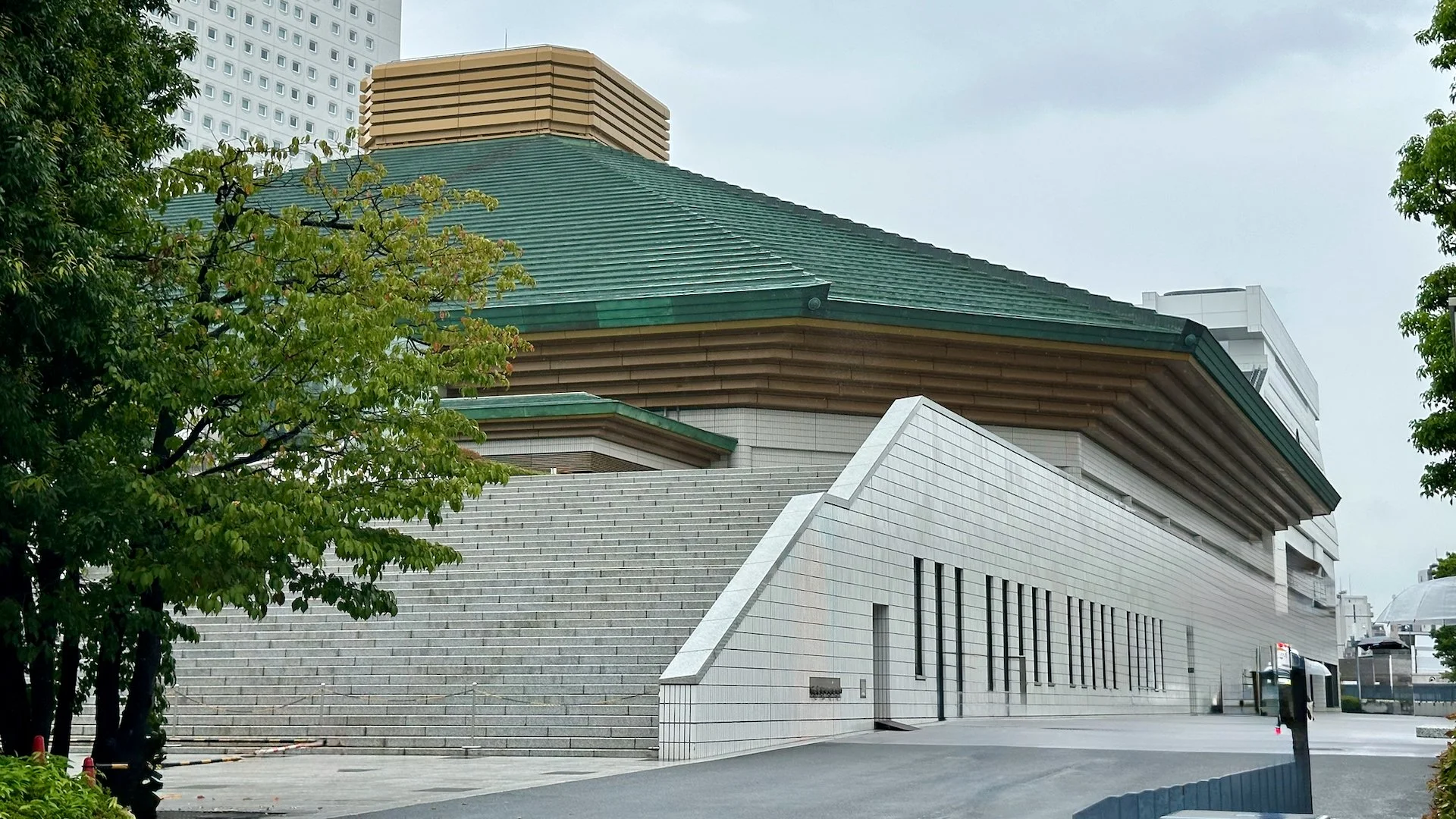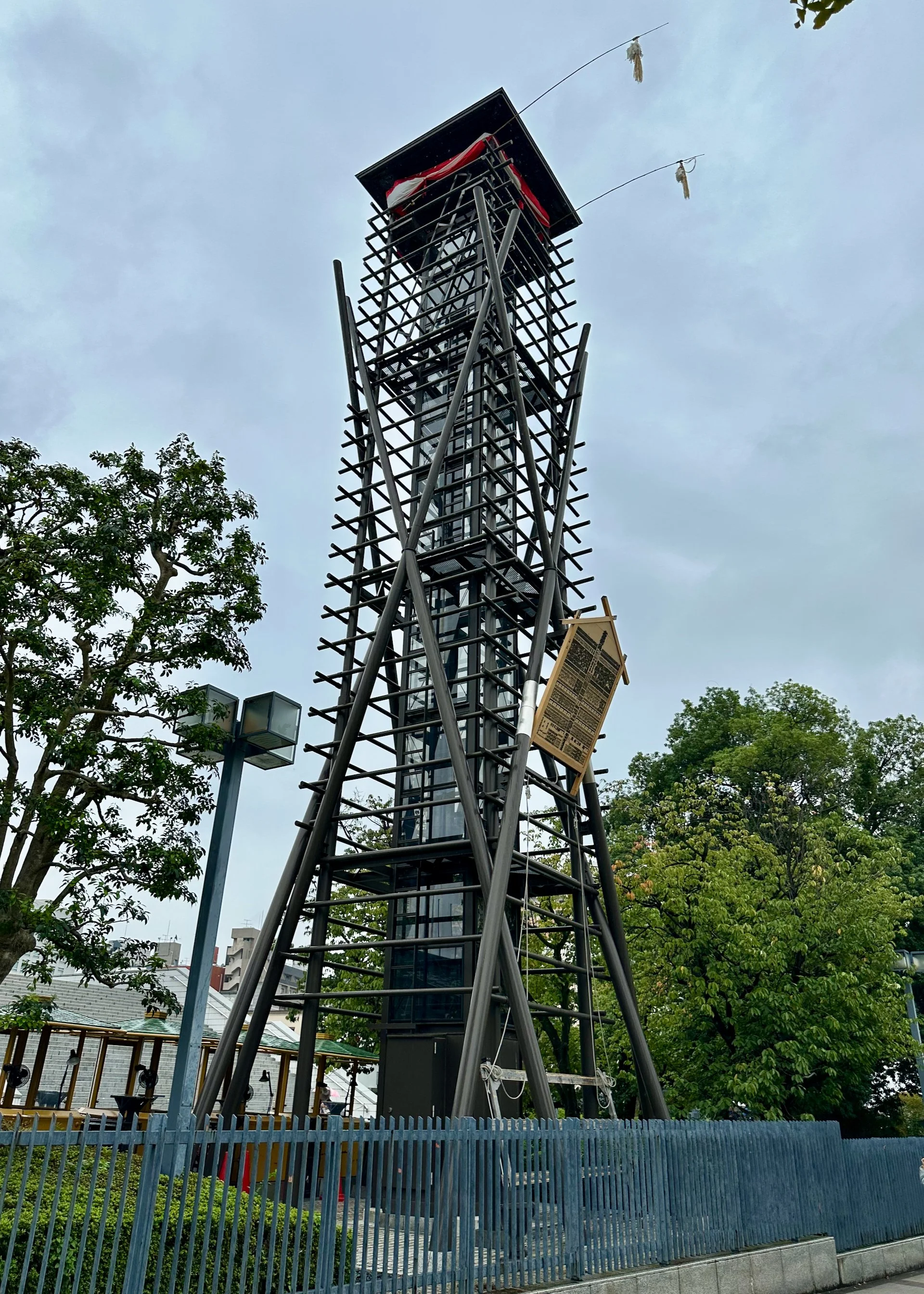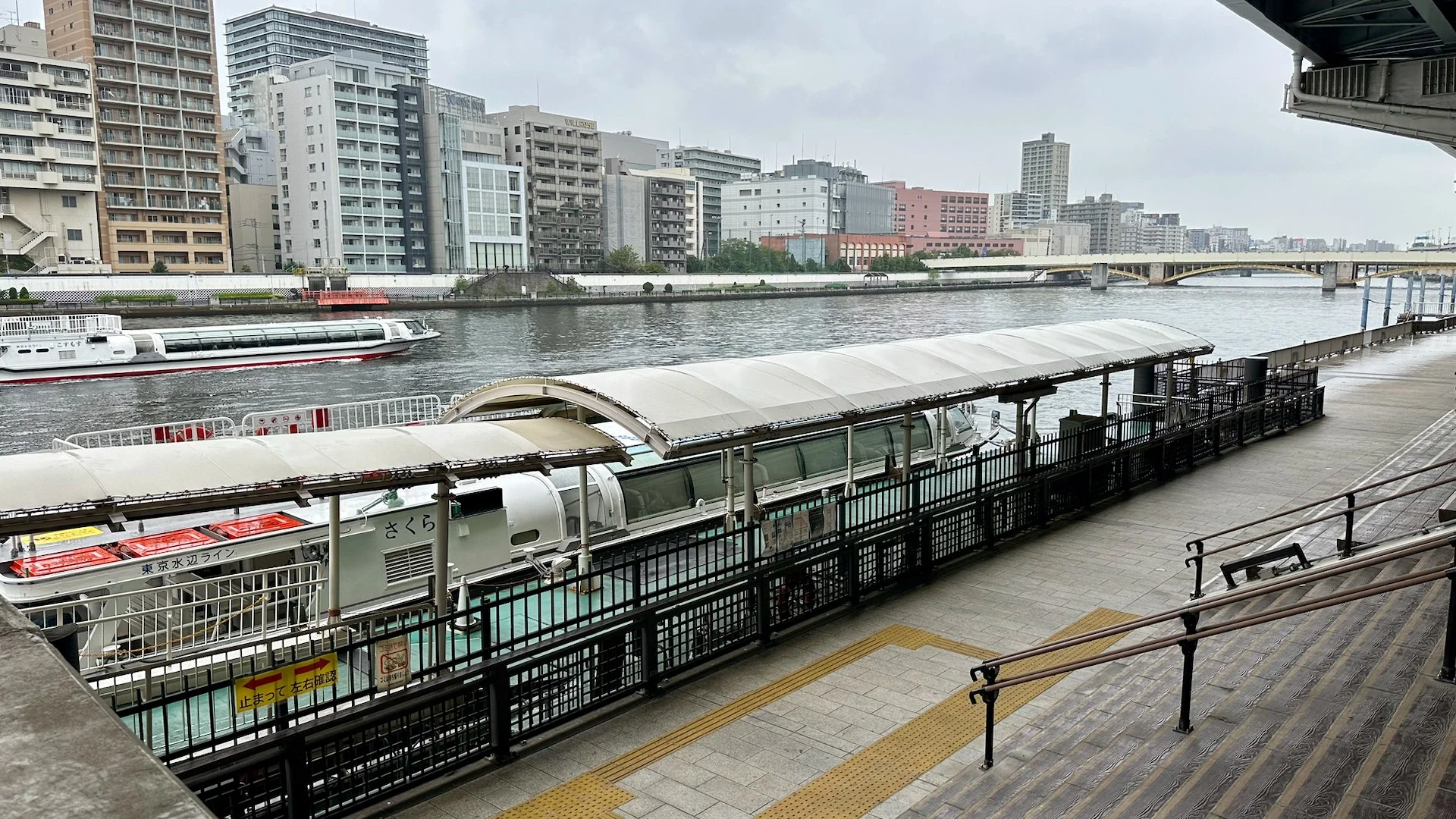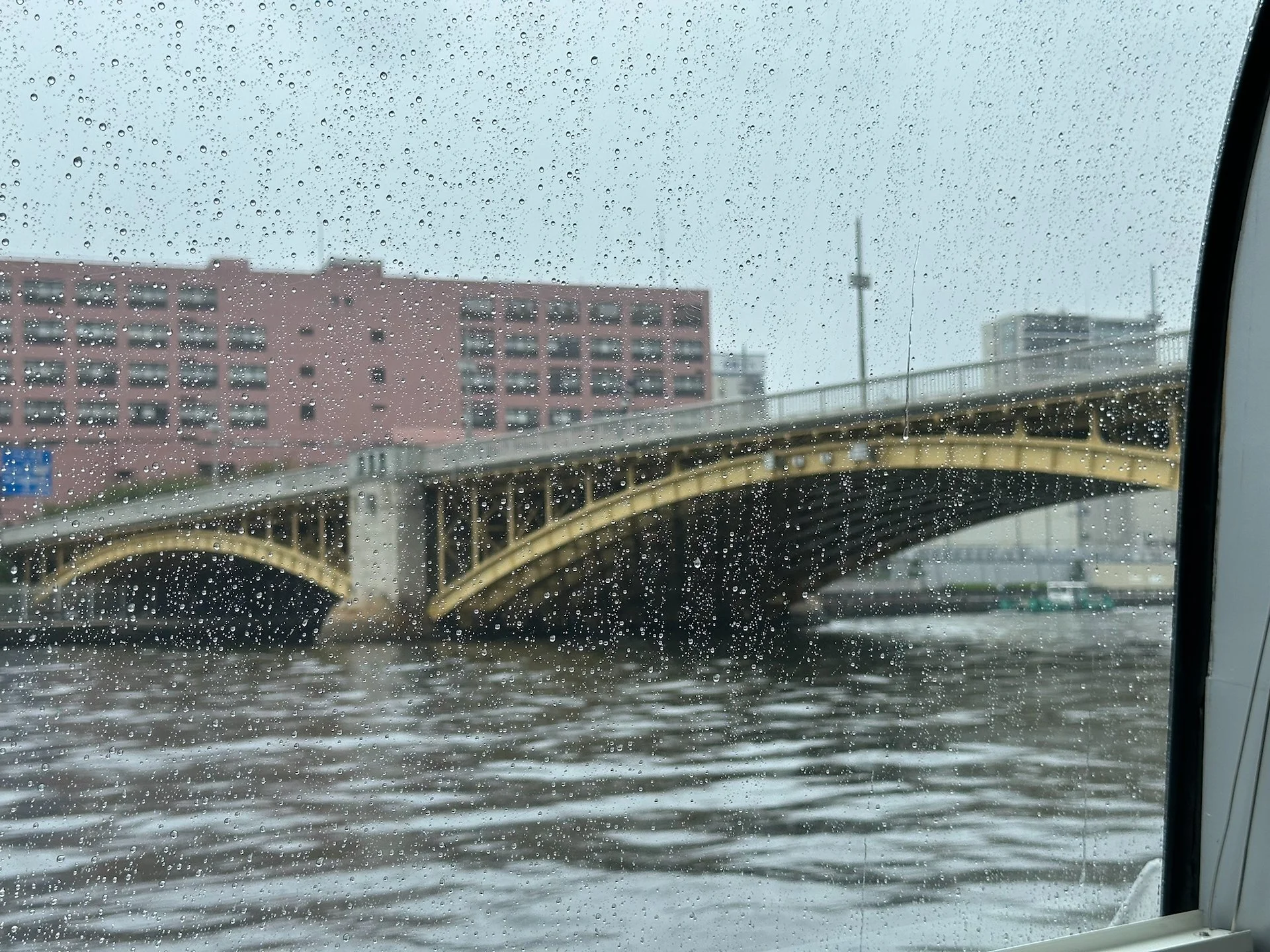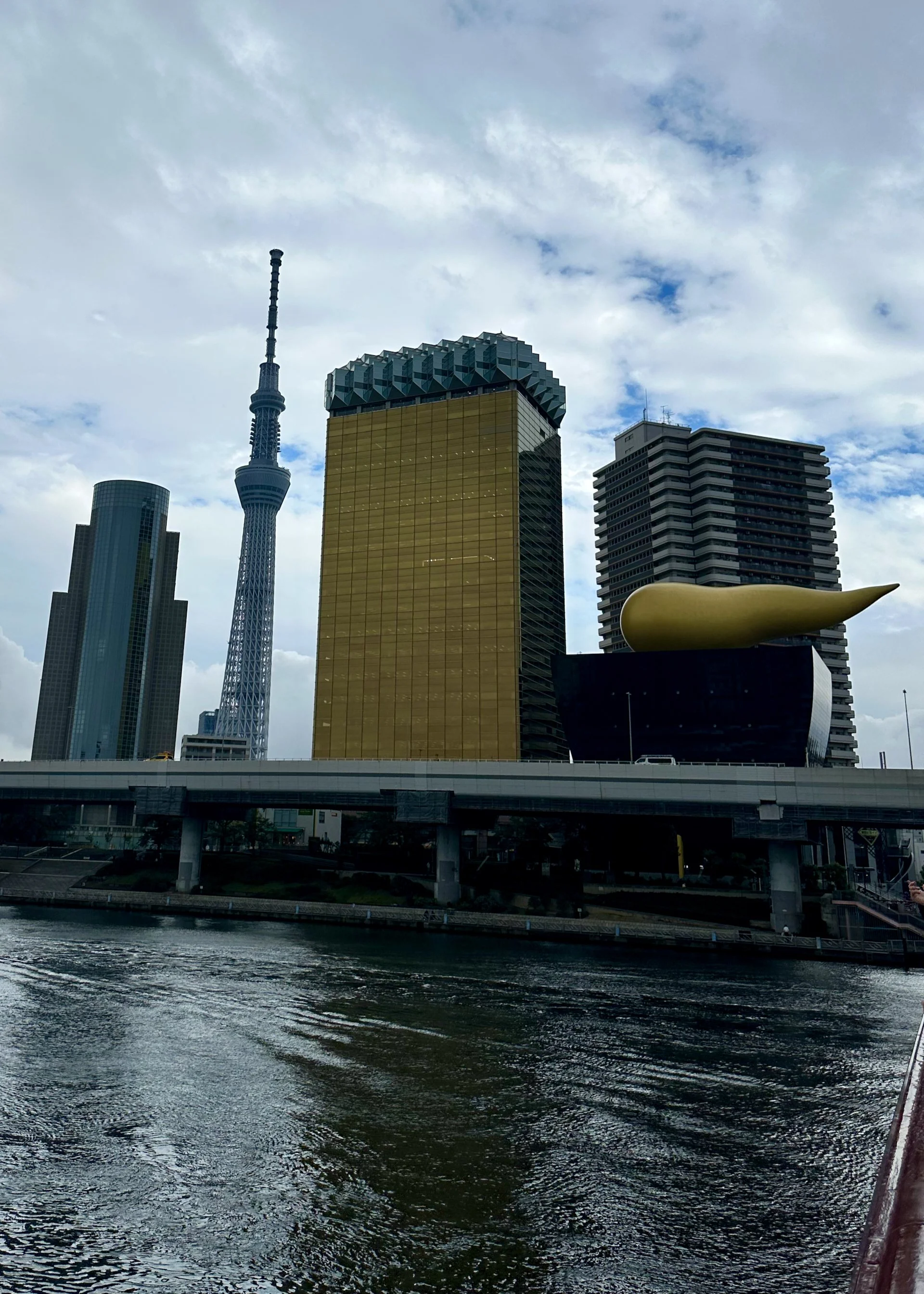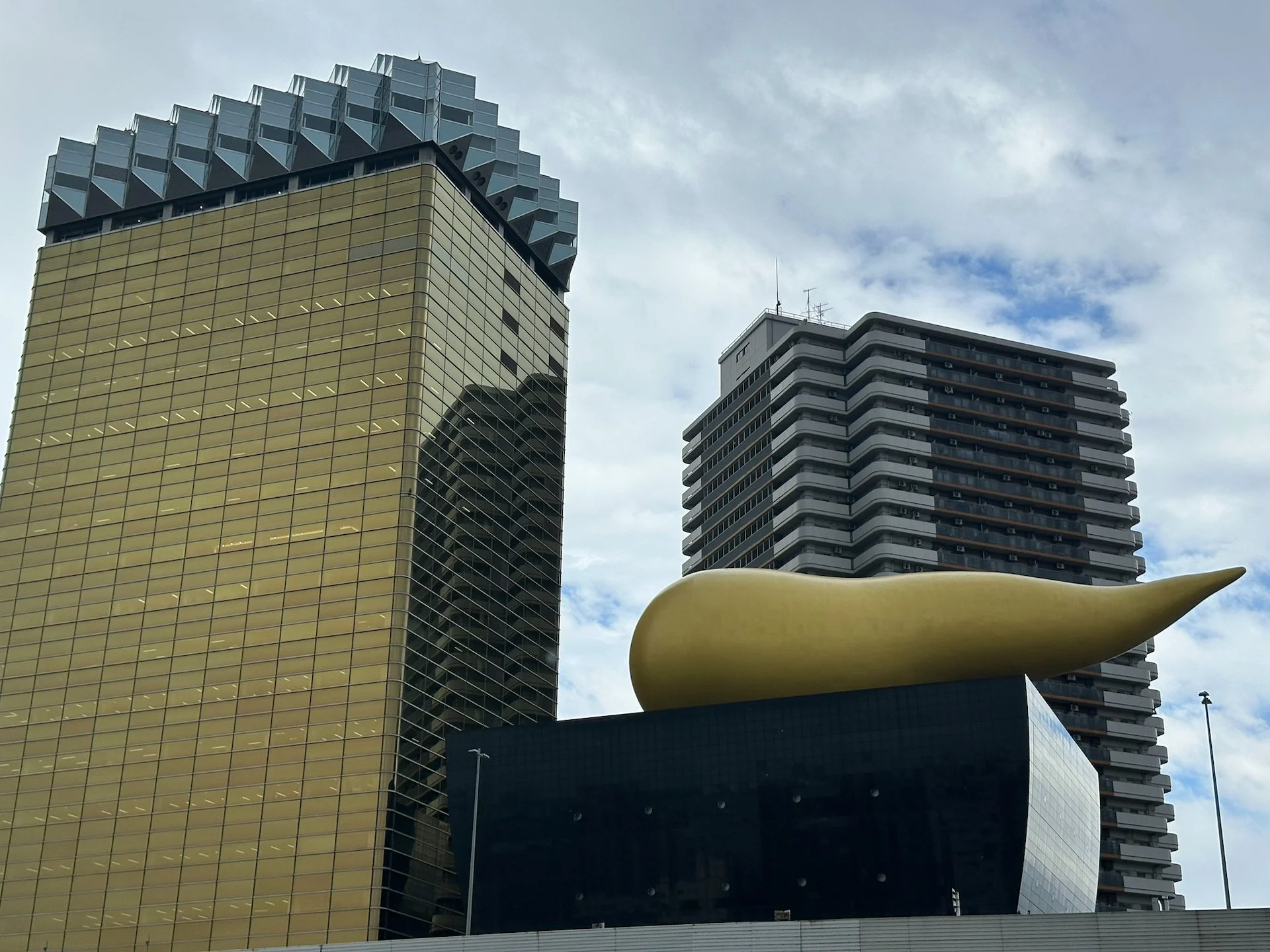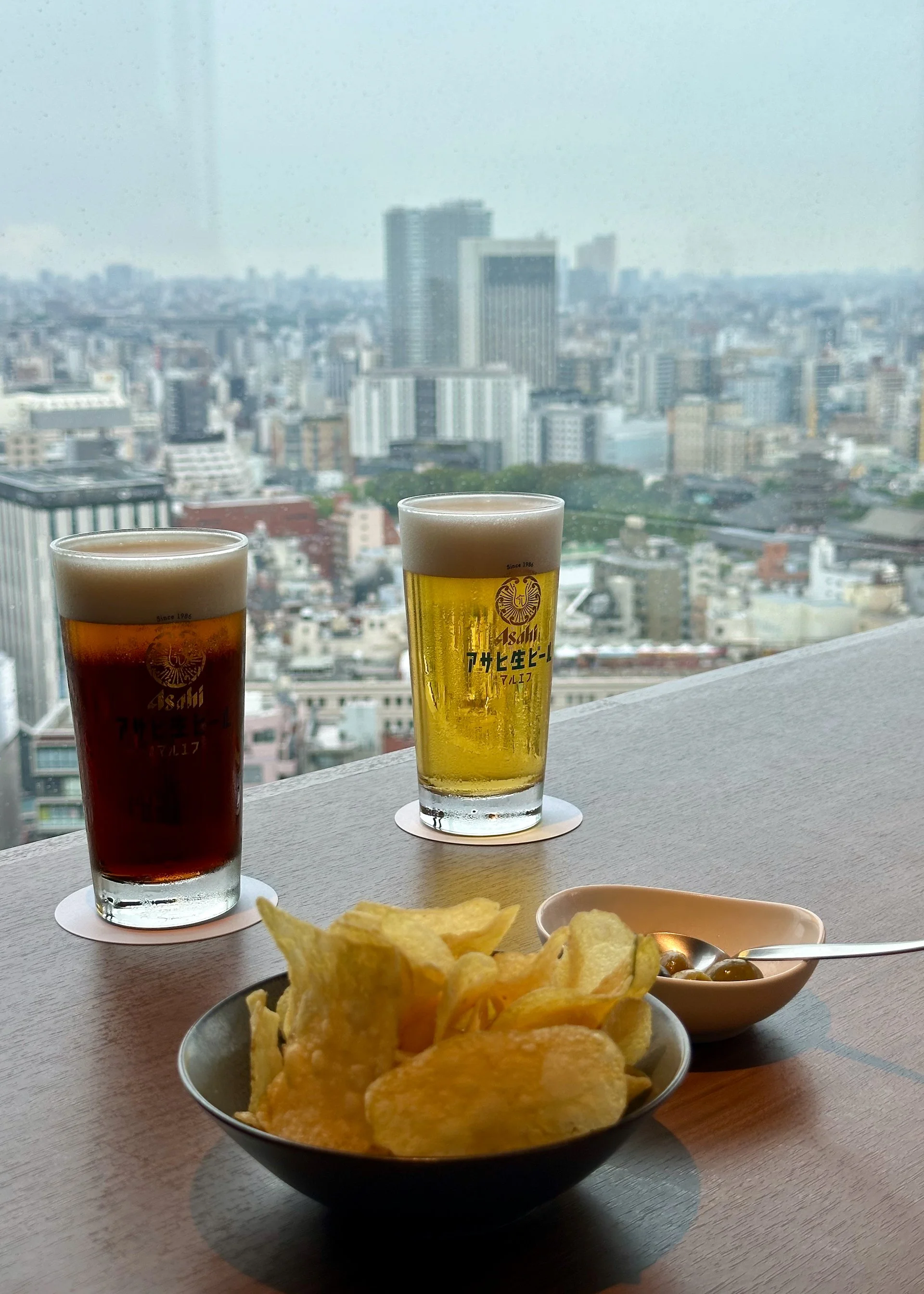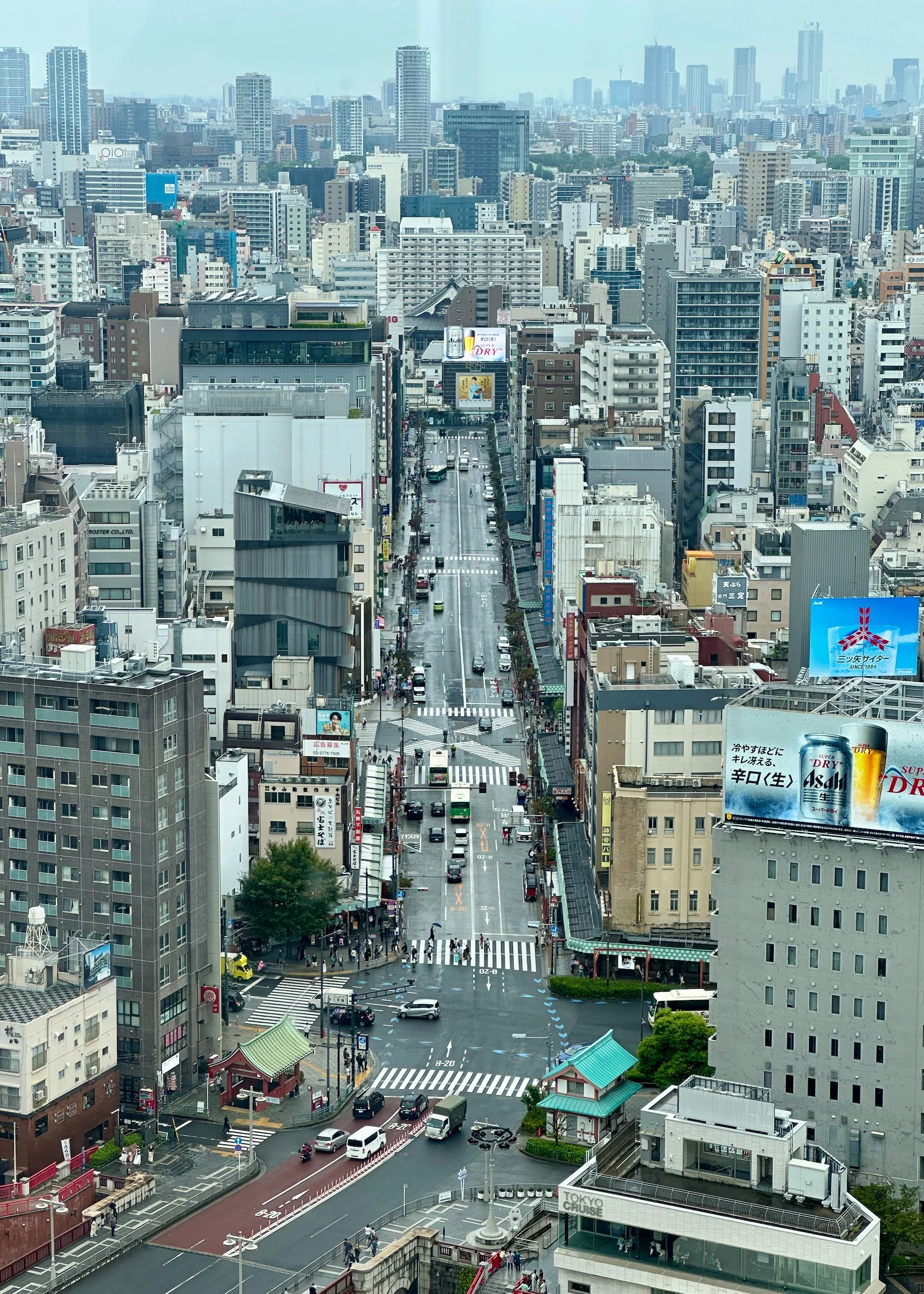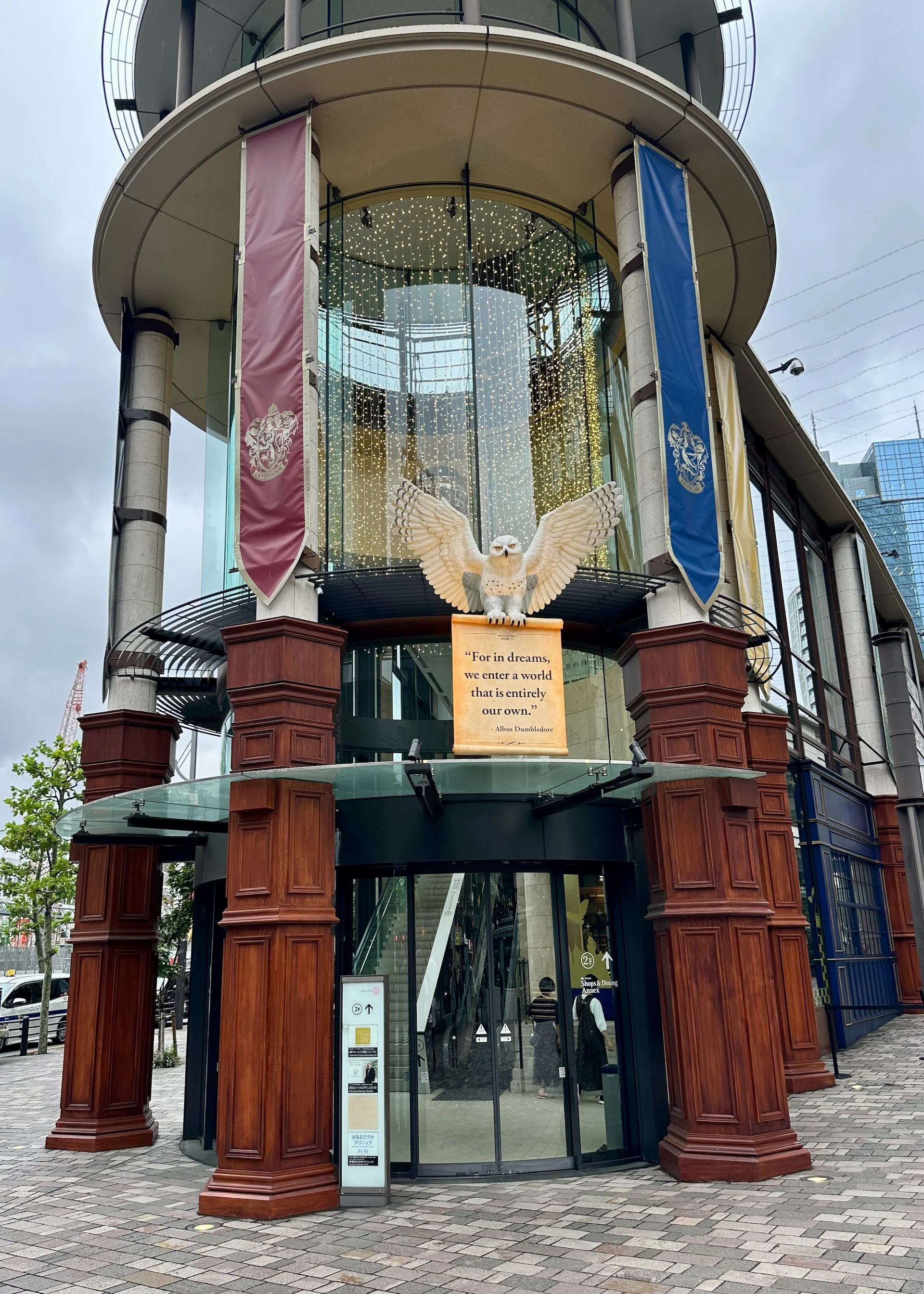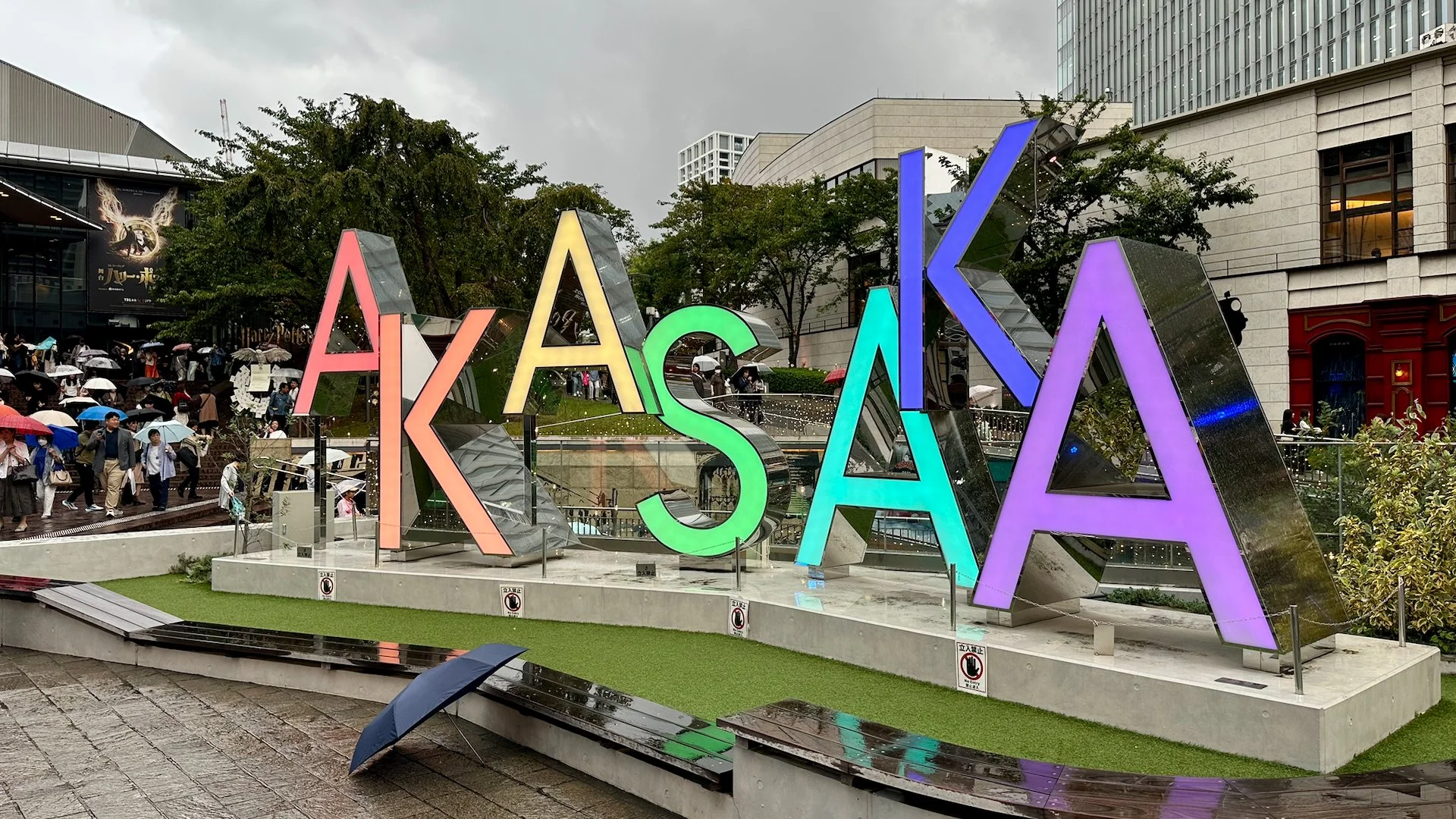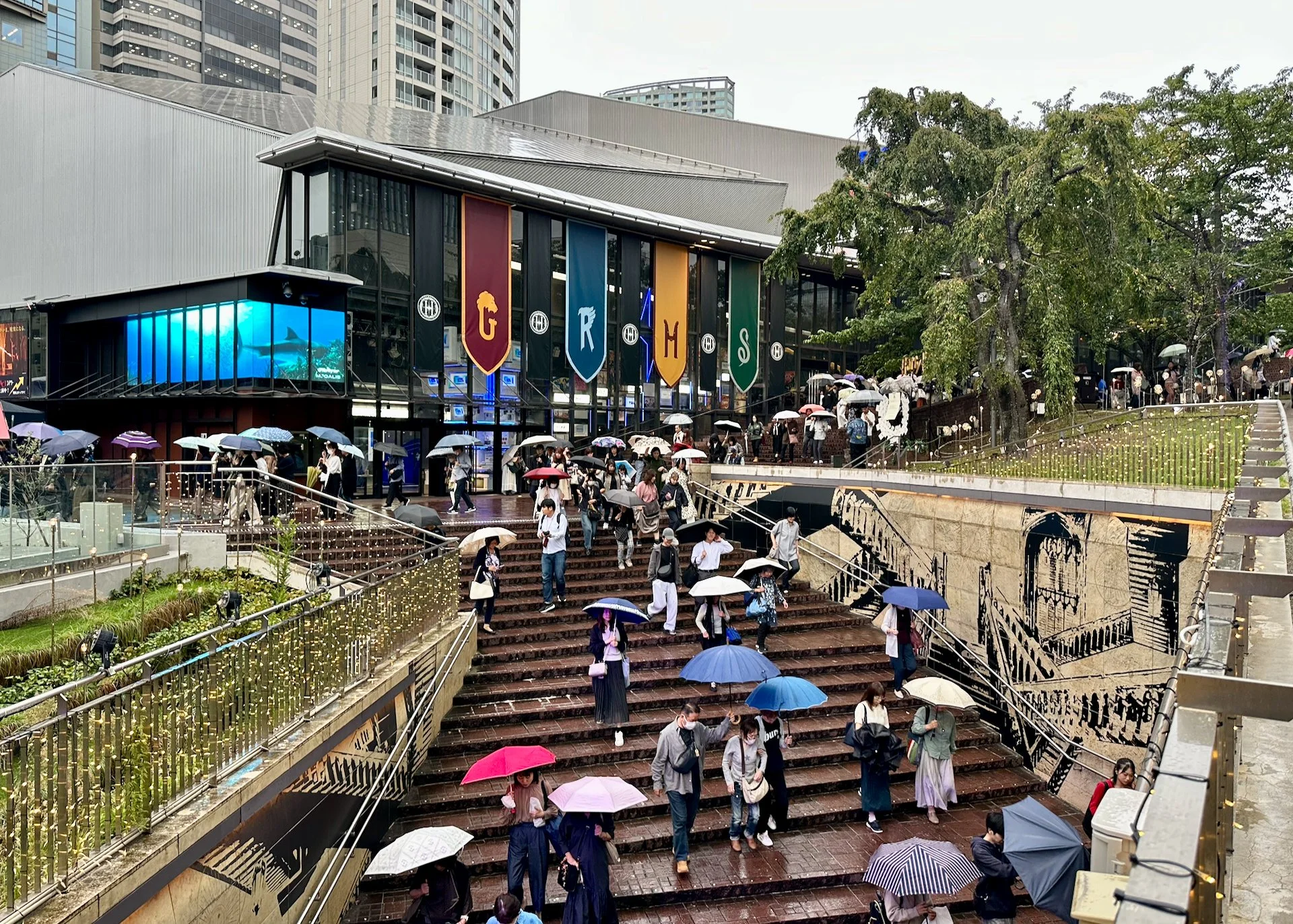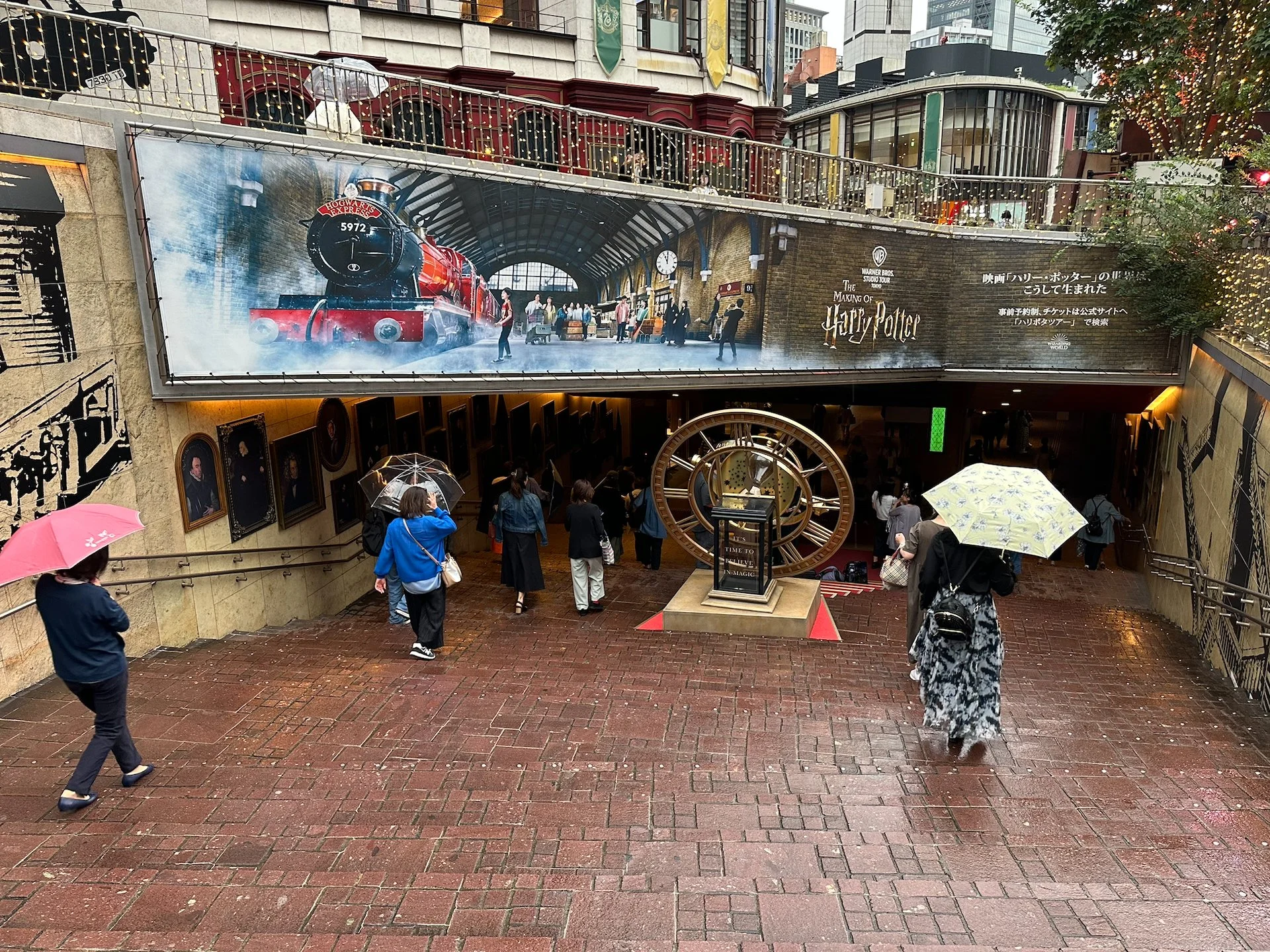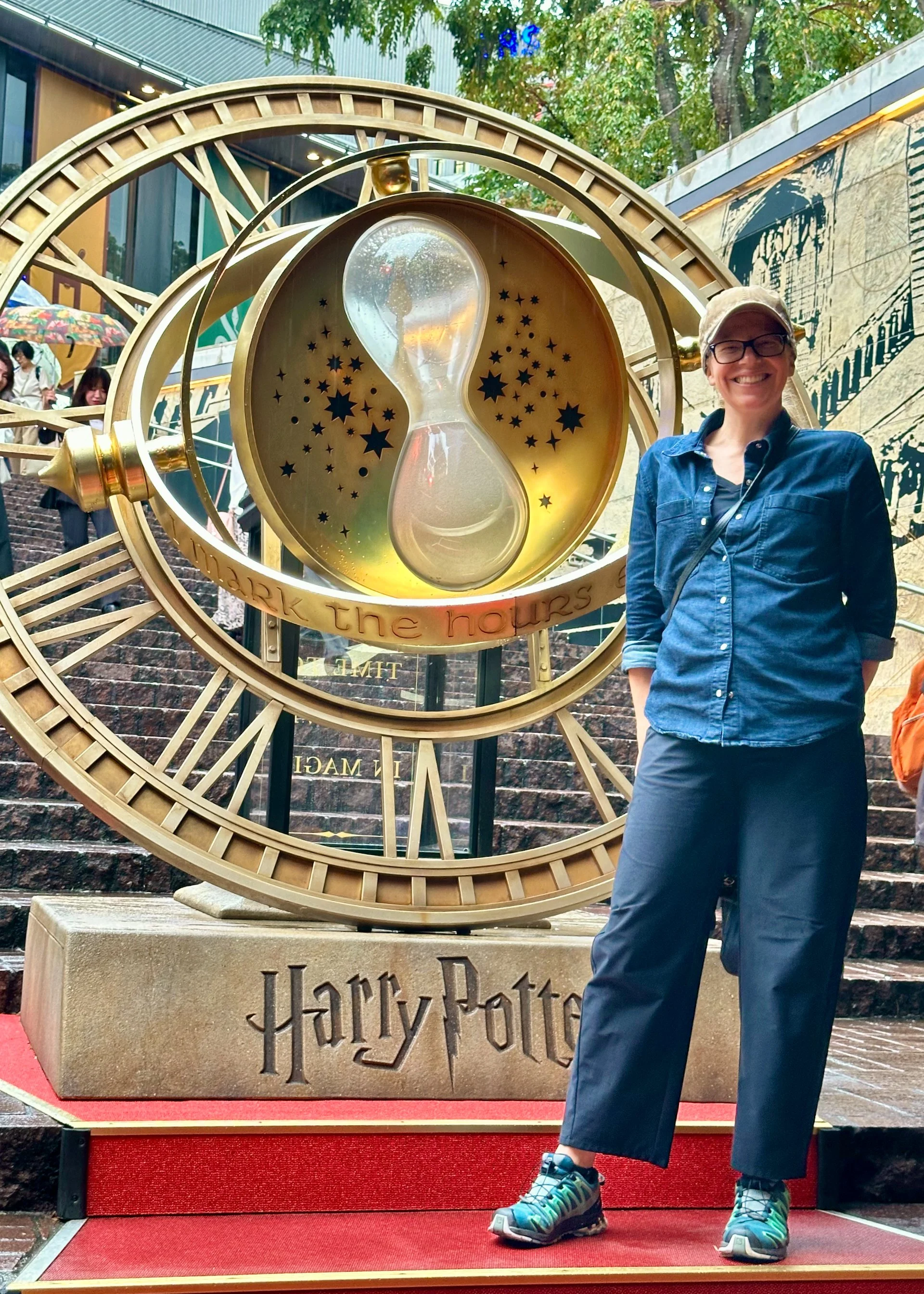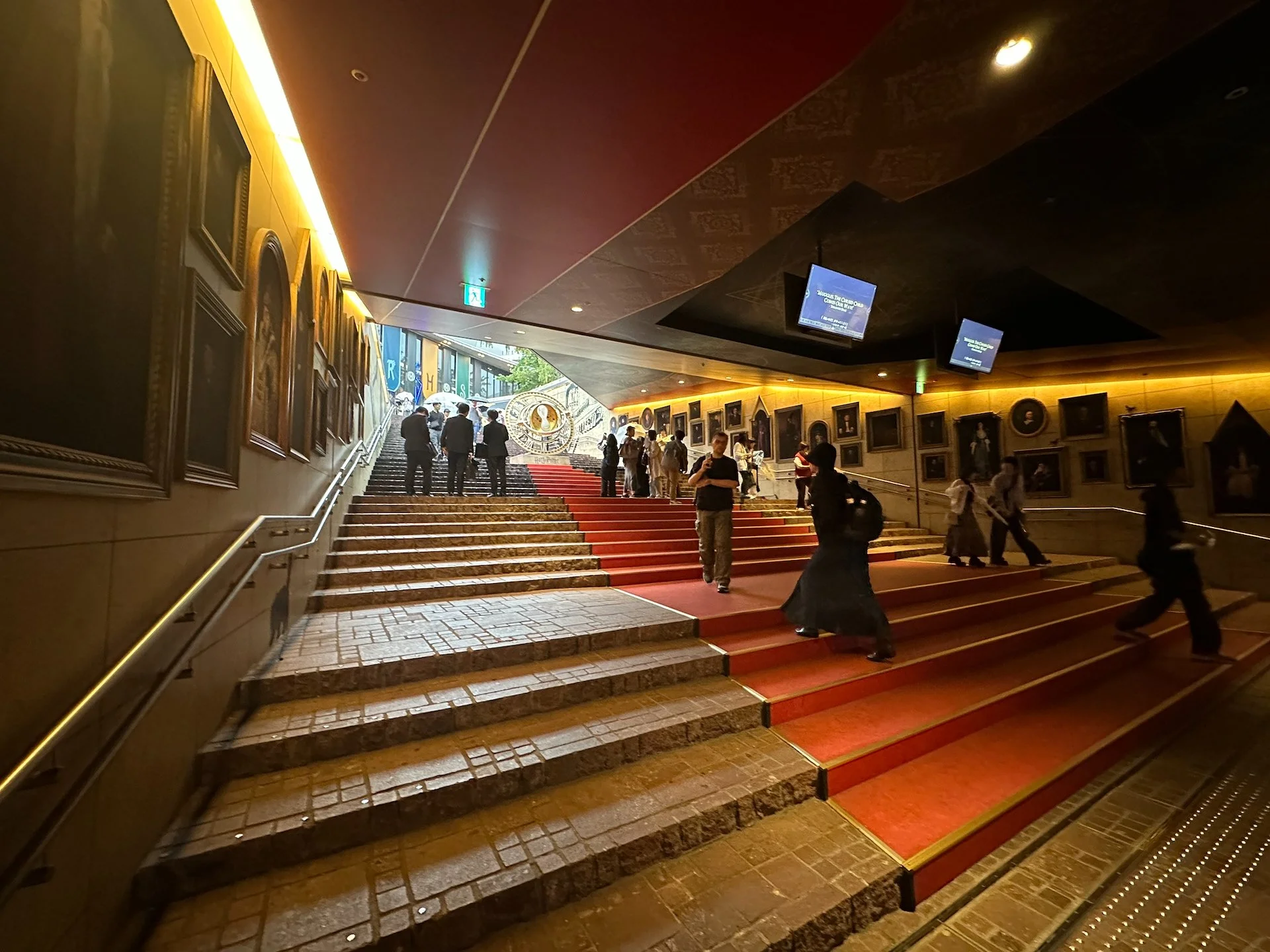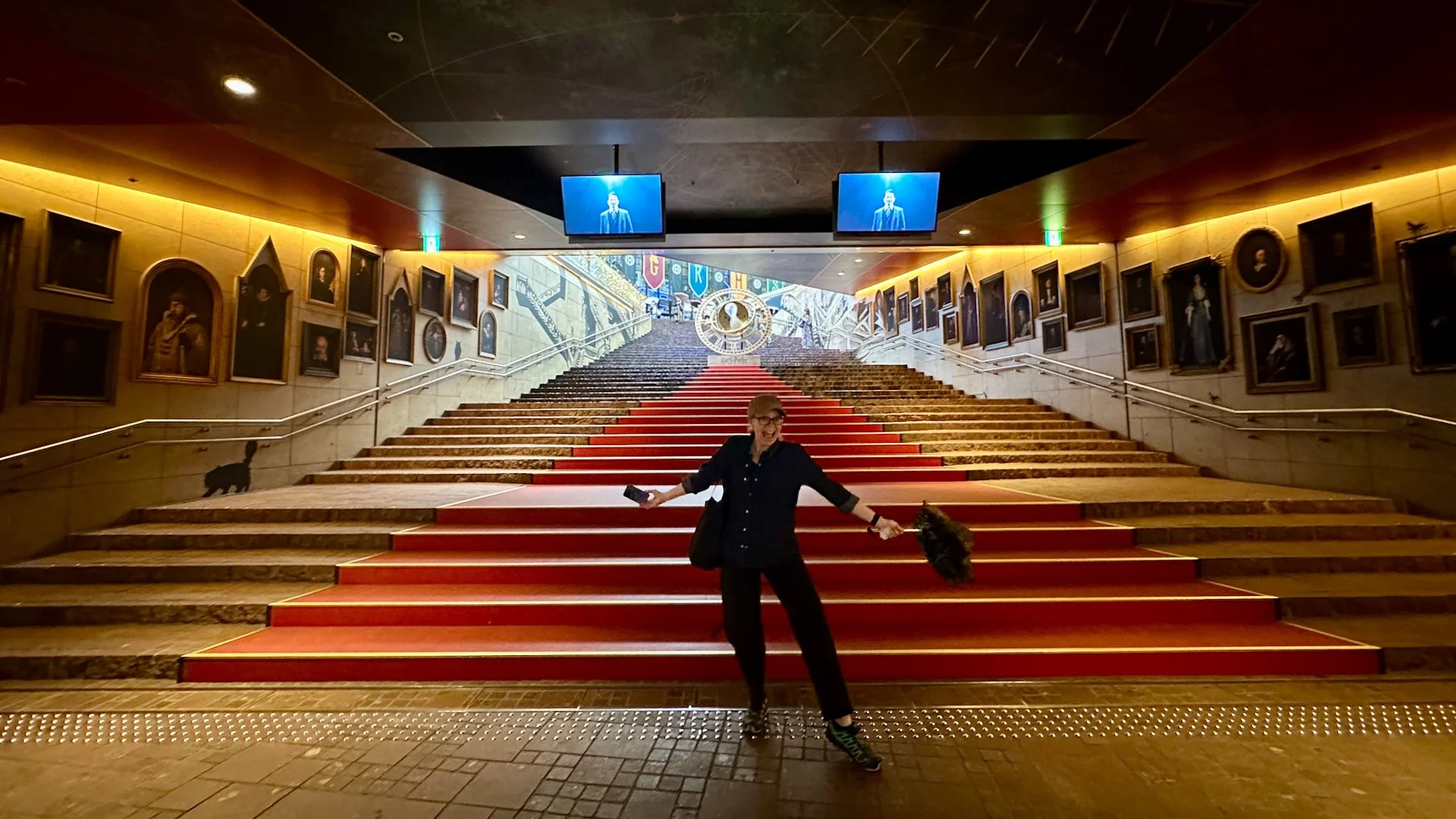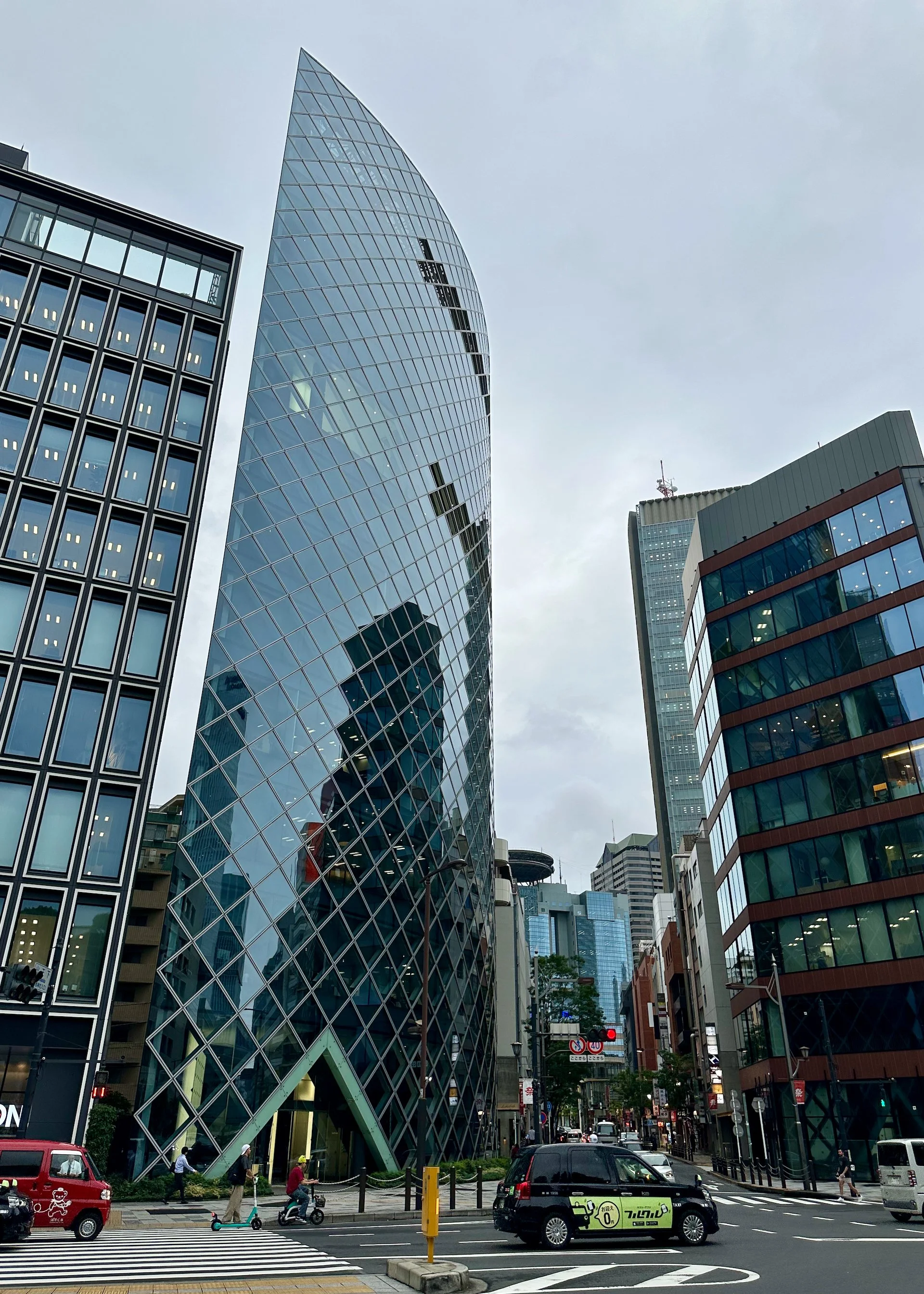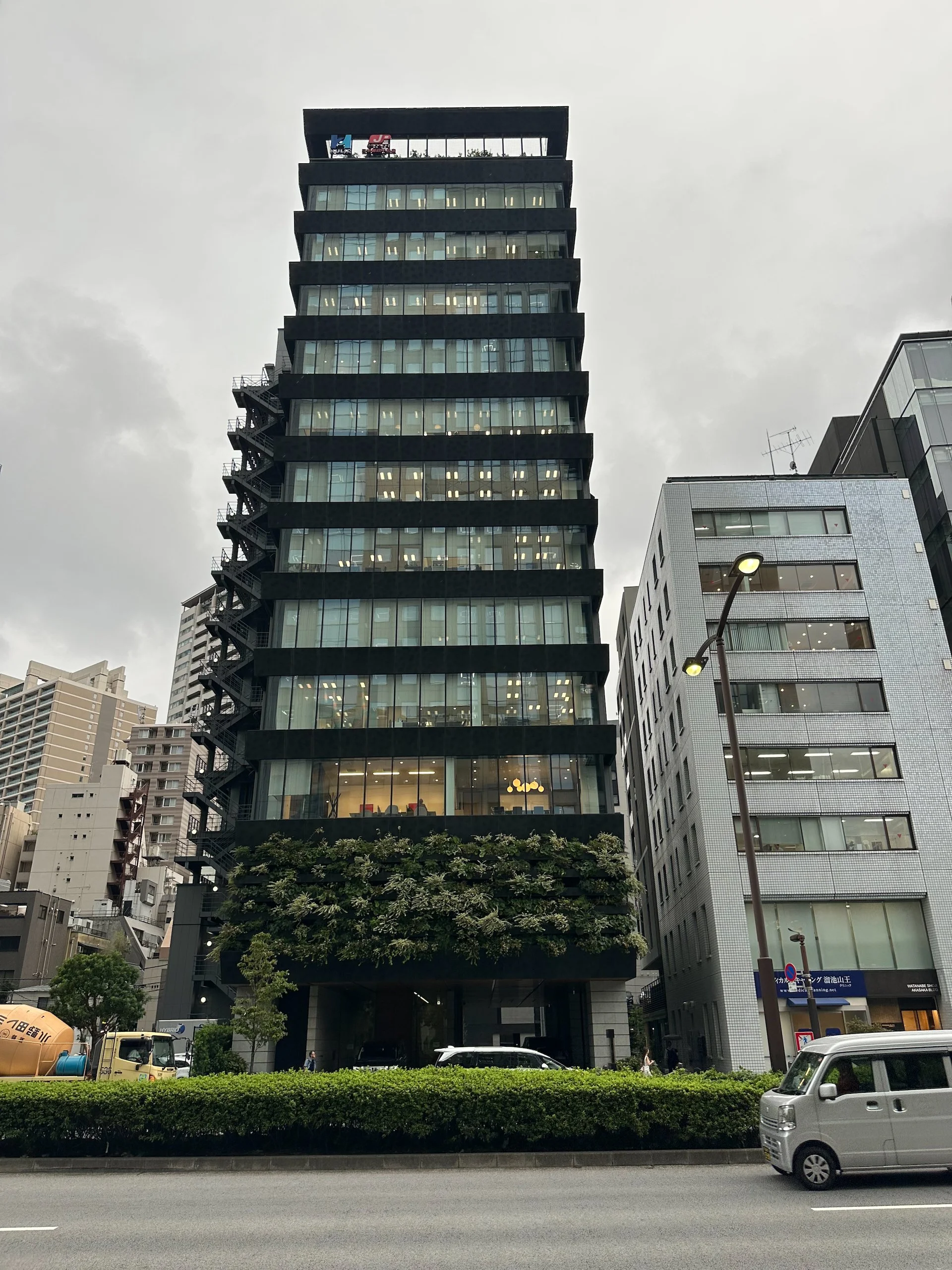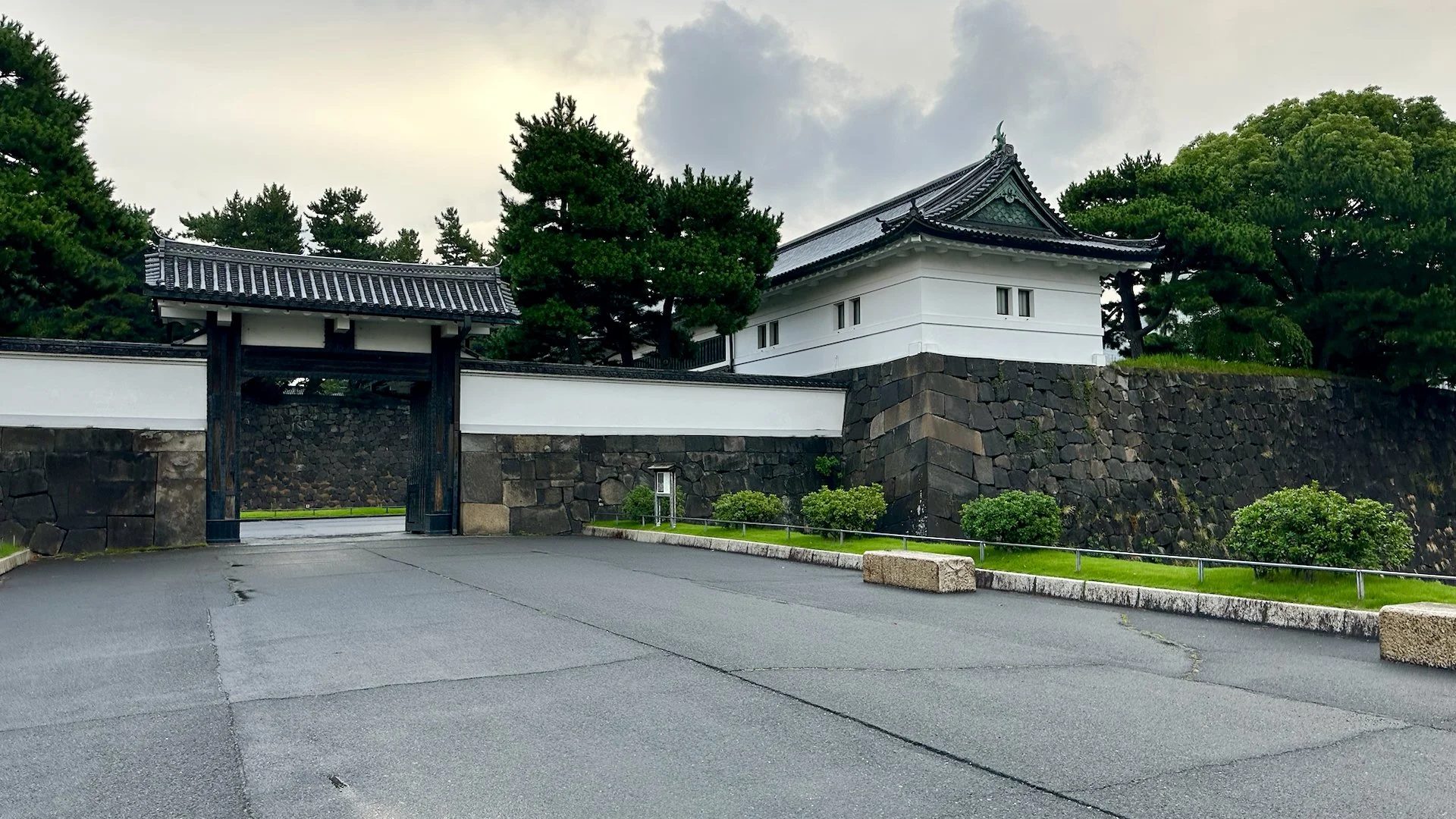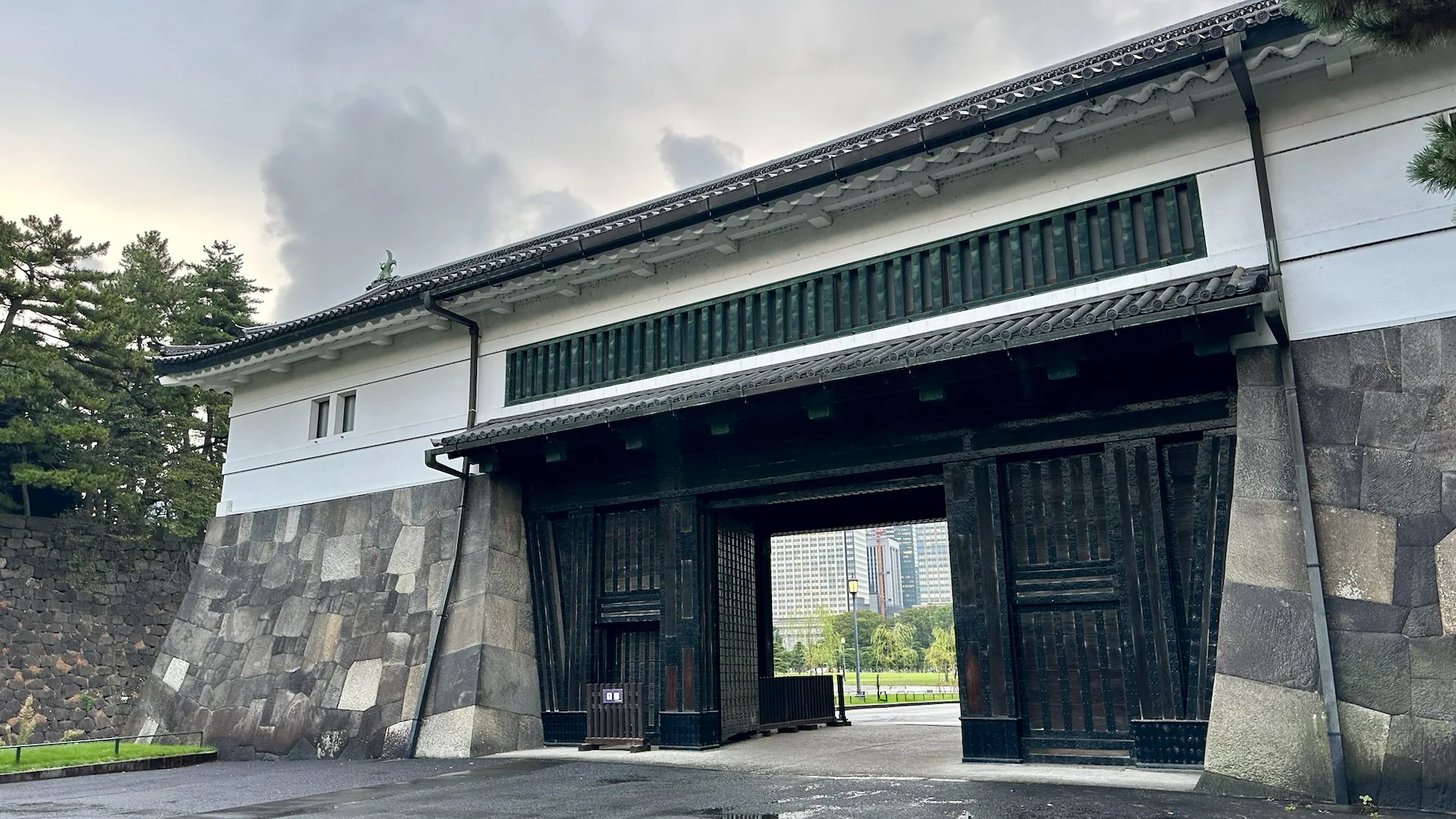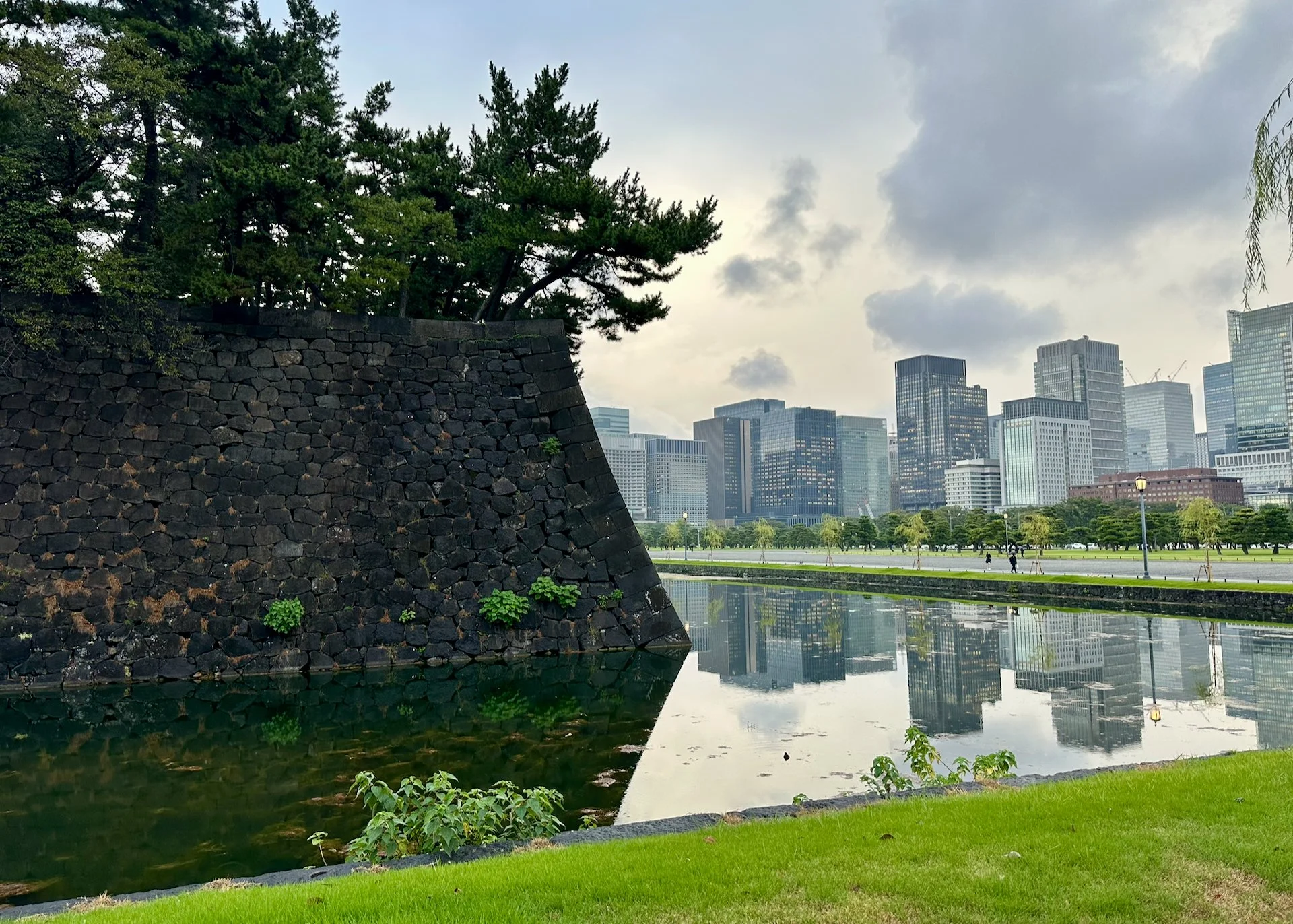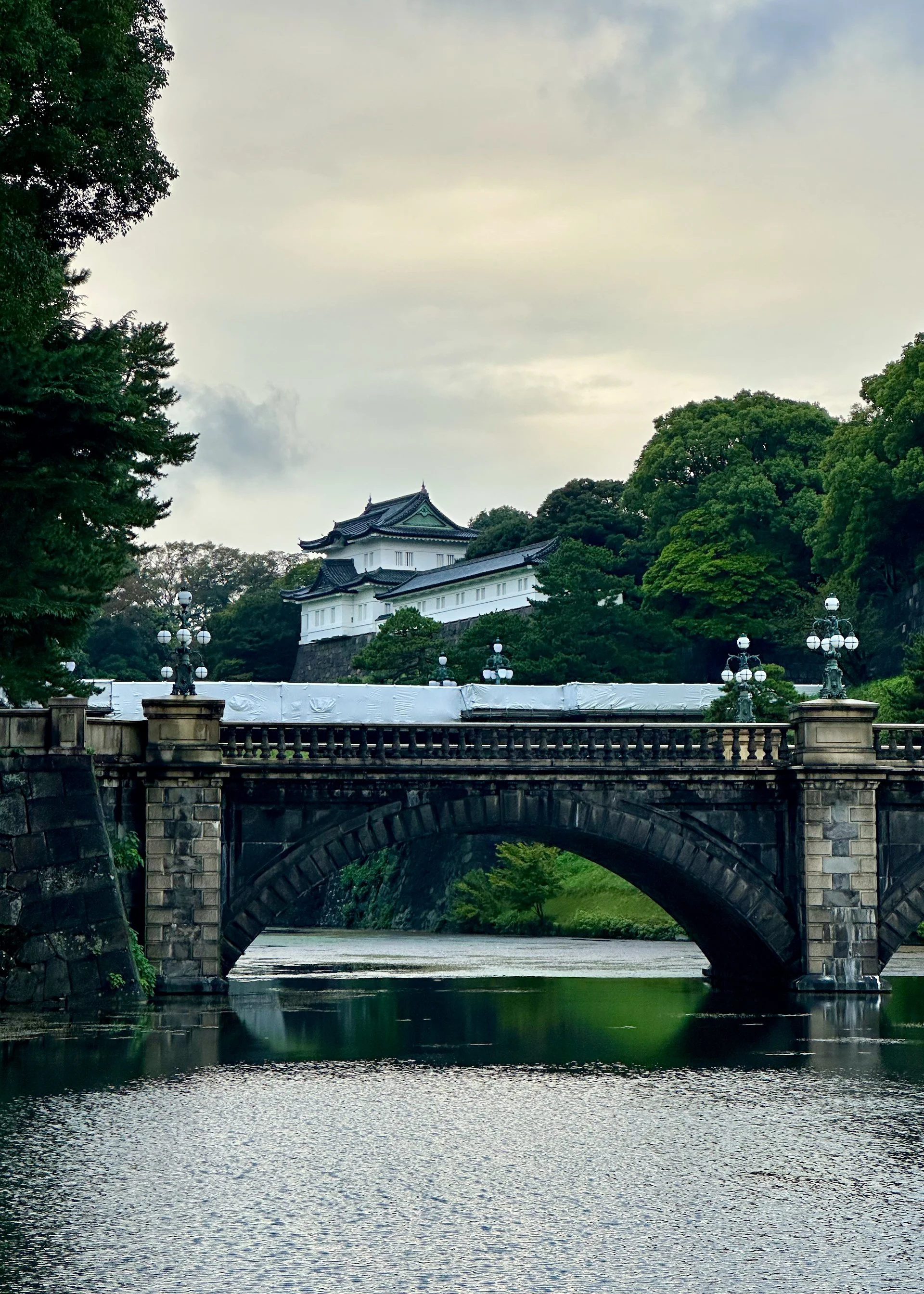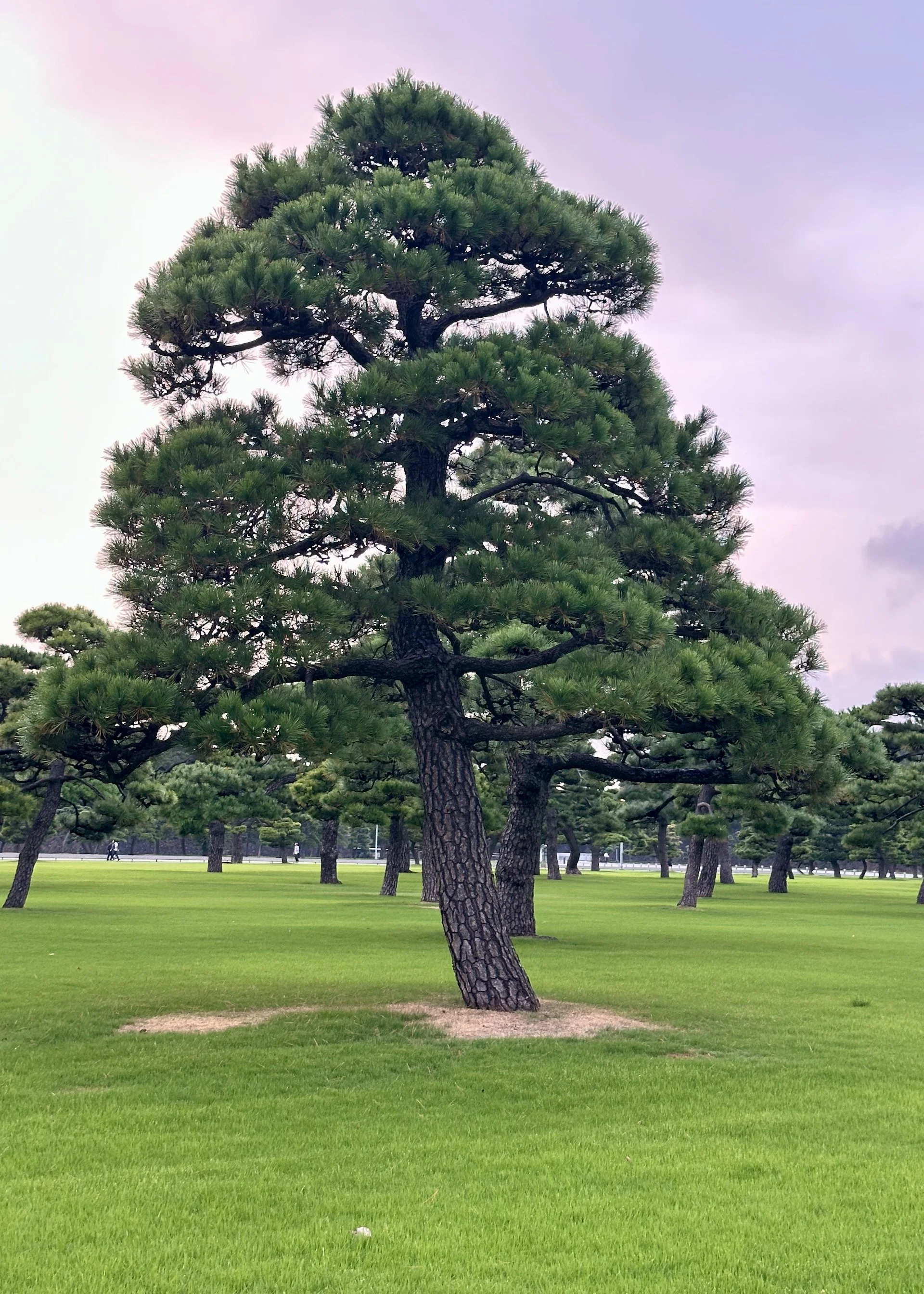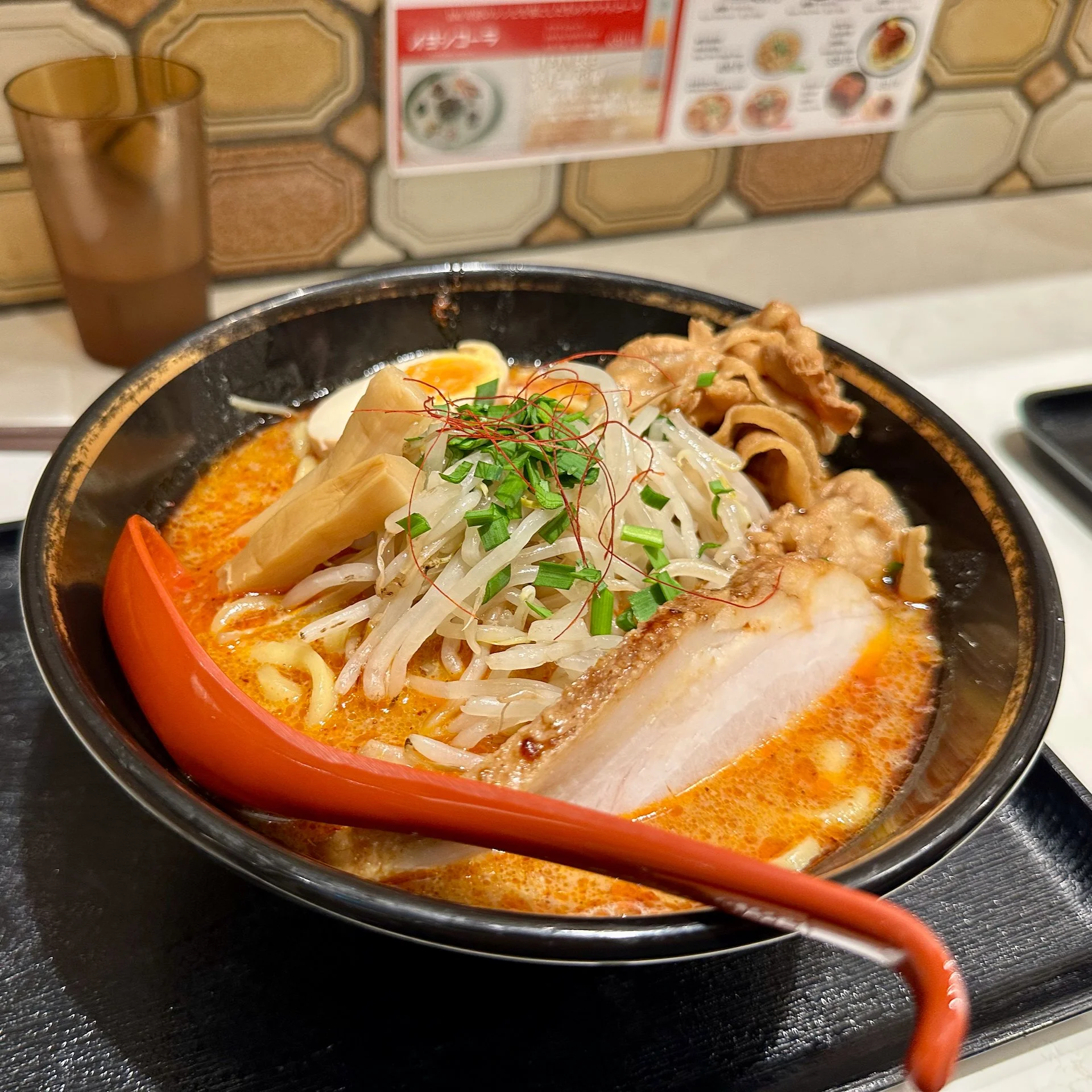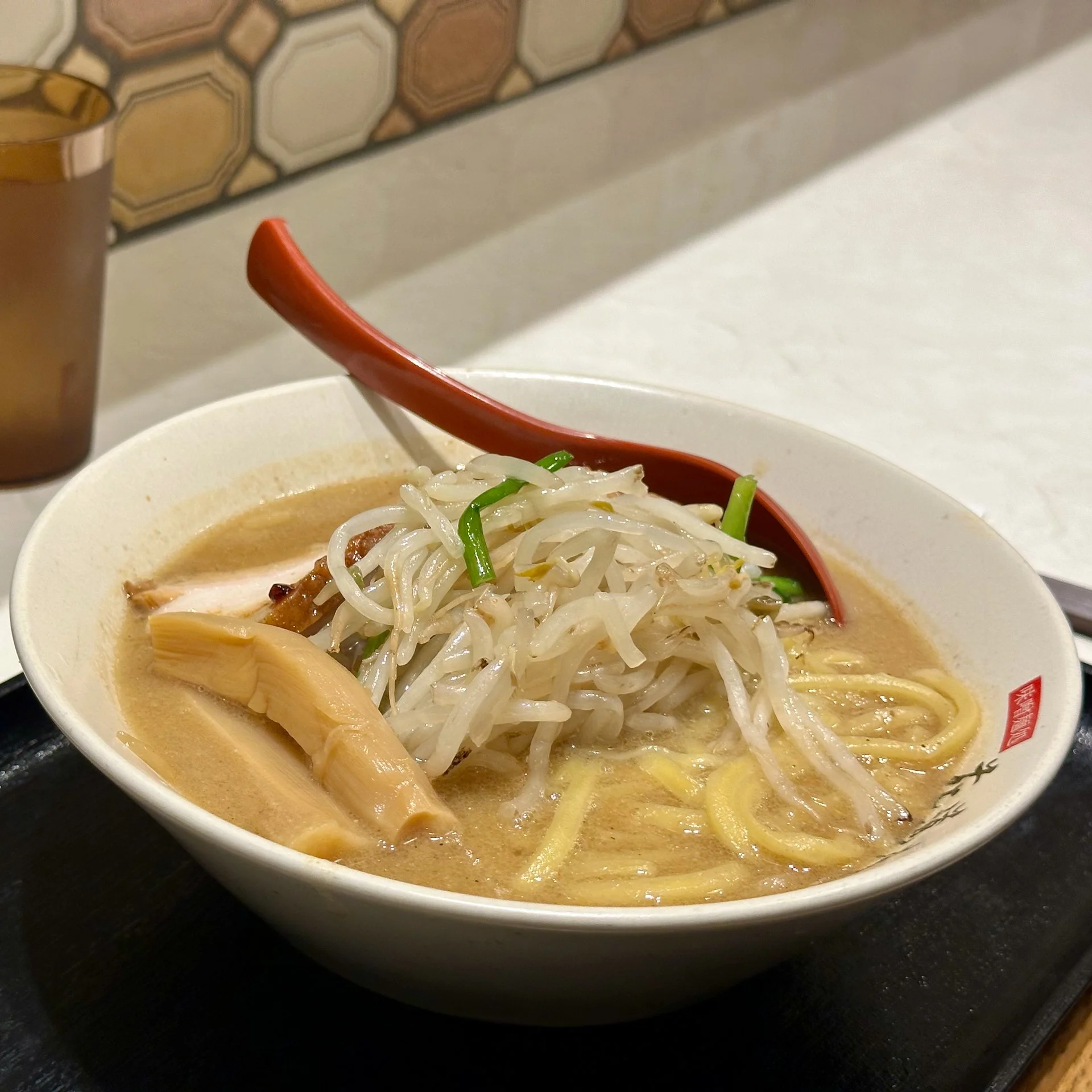Wednesday October 1st
We had another early start to the day on Wednesday. Justine, once again the master travel planner, had managed to get us tickets for the first entry at 8:30 am into TeamLab Planets, one of the most popular attractions in Tokyo. So we had another busy early start, getting out of the hotel around 7:30 to find the bus to take us over to that part of town. It’s actually pretty close to the new fish market we’d been at on our first day.
We thought we were early, but when we arrived there was already a line of a good 30-odd people. While that seemed like a lot, it was nothing compared to the hundreds that were lined up by the time we exited 2 1/2 hours later! I can’t imagine what it would have been like once the crowds started to fill the place up. You have to book a ticket for entry, but you can stay as long as you like. Which is why I was so thankful that Justine had booked an early slot for us, as it would have become unbearable later in the day.
So how do you explain this experience? TeamLab Planets is an intensely immersive, multi-sensory digital art museum designed to dissolve the boundary between the viewer and the artwork. The experience is described by them as "Body Immersive," and we had to remove our shoes and socks for a journey through the distinct areas of the exhibits, barefoot.
The whole experience is structured around two primary indoor areas: the Water Area and the Garden Area, following a generally set path. One of the new sections was Forest, which was more interactive. There was also an outdoor component that we ended up skipping when we were done - it was some shops and food options, but the crowds were getting to be too much.
Our journey began in the Water Area, where we waded through shallow, warm water, typically up to mid-calf. It was an interesting start to the experience. At the top was the Waterfall of Light Particles, at the end of a short incline beneath a seemingly endless digital waterfall of cascading light.
The start was incredibly atmospheric as you walk up this incline, with water cascading down
Waterfall of Light Particles
After that was a weird “Soft Black Hole” where you walk through a room with an undulating, sinking soft floor. It was a bit odd, and not the most interesting part.I didn’t bother with photos of this part. The next room might have been my favorite - The Infinite Crystal Universe. This was a mirrored room filled with countless strings of hanging LED lights, creating the illusion of an endless, sparkling galaxy. There was a kiosk that let influence the light patterns, but it was so cool to just wander through, watching the lights change, and experiencing the “infinite” nature of it. It was mesmerizing.
After that we went into he most famous water room, where you are in water up to your knees, while digital koi fish swim beneath your feet. It’s a very fun experience. I think this was the last “water” room.
It was touch to get decent photos in the darkness.
From there we went into the Expanding Three-Dimensional Existence in Transforming Space. This room is filled with massive, slow-moving, inflated spheres. Pushing or touching the spheres causes them to change color. Despite the number of people around, it did almost feel like you were alone, surrounded by the balls most of the time.
Next up was Floating in the Falling Universe of Flowers, a dome-like space where you lie down or sit on the mirrored floor, surrounded by a projection of a hyper-realistic, constantly changing floral lifecycle—flowers bloom, wither, and scatter in perpetuity. We learned later that the art is being rendered in real-time, never repeating. It’s not just a looping video - pretty amazing.
Like with the koi room, taking photos in this dark, swirling flower imagery proved difficult.
After leaving this section we went into the Forest, which had two exhibits - Catching and Collecting Forest and the Athletics Forest. We started with the Catching and Collecting Forest. The space is an immersive digital forest inhabited by projected, animated representations of extinct animals. When you approach or touch an animal, it will react by turning or running away. You use a dedicated smartphone app to “catch” the animals. Neither of found that this worked particularly well - their only real miss frankly. But still, the environment was spectacular and the displays (also rendered) was incredible.
The Athletics Forest a complex, multi-dimensional space designed to encourage "High-Dimensional Thinking with the Body." Unlike the previous installations, this area is actively physical, requiring you to use your entire body to explore and change the digital art. There were a series of rooms that you explored. The highlights included elastic stepping stones that challenge your balance and swing as you cross them (bosu balls) and a jungle gym-like installation where you must balance and climb on a sequence of suspended horizontal rods that hang from ropes, floating in a three-dimensional space.
After getting a bit active we headed into the third section of the museum, the Garden Area, focuses on botanical themes. We started by heading outside into my favorite of the two areas, the Moss Garden of Resonating Microcosms, an outdoor space filled with reflective sculptures that light up and emit a resonating tone when pushed or touched, with the light spreading to neighboring ovoids. As it was morning, we had a cool, misty experience.
Finally, there was the Floating Flower Garden, an ethereal room filled with over 13,000 real orchids that hang in the air. The flowers sense human presence and move upwards, creating space for visitors to wander beneath them and experience being enveloped by the floral mass. The flowers were absolutely stunning (and you could buy some of them in the gift shop…).
Overall, the experience was tactile, emotionally evocative, and physically engaging, dissolving the traditional distance between us and the art. I went in not really knowing what to expect, but skeptical given the huge amount of hype around the place. I was blown away by the time I got through the Infinite Crystal Universe, and it was probably the best 2 1/2 hours we spent. The time flew by - we did not realize how long it had been, we were so caught up in all the exhibits.
After exiting (and gawking at the huge line to get in), we decide to get back on a bus and go back to the old Tsukiji Outer Market for some more sushi!
This time we picked a vendor off the street that had fresh tuna and we dug in. It was delicious - and a bit later in the morning than our last sushi.
After having some sushi, we decided to head up to Ryōgoku, the area of Tokyo where the Ryōgoku Kokugikan Sumo Arena is located. We had just missed the September tournament, which would have been something to behold. But we thought we’d go off the beaten path a little bit and wander the area. Plus Justine had it in her head that we’d see Sumo wrestlers riding bikes to the stadium for training. As cool as that would have been, it did not work out for us.
We got off the subway and immediately were awestruck by this massive museum! The Edo-Tokyo Museum is a massive museum dedicated to the history and culture of Tokyo, from its days as the feudal city of Edo to its modern transformation. But sadly it was under massive renovations, so we could not check it out. Actually, it’s been under renovations since 2022 and isn’t scheduled to re-open until 2026. As a single building, it must be the biggest museum I’ve ever seen.
Edo-Tokyo Museum
As we were walking around, we noticed a cool building that ended up being Tokyo Memorial Hall. Yokoamicho Park, this beautiful little park, has three main structures, and is a solemn and important monument dedicated to the victims of two of the 20th century's greatest tragedies that devastated the city: the Great Kantō Earthquake (September 1, 1923) and the Great Tokyo Air Raid (March 10, 1945).
We noticed Tokyo Memorial Hall as we wandered.
The Hall functions as a columbarium (a place for the storage of urns) and a memorial to honor and repose the spirits of the many unidentified and unrecovered victims of both disasters.
The peace monument is dedicated to the victims of the Air Raids. The last one (which we did not see) was the Tokyo Reconstruction Memorial Museum, which displays artifacts and photographs from the two tragedies. It was an unexpected find on our walk, and a beautiful spot.
The Peace Monument dedicated to the victims of the WWII Air Raids.
Kitty-corner across the street was Yasuda Gardens, this tiny, lovely little garden that we spent some time strolling around.
After that, we walked up the street to check out the Sumo arena. It was closed up, so we just had to look from the outside.
Across the road from the arena was the Sumida River and we noticed that there was a river boat that would take you about 15 minutes upstream and drop you off close to the Senso-ji Temple. That stop was also close to our next destination, the Asahi Brewery Headquarters and their 22nd floor bar. The next boat (for which tickets were available) was only 30 minutes later. It had started to rain, and the area near the boat was under the highway, so we figured we just have a rest and wait for the next trip.
The trip up river was nice - not long, and it was raining. Fortunately, by the time we arrived, the rain had pretty much stopped. The boat dropped us off, and we walked back across an old bridge. At the foot of the bridge was the park that also houses Tokyo Skytree, and so got to see it up close - it’s huge and dwarfs everything else around it!
We were headed to the Asahi Headquarters complex, famous for its unique and controversial architecture. The Asahi Beer Tower is an amber-hued skyscraper is designed to resemble a giant glass of beer. The tower's mirrored, golden-tinted glass evokes the color of beer, while the white upper section is meant to represent the frothy head of foam. The shorter, black building next to the headquarters is the Asahi Beer Hall (also known as the Super Dry Hall), which is famous for the sculpture on its roof. According to Asahi, the 360-ton golden object represents the "burning heart" or "burning passion and drive" of the Asahi Beer company as it leaps into a new century. The black building below it is meant to be the pedestal for the flame. Due to its unusual shape—a large, undulating, golden blob—it has been affectionately (or mockingly) nicknamed "Kin no Unko" by locals, which translates to "The Golden Turd". It’s pretty easy to see why.
But the reason we were ther was the Tenbo Lounge Asahi Sky Room, located on the 22nd floor of the main Asahi Beer Tower (the "beer glass" building). The lounge offers a fantastic, unobstructed view of the surrounding city, including the entire Tokyo Skytree. We went up and were able to get a great seat at a window and had a couple of beers and some snacks. The bar chips were caviar flavoured, which was interesting.
After our snacks we had a late lunch at this pub nearby. It wasn’t great.
From there, we headed back to the subway and took it over to Akasaka. Justine had read something about a Harry Potter display in the subway at that station. And boy was there. But before we got there, we came across a Harry Potter store, a couple of hundred meters away.
We wandered in and explored for a bit. We bought a few things and continued on. Little did we know how good our timing had been.
The area around Akasaka Station in Tokyo has been transformed into a mini-Wizarding World to celebrate the ongoing stage production of "Harry Potter and the Cursed Child" at the nearby Akasaka ACT Theater.
As you exit Akasaka Station, you are greeted by an immersive entryway. The staircase leading up from the subway is often decorated to resemble the famous, ever-moving staircases of Hogwarts. The plaza features a large, popular photo spot: a permanent sculpture of the Time-Turner from Harry Potter and the Prisoner of Azkaban.
As the weather had tuned back to being nice, we decided to walk back to the hotel. It was a pretty long walk, and as we were passing by the Harry Potter store, there was now a line up to get in! Probably 20-30 people, all lined up and waiting. Crazy.
I’m glad we went in when we did - a line up to go into a store?
The walk took as past the Imperial Palace, but it was late and we were tired, so we continued on to the hotel. The plan was to explore the Palace Grounds tomorrow morning before we shifted hotels to Shinjuku.
For dinner, we continued our exploration of Tokyo Station. A number of people had told us we needed to experience Ramen Street. Ramen Street is a famous concentration of some of Tokyo's top-rated ramen shops, conveniently located within the massive Tokyo Station complex - conveniently right next to our hotel. The concept of Ramen Street is to gather multiple renowned ramen establishments, each specializing in a different style, into one compact "battleground" so that visitors can try a variety of high-quality ramen without having to travel all over the city.
Examples of the different types of ramen available on Ramen Street.
And the place was packed! Every shop had a big line of people waiting to get it. The way it typically works is that you pick your meal in advance and pay for it at a machine. Then you get in line. When you get to the front, they take your ticket, seat you and bring you your order. It’s different but it works well, and they can put a lot of people through.
We picked Hanamichian, and it was delicious.
Not really knowing what we were wanting, we picked the restaurant with the shortest line. I think it was because their machine was broken, so no one knew what to do. But it worked out for us. We ended up picking Hanamichian, which serves Miso Ramen, a comforting and hearty miso ramen, often featuring a Tokyo-style miso with a strong, balanced flavor. Justine got the standard and I got the spicy version. It was delicious!
After dinner we headed back to the room, full and exhausted. We covered a lot of ground today!
Daily Step Count: 19,483 - it seemed like way more!
